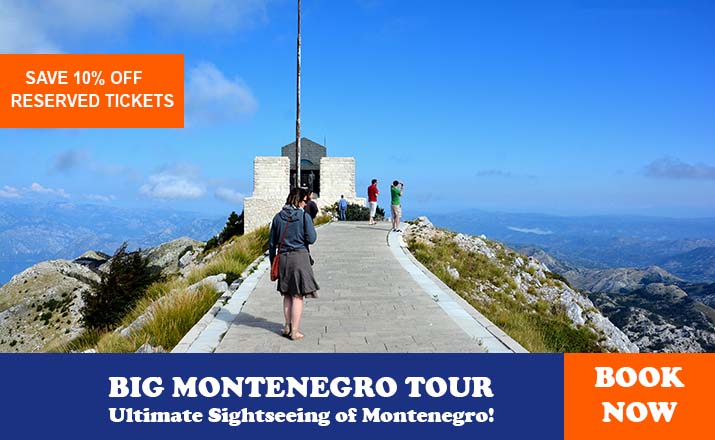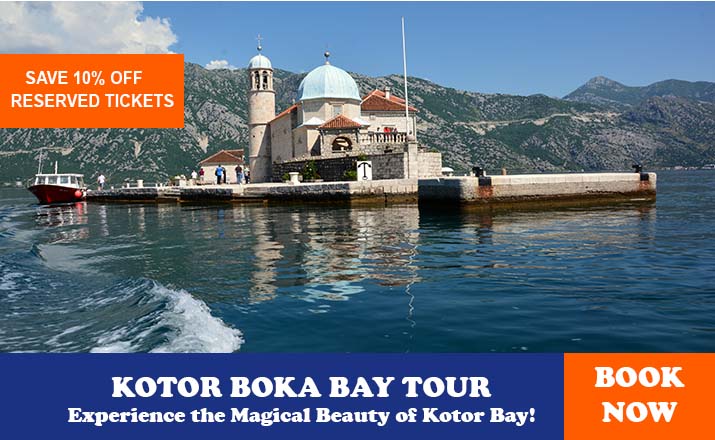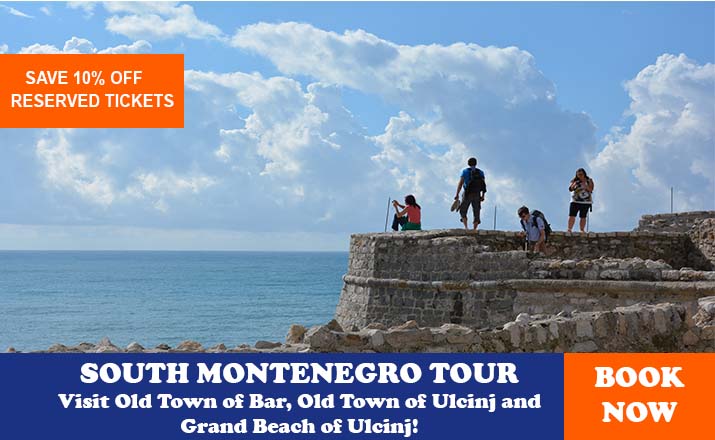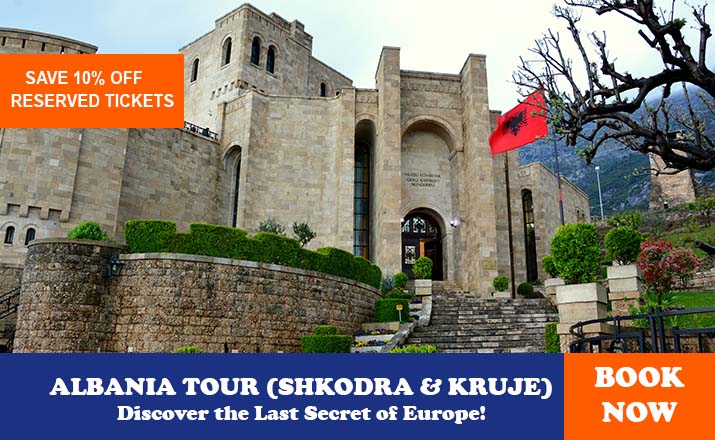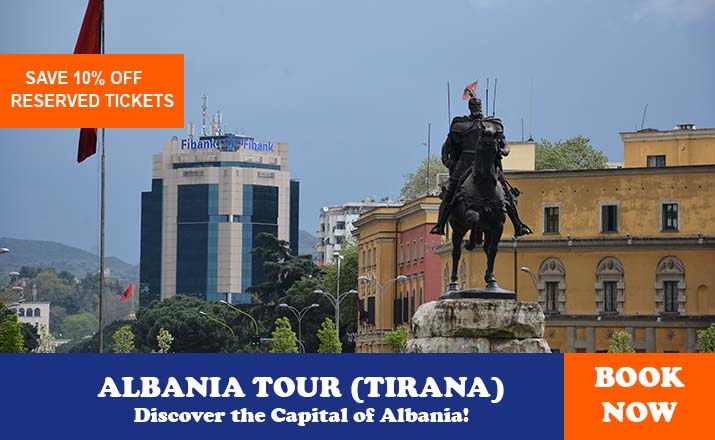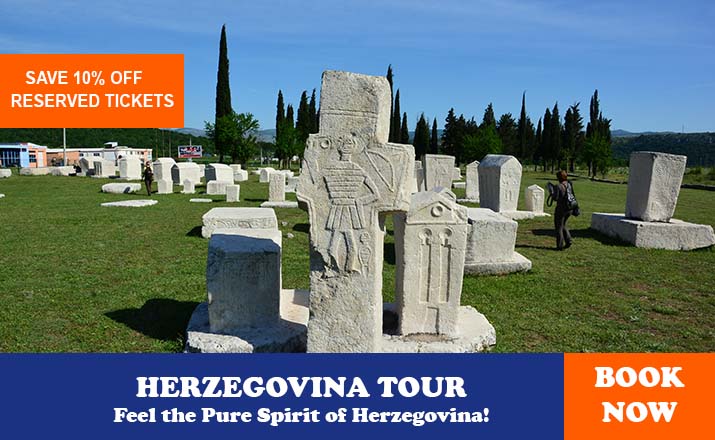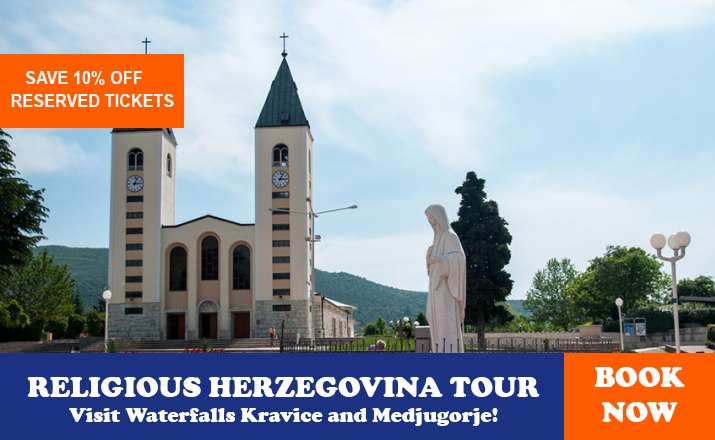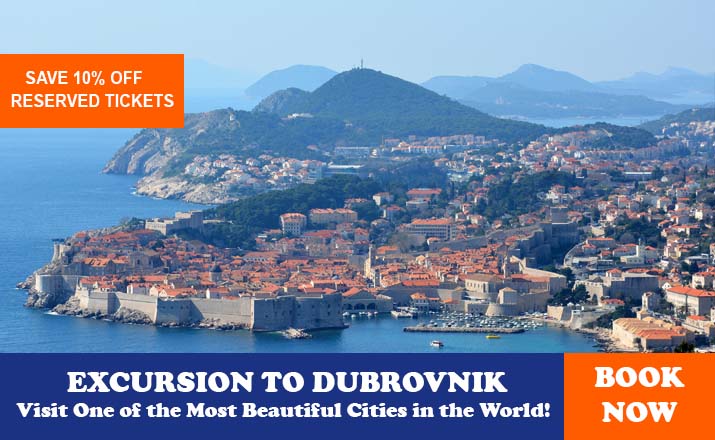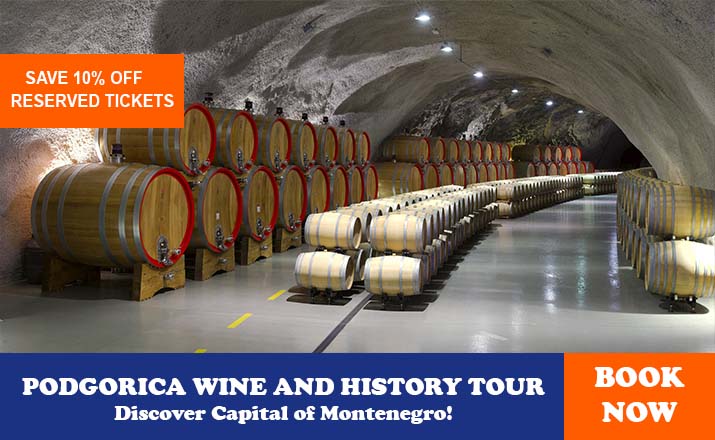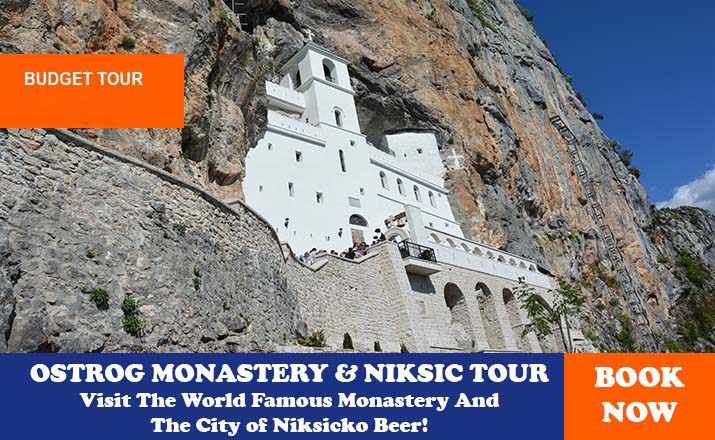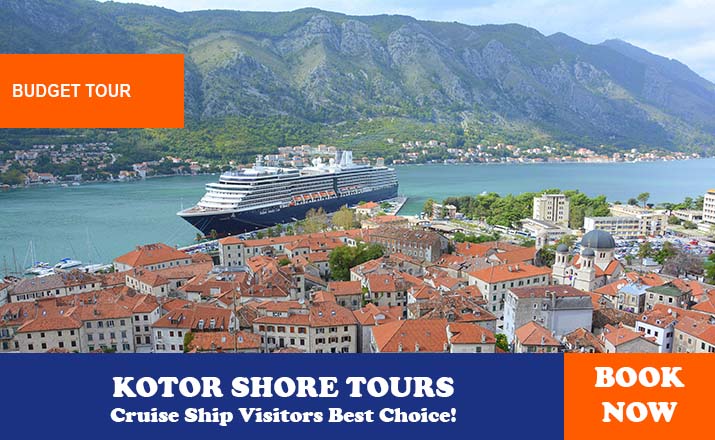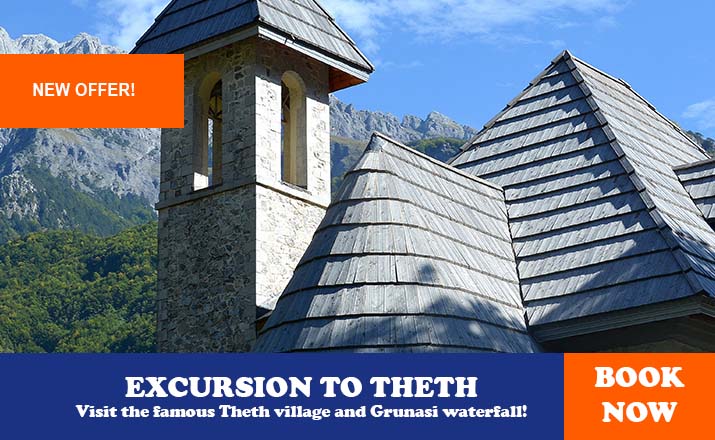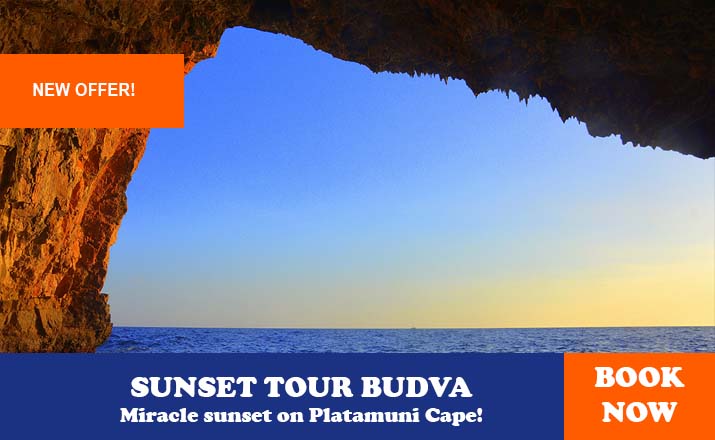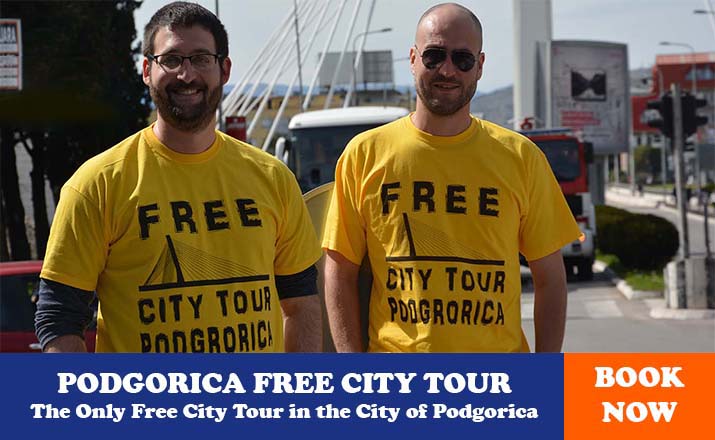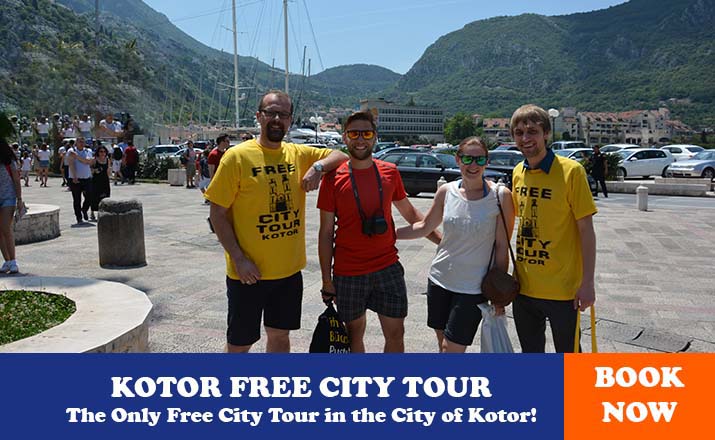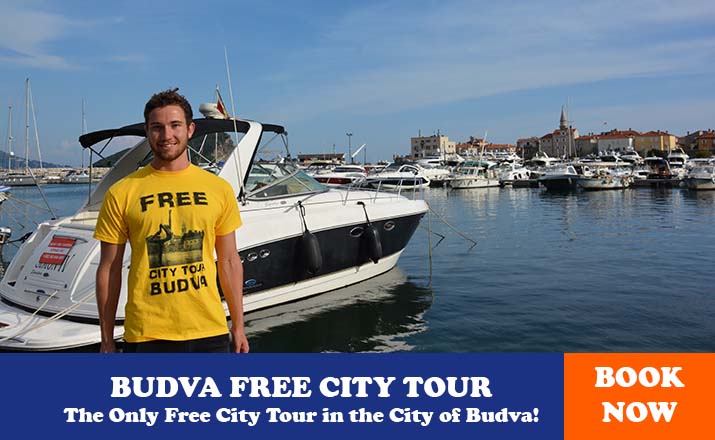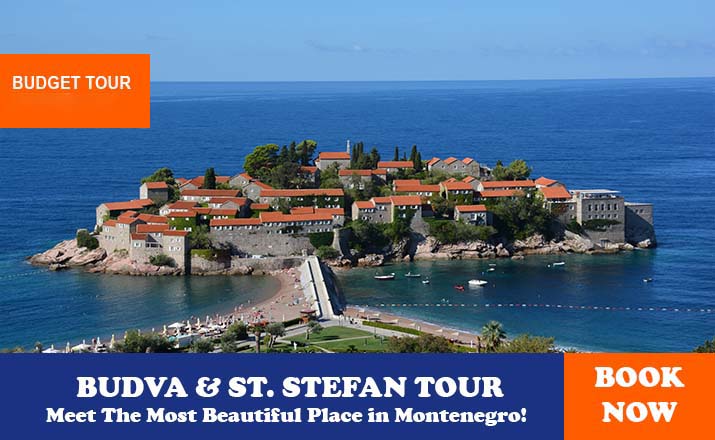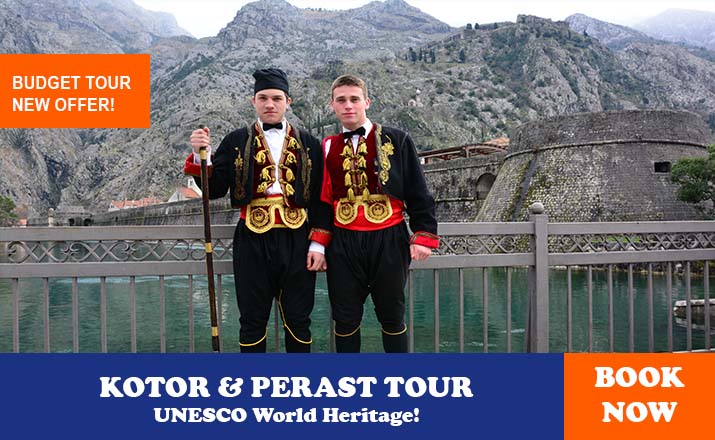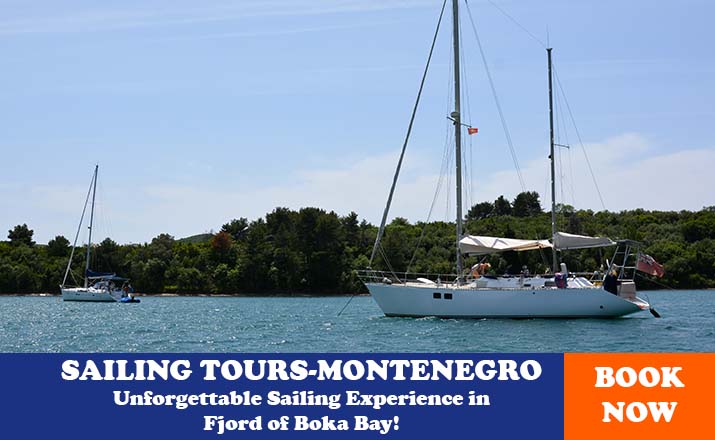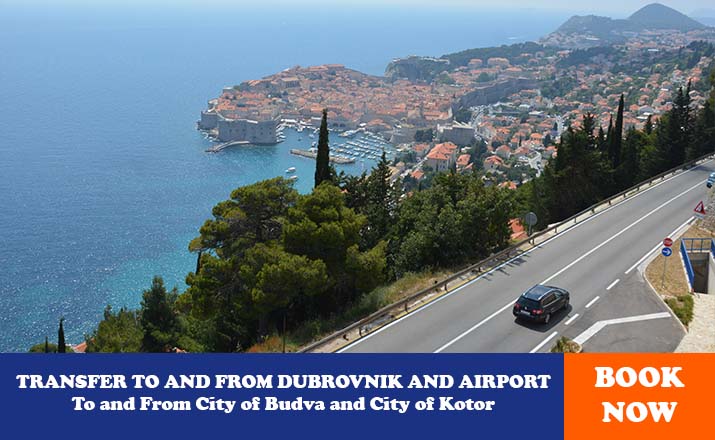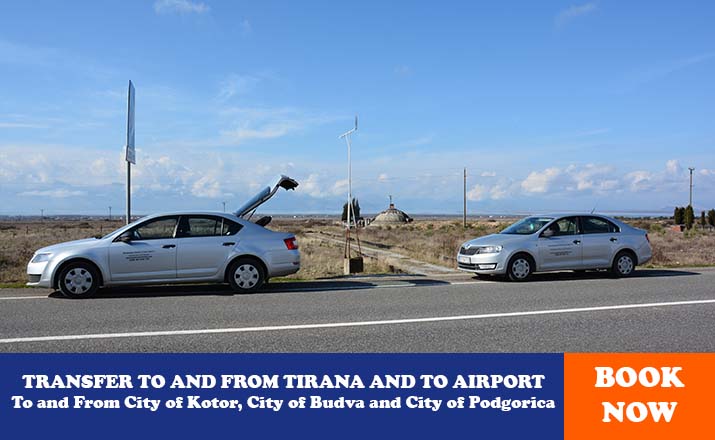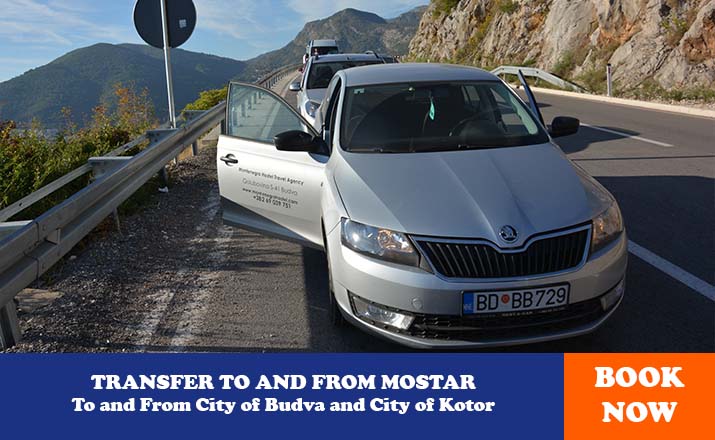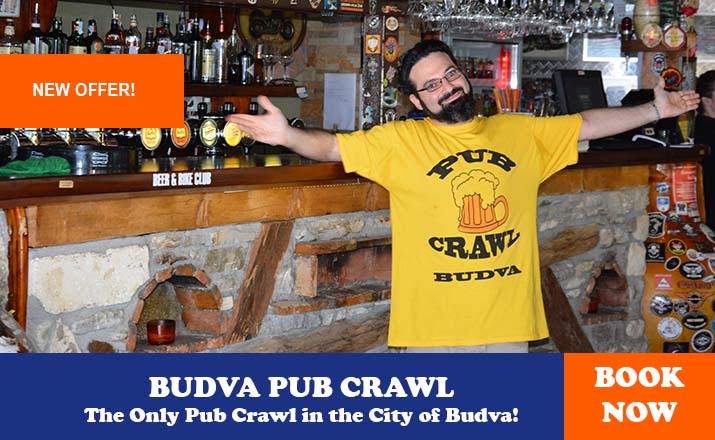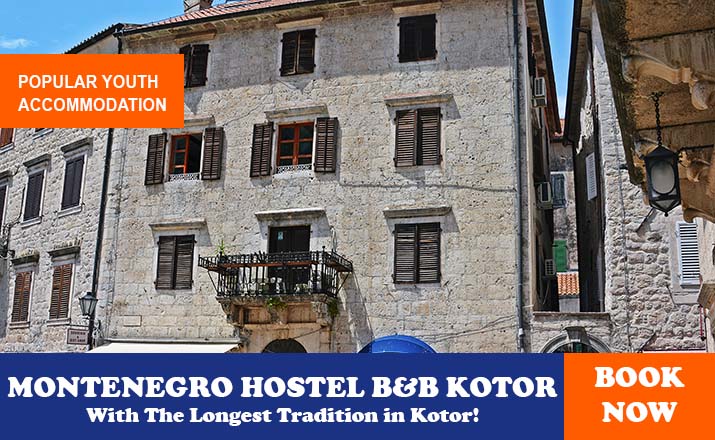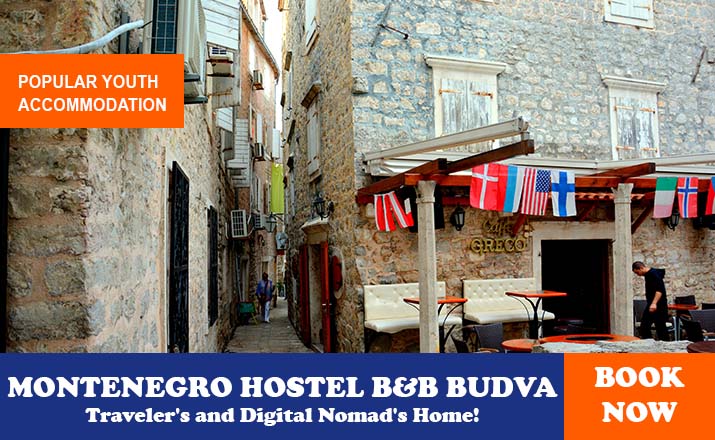CETINJE
MUSEUMS IN CETINJE
NATIONAL MUSEUM OF MONTENEGRO
The National Museum of Montenegro is a complex of institutions comprising five museums: the Historic, the Ethnographic Museum (with the Relief Map of Montenegro), the Museum of Arts, Njegoš Museum (Biljarda-Njegos's residence at Cetinje and his birth house at Njegusi), and the Museum of King Nikola.
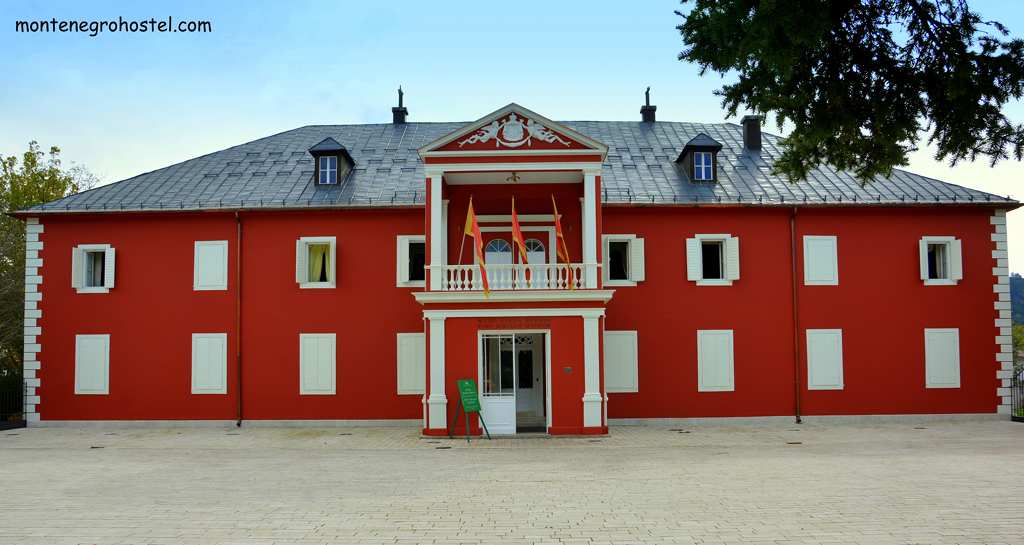
This museum complex also includes the Library and Archives Department with over 100,000 books and over 100,000 documents, the Conservation and Preparation Department, and the Documentation Department. Within the National Museum, there is in place an up-to-date documentation and computer processing system. It also serves as the central office for all Montenegrin museums. As of late, special attention has been given to publishing activities and the presentation of museum exhibits. All units of the National Museum of Montenegro (except for Njegoš's birth house) are located in the historic town of Cetinje. Adjacent, there is also the Cetinje Monastery, housing a rich treasury.
HISTORIC MUSEUM OF MONTENEGRO
It was opened in 1989, as the youngest in the family of Cetinje-based museums. It is housed in the historic building of Vladin dom (Government House), built in 1910. Its permanent display is a testament to the social, economic, political, military, and cultural past of Montenegro, from the Middle Paleolithic to the most recent days.
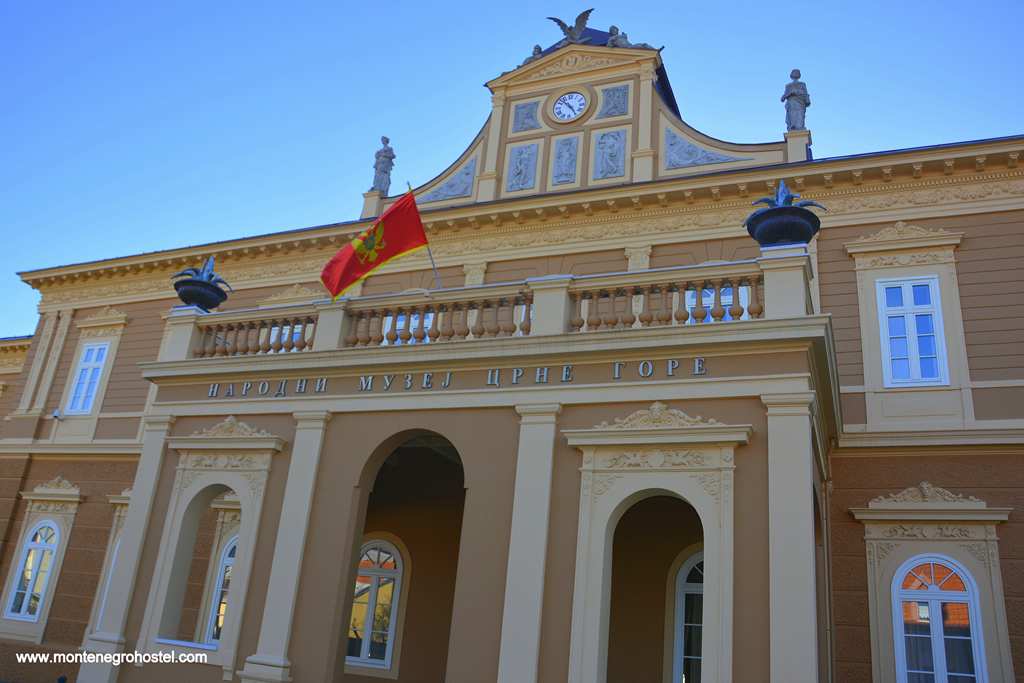
It includes the following collections: Prehistory and Ancient Times, Middle Ages, 16th, 17th, and 18th century, Creation of the Montenegrin State (1796-1878), Modern Montenegrin State (1878-1918), Montenegro (1918-1941), World War II and the Revolution and Post-war Development of Montenegro. Part of the museum's holdings has been temporarily given over to the Historic Museum by the Centre for Archeological Research, the Museum of the City of Podgorica, the Polimlje Museum in Berane, and the Republic Institute for Monument Protection. These holdings dispose of some 1,500 items and over 1,000 (arms, flags, coats-of-arms, seals, archeological, numismatic, and philatelist collections, collection of arts and photographs, etc), which together with the items of once Museum of People’s Liberation Struggle (NOB), make a highly interesting and rich museum exposition. From 1960, the NOB Museum was housed at Biljarda.
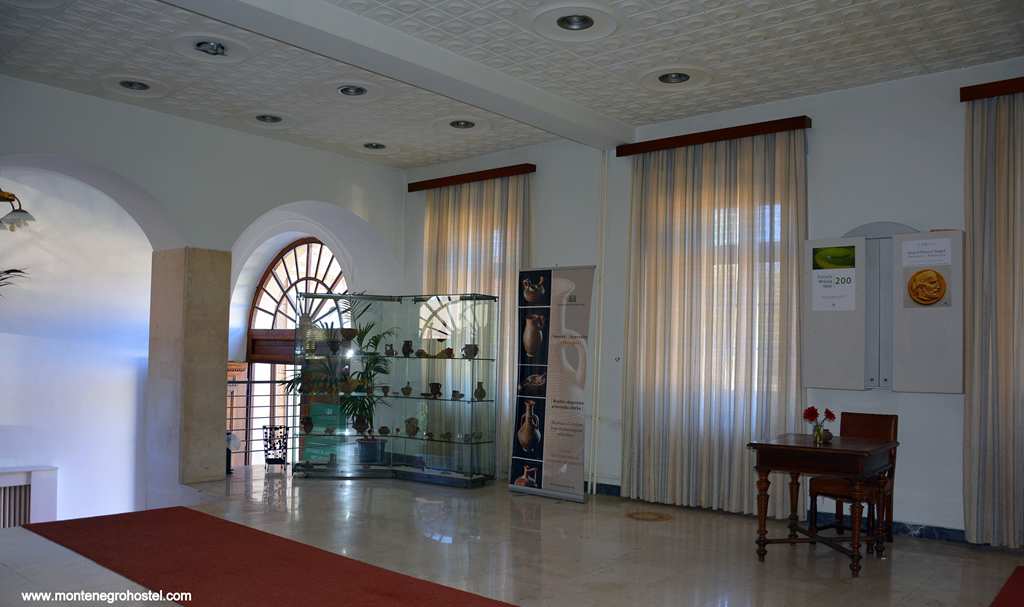
Since its ambition was not only to cover the period of the People’s Liberation Struggle but also the development of the revolutionary labor movement and social events after World War II, it was decided to join the Historic Museum. Within the new museum concept, the display is entitled Revolutionary Labour Movement and People’s Liberation Struggle in Montenegro. The collection of fresco copies, a part of which is displayed at the Museum of History, represents a testimony of the authentic beauty of fresco painting in Montenegrin churches and monasteries, today, unfortunately, for the most part, destroyed by the ravages of time. Nevertheless, the collection provides a significant contribution to the understanding of the cultural development and socio-economic setting of Montenegro from the early 11th century onwards.
MUSEUM OF FINE ARTS OF MONTENEGRO
The Gallery of Fine Arts was established in Cetinje in 1950, aimed to study and monitor the development of fine arts, to collect, preserve, and display artifacts of artistic value, and, by proper selection, to provide a comprehensive overview of the most significant works of art. Initially, it operated within the State Library, and then independently from 1952 to 1963. Then it was integrated with other Cetinje-based museums into the General Museum of Montenegro (Museums of Cetinje, 1965), and eventually the National Museum of Montenegro (1992).
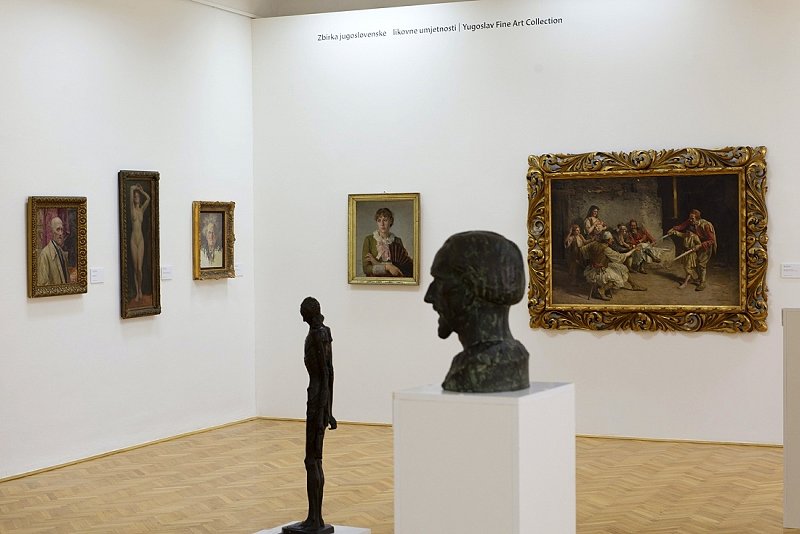
The Gallery of Fine Arts became the Museum of Fine Arts of Montenegro in the 1970s. Its holdings contain about 3,000 items, including some masterpieces of contemporary Yugoslav and Montenegrin fine arts. The diverse and extremely valuable holdings, displayed at Vladin dom, have been divided into ten collections: the Collection of Copies of Frescoes, the Collection of Icons, the Collection of Montenegrin Fine Arts, the Collection of Yugoslav Fine Arts, the Collection of Works by Foreign Authors, the Collection of Milica Sarić Vukmanović and Svetozar Vukmanović Tempo, the Collection of Caricatures, the Collection of Legacies and the Collection within the “Yugoslav Artists to Njegoš” Gallery (fine, applied and naïve arts).
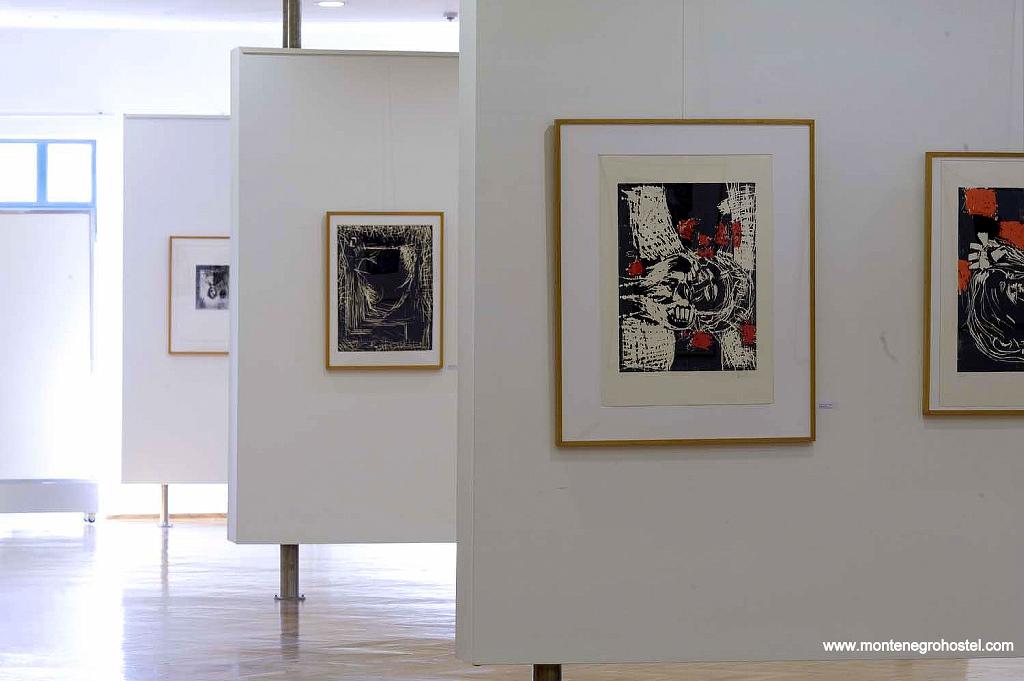
The collection of the Montenegrin Fine Arts holds a greater number of items and gives a panorama of Montenegrin works of art. Apart from the baroque painter Tripo Kokolja, it features the works of renowned artists from the late 19th century to the present day. Thanks to the patronage of the Montenegrin ruler, the first generation of young, gifted people went for studies in the developed fine art centers (Naples, Rome, Athens, Paris, and Moscow). Although mostly relying on already outdated forms of academic realism (Anastas Bocarić, Milo Vrbica, Ilija Šobajić, Marko Brežanin), certain artists like Pero Poček, the originator of Montenegrin Modernism, Đoko Popović, and Špiro Bocarić followed the trends of contemporary European painting (plain air painting, impressionism).
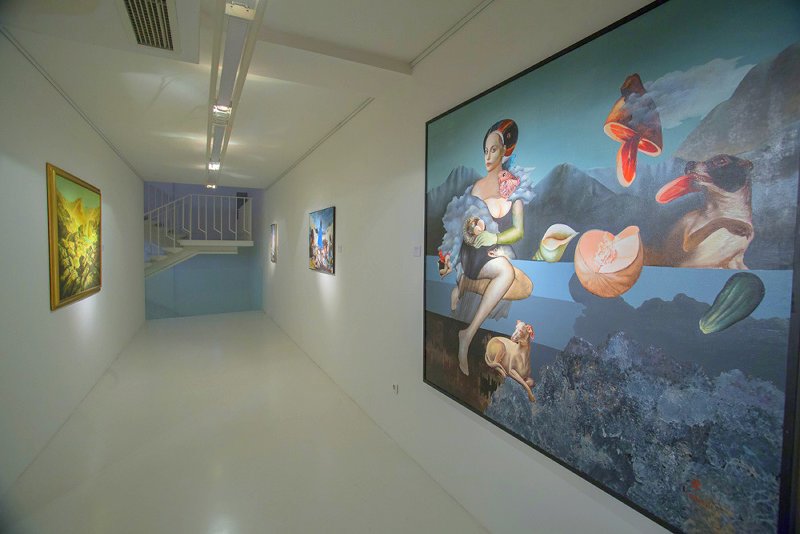
The artistic creation of the first half of the 20th century is represented by the works of artists educated in Belgrade, Rome, Vienna, Prague, and Paris, which may rightfully be said to belong to European Modernism. They accept the new literary expressions: expressionism, Cezannism, poetic realism, intimism, and socio-realistic tendencies (Milo Milunović, Miloš Vušković, Mihailo Vukotić, Jovan Zonjić, Petar Lubarda, Risto Stijović, Savo Vujović). The second half of the 20th century meant a real eruption of the “kindled visual art creation” in which various artists, following their own disposition and expressive capabilities, created a distinctive Art Poetica deeply rooted in the Montenegrin people. The most noteworthy teams are Vojo Stanić and Dimitrije Popović, renowned worldwide. The works of Mihailo Vukotić, Milo Milutinović, Petar Lubarda, Branko Filipović, and Miodrag Dado Đurić, leading Montenegrin artists, without whose contribution it would be impossible to follow the development trends of modern Montenegrin painting, are displayed separately.
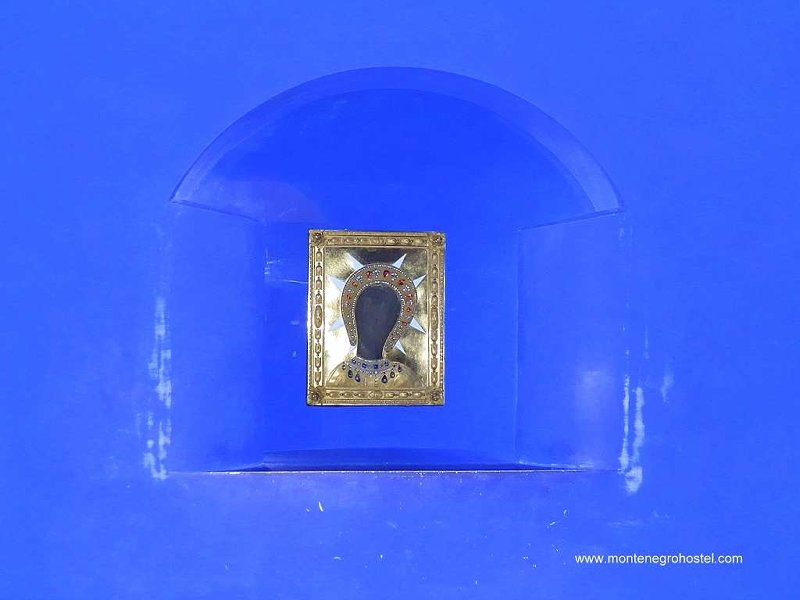
The collection of icons, held by the Museum of Fine Arts, may be classified into three units: the icons of Russian provenience, made late 19th and early 20th century, Italo-Cretan icons from the late 17th and 18th century which arrived in Montenegro via merchant and cultural links with the West, and icons of local masters, made within the icon-painting school of the family Dimirijević-Rafailović from the Boka Kotorska Bay. There are also some paintings of foreign authors with religious topics: The Execution of St. Genevieve from the 17th century and The Holy Family by the Italian painter G.B. Pittoni. In a separate room called the Blue Chapel, the icon of Our Lady of Philermos, one of the major Christian relics, originating from Jerusalem in the early 12th century, is displayed. The robe of the Virgin, adorned with precious stones (sapphires and diamonds) as well as a horseshoe-shaped halo decorated with diamonds and rubies, was made in the early 18th century by the most famous goldsmiths and jewelers of St Petersburg and Moscow.
ETHNOGRAPHIC MUSEUM OF MONTENEGRO
The Ethnographic Museum of Montenegro was established in 1951 at the premises of Biljarda, together with a museum of Njegoš and the People’s Liberation Struggle. Here it remained until the disastrous earthquake in 1979. It holds extremely valuable items from all over Montenegro, illustrating the richness and tangible and intangible culture of the people living within its territory.
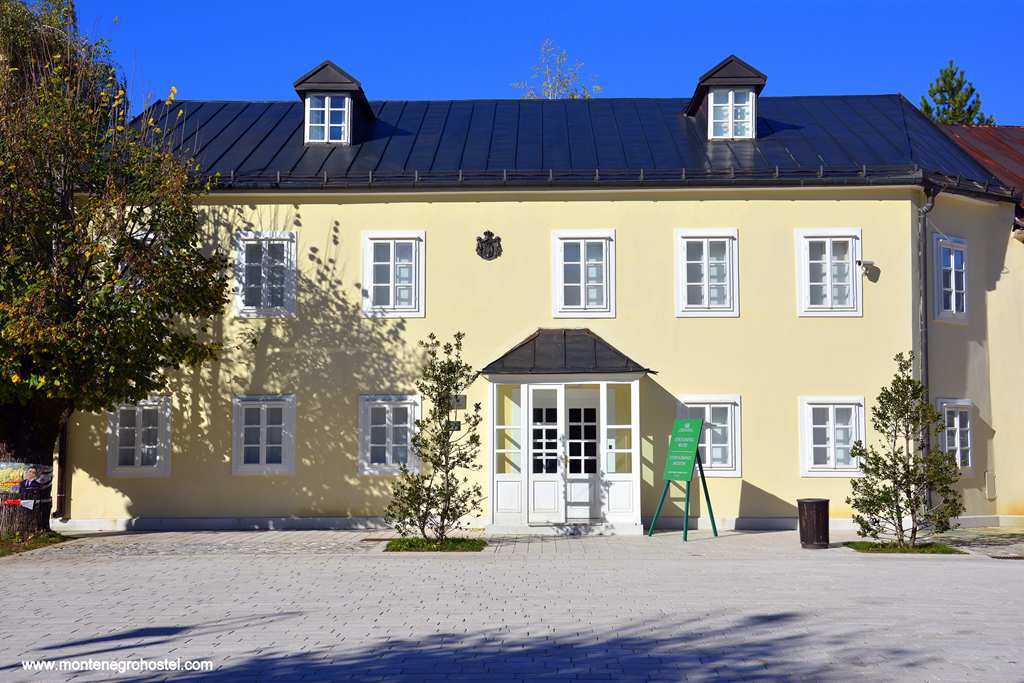
It disposes of a valuable collection featuring economic activities, nutrition, housing, textile crafts, arts, musical instruments, money, etc. The holdings contain some works of folk arts and crafts of high artistic value, bearing witness to the influences of various cultures and styles. The Ethnographic Museum did not have its display area from 1979 to 2002, when it was finally placed within the building of the former Serbian Embassy. It is so designed to enable setting occasion thematic exhibitions, such as Chests in Montenegro From Fibre to Fabric, etc. The exposition is made of items in daily use: folk costumes, mats, coverlets, bags, rugs, prayer rugs, and some fine examples of lace and embroidery.
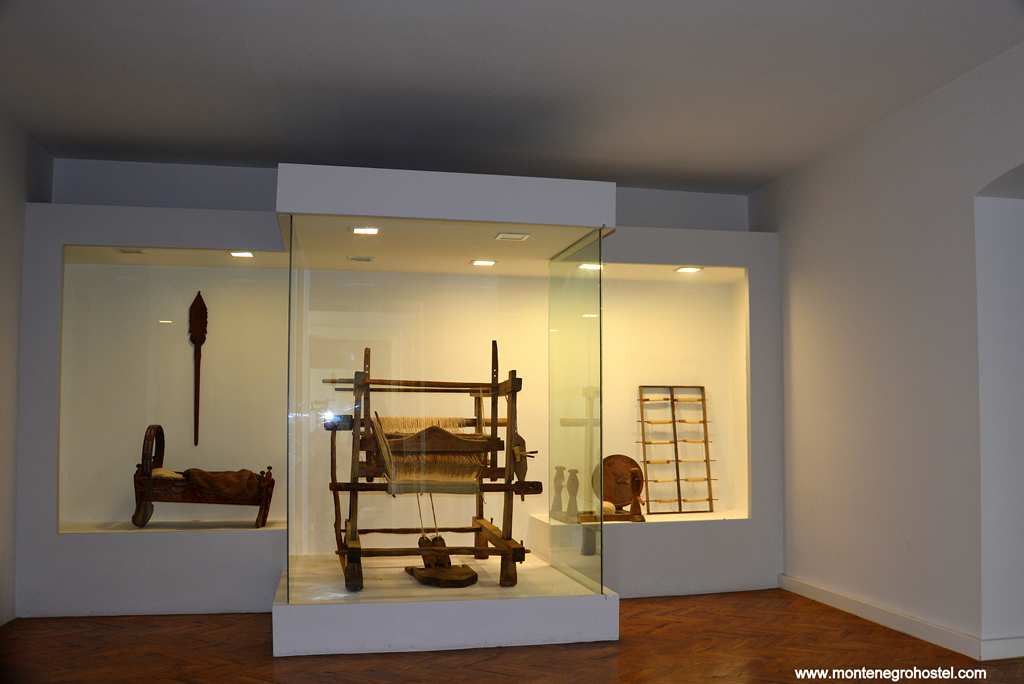
Most of the displayed items represent the supreme achievements of folk art. In textile crafts, the greatest diversity and richness are seen in the marking of rugs and national costumes. Rug-making, particularly developed in the northern region of Montenegro, reflects oriental influences. Several types of folk costumes from various parts of Montenegro are exhibited in the Museum: the one from Boka of Malisors, of Šestani, etc. Some 150 displayed museum items, mostly from the 19th and 20th centuries, confirm the centuries-long multinational harmony in these areas.
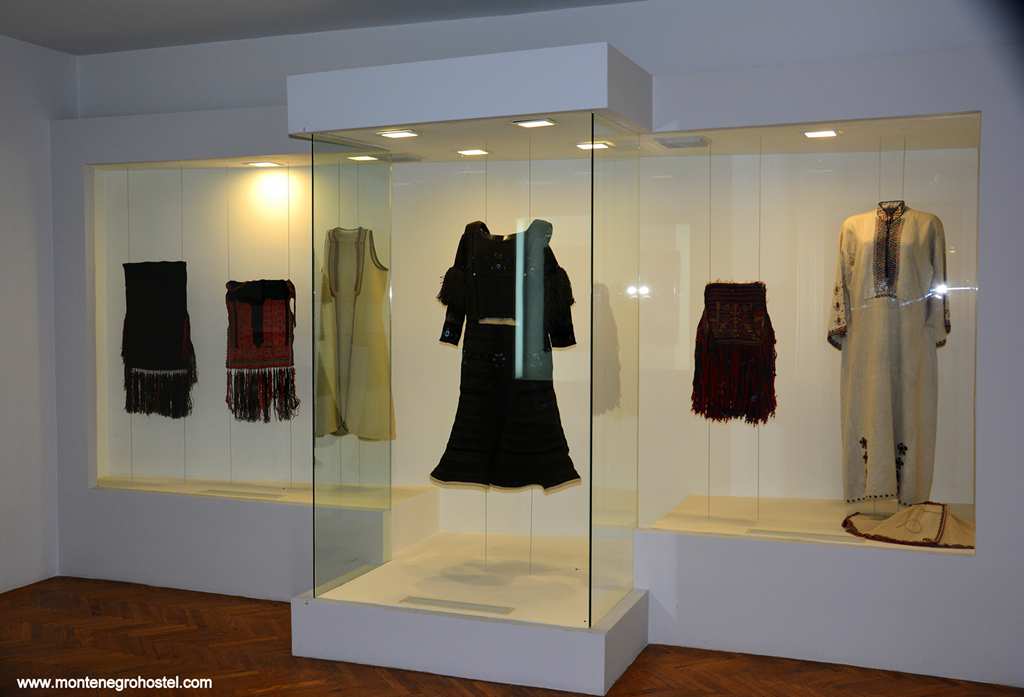
As an integral part of the Ethnographic Museum, located within the yard of Biljarda, there is a pavilion housing the Relief Map of Montenegro. It was made in 1916-17 during the Austro-Hungarian occupation, by some Austro-Hungarian officers wishing to have a better understanding of and be able to exercise better control over the occupied areas of Montenegro during World War One. This topographic relief has a scale of 1:10,000 and was made on a concrete base with dioramic elements. Since it was tailored to suit military needs, the Relief Map of Montenegro is a unique monument of its kind in Europe.
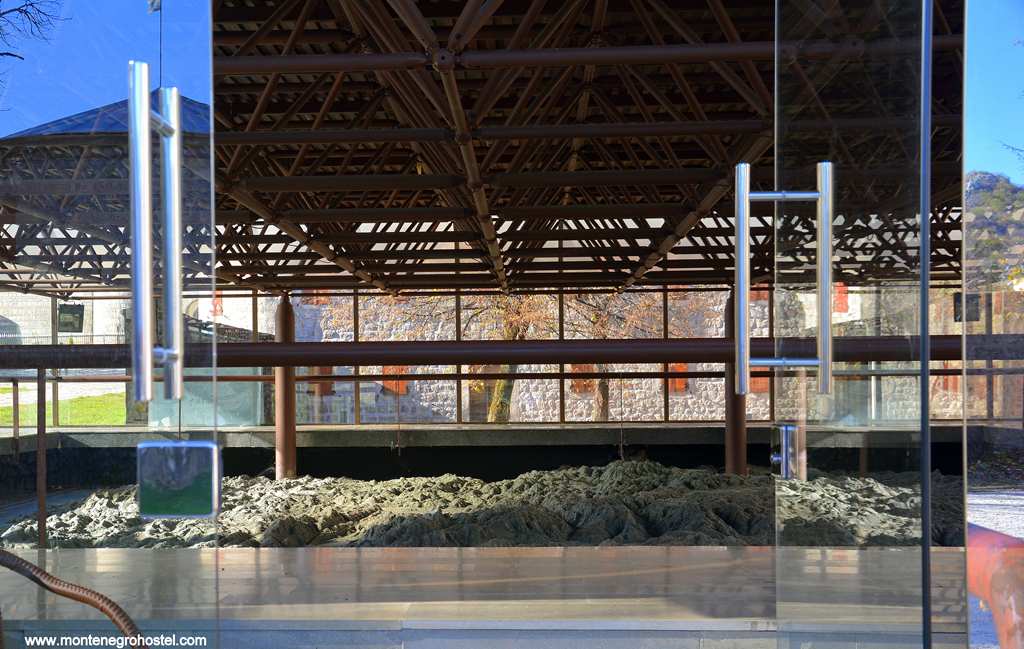
It gives rise to its specific historic and documentary value and the character of a work of applied arts, and thus, in 1961, it was listed as a monument of culture. The Relief Map covers the entire present territory of Montenegro with the adjacent areas. Skillfully painted, it conjures up the magnificent diversity of the terrain. A significant contribution to shaping the relief, apart from Austrian experts of various backgrounds (lieutenant-colonels Mayer and Albert, major Sickel, engineer Miler, sergeant Sugar, and the academic painter Paul Grabwinkler), and Italian officers who were captioned (painters and cartographers), was also given by the famous Montenegrin sculptor Marko Bežanin. The modern construction above the relief was built in 1979, with a guideway around the whole relief map. At the same time, the necessary conversation and restoration works were done.
NATIONAL NJEGOŠ MUSEUM (BILJARDA)
Njegoš’s Museum is housed in Biljarda, the residence of Petar II Petrović Njegoš, built in 1938, near the Cetinje Monastery. It was named after billiards, a favorite game of Njegoš.he design of Biljarda was done by Russian diplomat Jegor Ozereckovski. It is a one-story building with a stone wall, a fenced yard, and four towers on the corners, well located within the spacious yard.
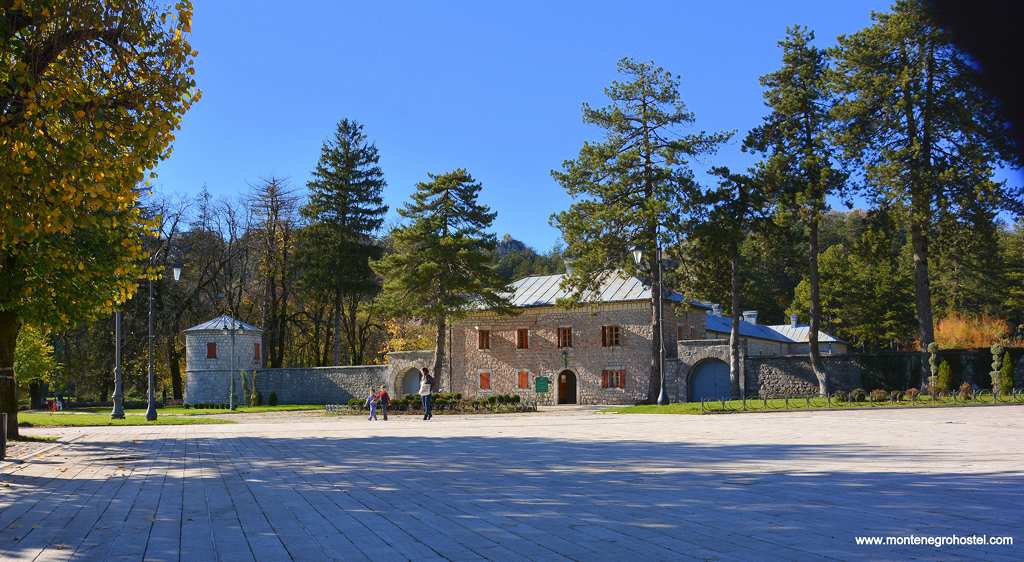
Biljarda had all the features of a fortified castle. In time, it has undergone several radical changes. It was only in 1951, on the one-hundredth anniversary of Njegoš’s death, that the whole edifice was reconstructed. Its authentic appearance was restored, except for this part, where the Austrians built the Relief Map during World War I. Apart from serving as the residence of Petar II Njegoš, Prince Danilo, and King Nikola, Biljarda also housed many state institutions. For a time, the Negoš’s printing house, a grammar school, a theological school, and briefly also the Girls’ Institute operated there. The early 20th century housed various ministries.
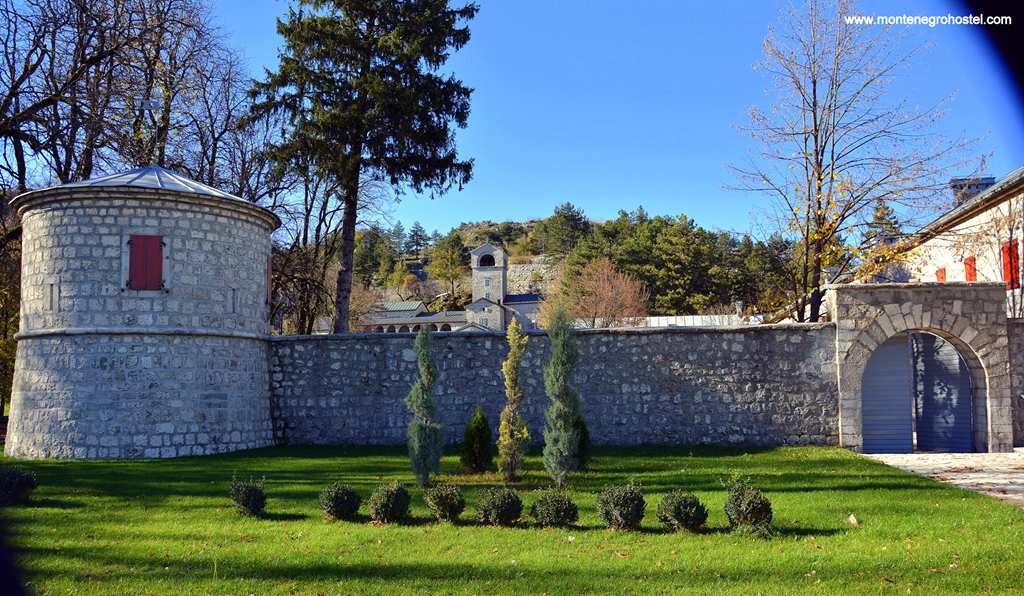
However, Biljarda is largely associated with Njegoš. There he made his magnificent works, governed the state, and hosted many famous people in the politics and cultural life of Europe of his time. Today, Biljarda is the place where one may most powerfully experience the time and circumstances in which the greatest Montenegrin poet lived. On the occasion of the hundredth anniversary of Njegoš's death, a memorial museum was opened in Biljarda displaying many items linked to him personally and to Montenegro of his time. Today, the museum's display is housed on the first floor of this edifice, while the ground floor is used for various cultural events. The oldest edition of Njegoš’s works, the original letters, and related notes are also displayed here.
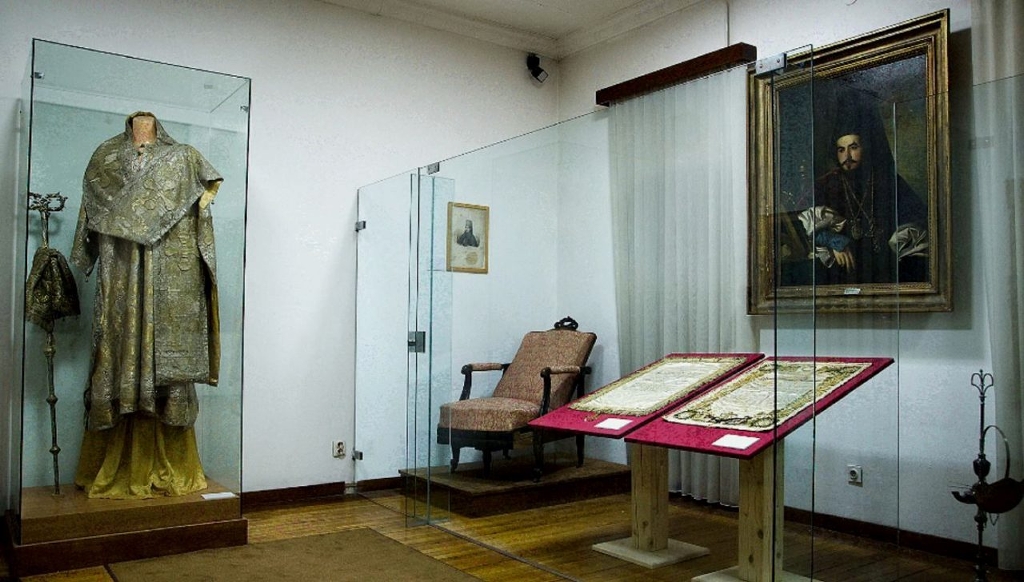
Njegoš's best-known work, Mountain Wreath, with all the 19th-century editions and subsequent translations into foreign languages, occupies the central place. This room is further adorned with the work of art inspired by Njegoš, whose creators were famous artists such as Josip Tomnić, Johan Bes, Pero Poček, Ivan Meštrović, Risto Stijović, etc. Some authentic items illustrate radical reforms of the political and economic life conducted at the time of Njegoš’s rule. There are some pieces of the original furniture, the prince–bishop’s gown, a chair for rest, etc, on display. The exposition is dominated by a rich library containing, in addition to his own, also the works of Petar I Petrović Njegoš. The holdings also contain books in various fields of social sciences: philosophy, history, and literature, written in different languages.
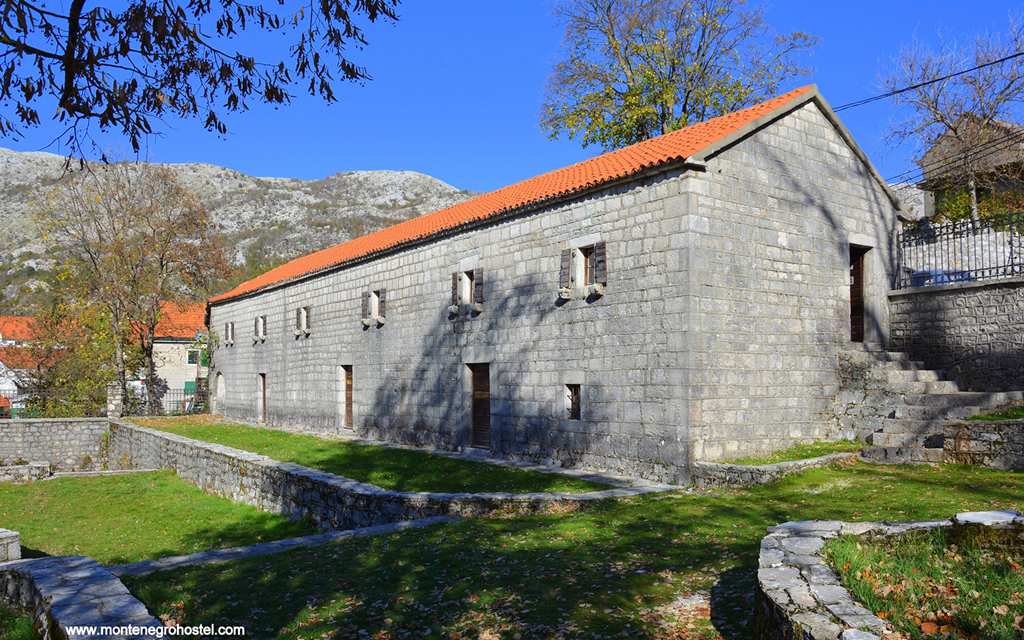
The original manuscript of the Mountain Wreath (1847), Njegoš's golden fountain pen, the inkstand, and several personal items are displayed in a separate china cabinet. There is also Njegoš's billiard table displayed in the billiard room, the one after which the whole building was named. The display contains a visit of Josip Broz Tito to the Museum as a sign of respect for the personality and the work of the Montenegrin poet and statesman. Njegoš's birth house is located in the little hamlet of Erakovići in the village of Njeguši, on the very road leading from Kotor to Cetinje. It was built by Njegoš’s uncle, Petar I Petrović Njegoš, around 1970. It was adapted in 1973 and has the status of an ethnographic memorial building.
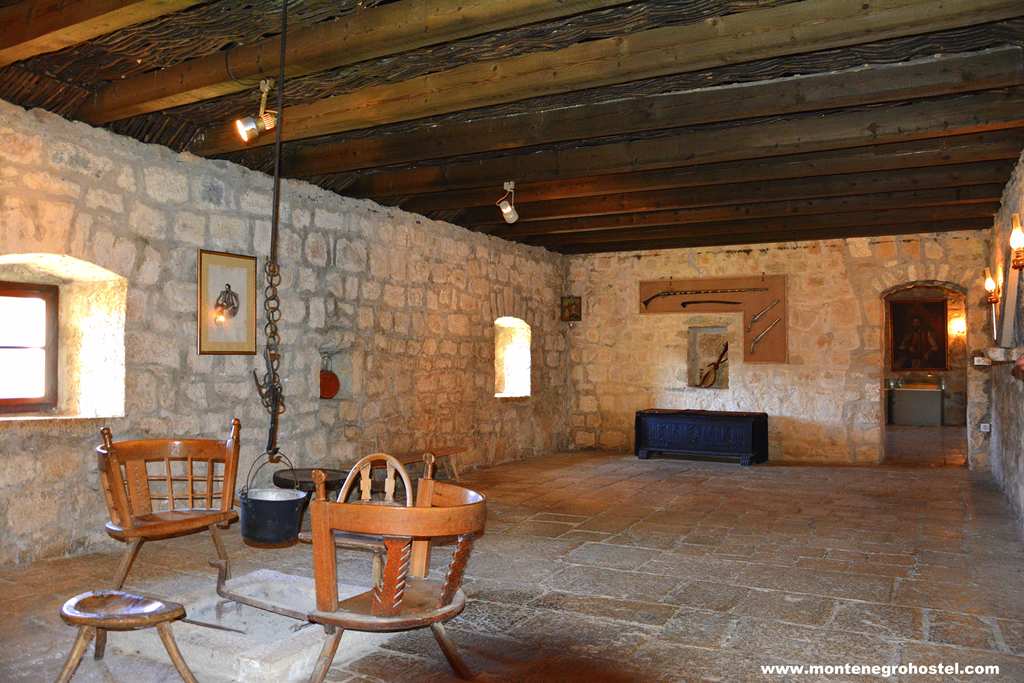
Today, it houses exhibits depicting the way of living back in Njegoš's time. Numerous and diverse items are on display: works of art, some authentic furniture, cutlery, sumptuous weapons, works of bishop-princes, and statesmen from the house of Petrović Njegoš. The central position is occupied by a stone hearth with cookware. The whole area is adorned with valuable works of art, thematically linked with the Njegoš Dynasty. An array of farming tools is an integral part of the exposition.
MUSEUM OF KING NIKOLA
King Nikola’s Museum was established in 1926 within the residence of the last Montenegrin ruler, Nikola I Petrović Njegoš, continuing the tradition of collecting, preserving, and cherishing the national cultural heritage. The construction of the building commenced in 1863 and was completed in 1867. Unfortunately, the names of the main architect and the first builders remained unknown.
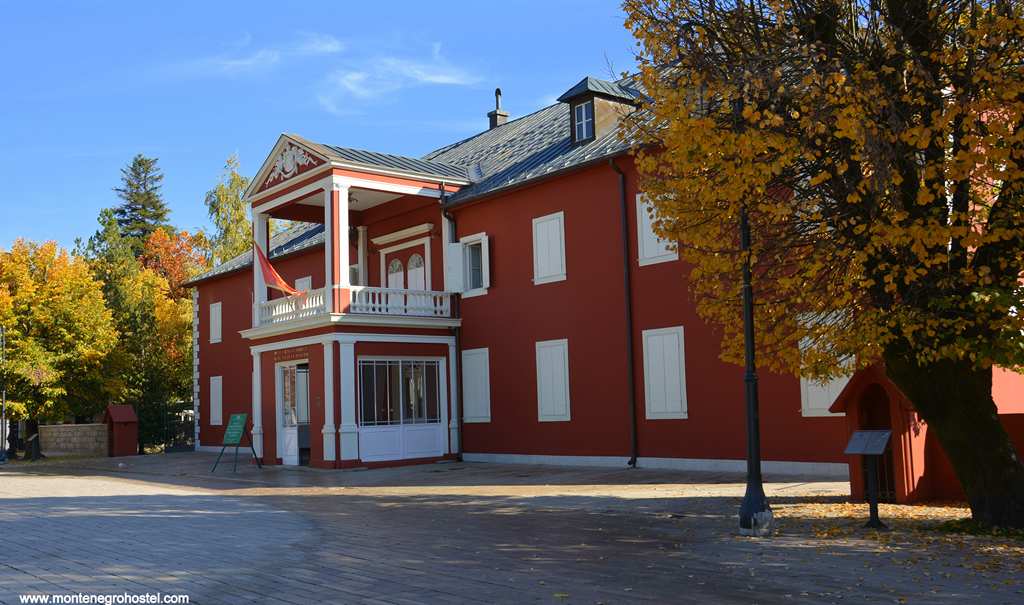
Originally, the building was intended as a residence for the widow and daughters of the late Prince Danilo. Since Princess Darinka, however, decided to leave Montenegro, this edifice was given a new function. The members of King Nikola's family moved from Biljarda to this new palace, which as Montenegrins used to call. Throughout its existence, the ruler’s residence has undergone several significant reconstructions, always aspiring to preserve its original simplicity and unimposing interior and exterior.
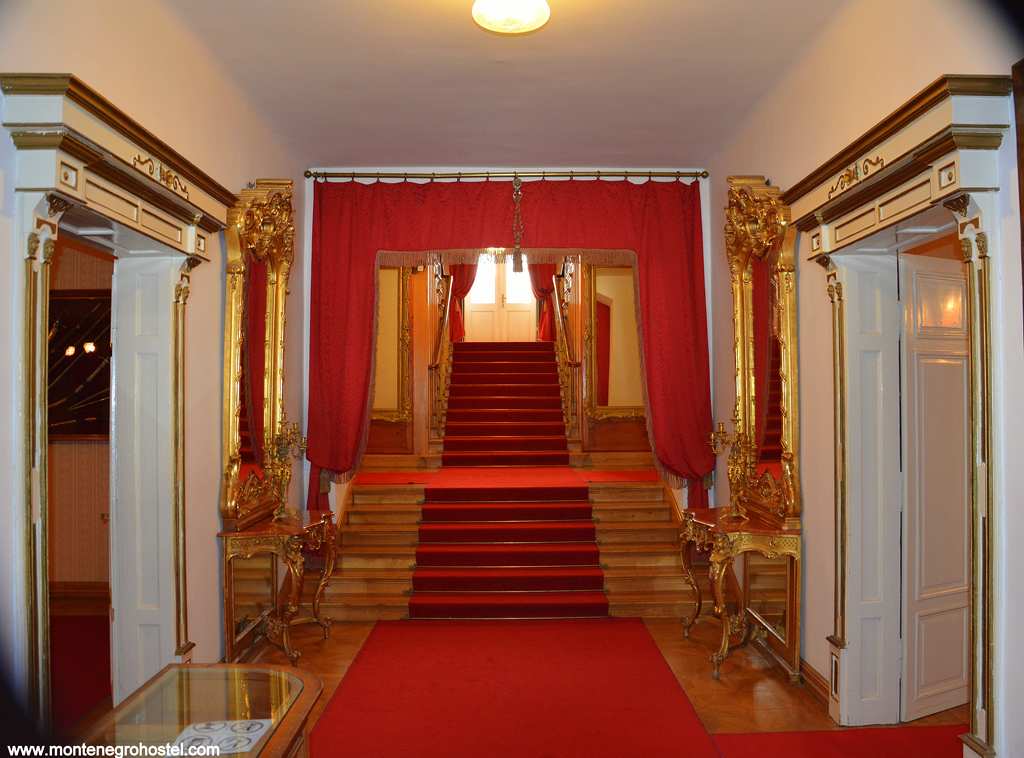
The last major adaptations were done before the celebration of the golden jubilee in 1970, when the building was given its today appearance. Many foreign publicists, travel writers, and scientists, staying at the Montenegrin capital, left precious testimonies, often even artistic testimonies, of the Montenegrin court. The newly established State Museum (today the King Nikola’s Museum) united the holdings of the Military and the Folk museum, the institutions established in the 19th century, as well as preserved inventory from the Montenegrin dynastic residences. Thus, early on in this operation, gathered at the same venue the most significant museum items related to the political, military, and cultural history of Montenegro.

The museum provides continuous insight into Montenegro's state history, from Mid Ages to 1918, when it disappeared as an independent state from the political map of Europe. The permanent display here is designed as the reconstruction of the interior of the ruler’s residence, with the fragmentary presentation of Montenegro's past in those parts where the authentic items for the restoration of the court ambiance were missing. In time, these collections were being enriched, primarily from family legacies. Today, they are unique in many aspects, a fact of extraordinary importance for this institution. In the multitude of museum items, the following collections stand out: weapons (trophy and ceremonial ones), decorations (Montenegrin and foreign), flags (Montenegrin and Turkish), plaques, coat of arms, stamps, photographs, then the archaeological numismatic, artistic, ethnographic, and applied art collections.
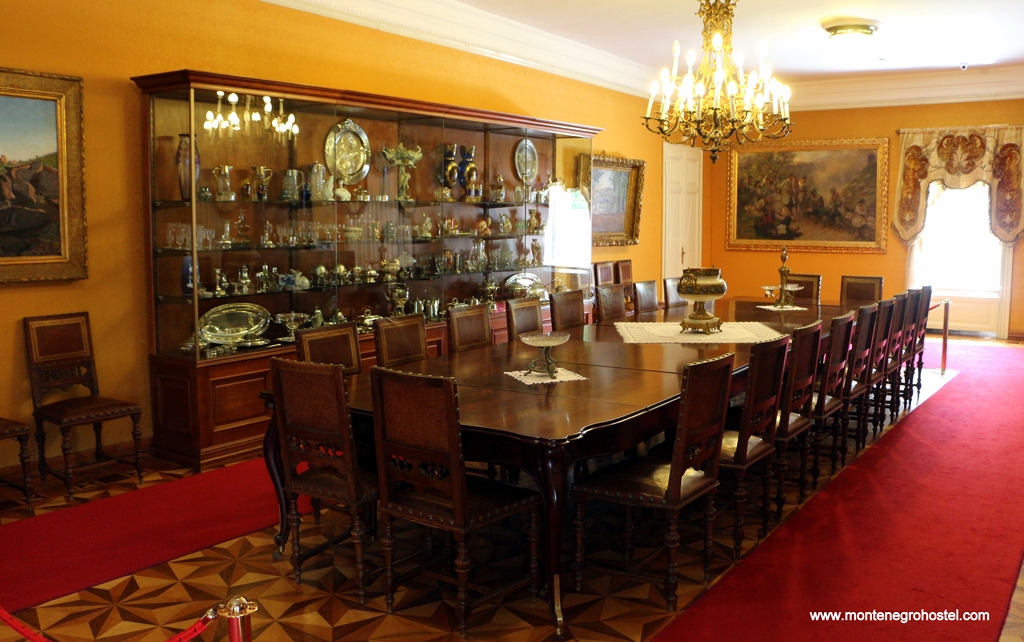
The court library is an integral part of the exposition. Its holdings include around 10,000 preserved books from when the court library was established in the late 18th century and subsequently systematically enriched until 1916, when the court was deserted. In addition to fiction, there is a significant portion of books in various fields of social and exact sciences in all major world languages. Some extremely valuable pieces of unique old books and documents, and bibliophilic editions in luxury book covers with inscriptions of authors and publishers, are also on display. The copies of the Prince’s literary works (dramas), translated into English, Russian, Italian, and Dutch, are housed in a separate room.
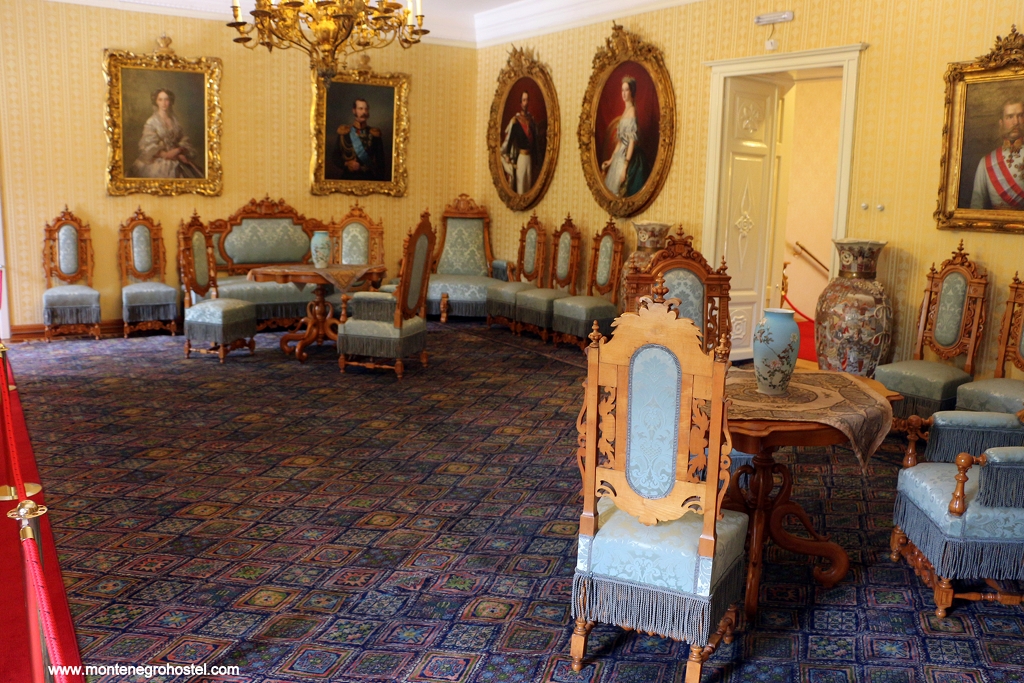
There is a display, also a copy of “The Balkans Empress”, printed in Cetinje in 1886, as well as the “Album of the House of Petrović” (1910), whose covers were decorated by Rudolf Valdec, a sculptor from Zagreb. The display contains incunabula from Crnojević's printing house: “Octoechoes of the First Voice” (Oktoih prvoglasnik), printed in Cetinje in 1493 (the first book ever printed among the South Slavs). It is the first illustrated book printed in Cyrillic letters. Montenegrin incunabula are characterized by their beauty and sumptuous decorations, a large number of initials, flags, and illustrations. Crnojević’s printing house was the first state-owned printing house in the world. On the occasion of its 400th anniversary (1893), Prince Nikola received five honorary diplomas from large European universities: Sorbonne, Oxford, Petrograd, Kharkiv, and Kazan.
CETINJE MONASTERY
This is the most important monument of this town at the foot of Mount Lovćen, where the destiny of the Montenegrin people was decided upon and where it was shaped. It was built in 1701 by Orthodox Bishop Danilo, the founder of the Petrović Njegoš dynasty, after the destruction of Crnojević Monastery. The new monastery retained the characteristic architectural elements of the previous temple.
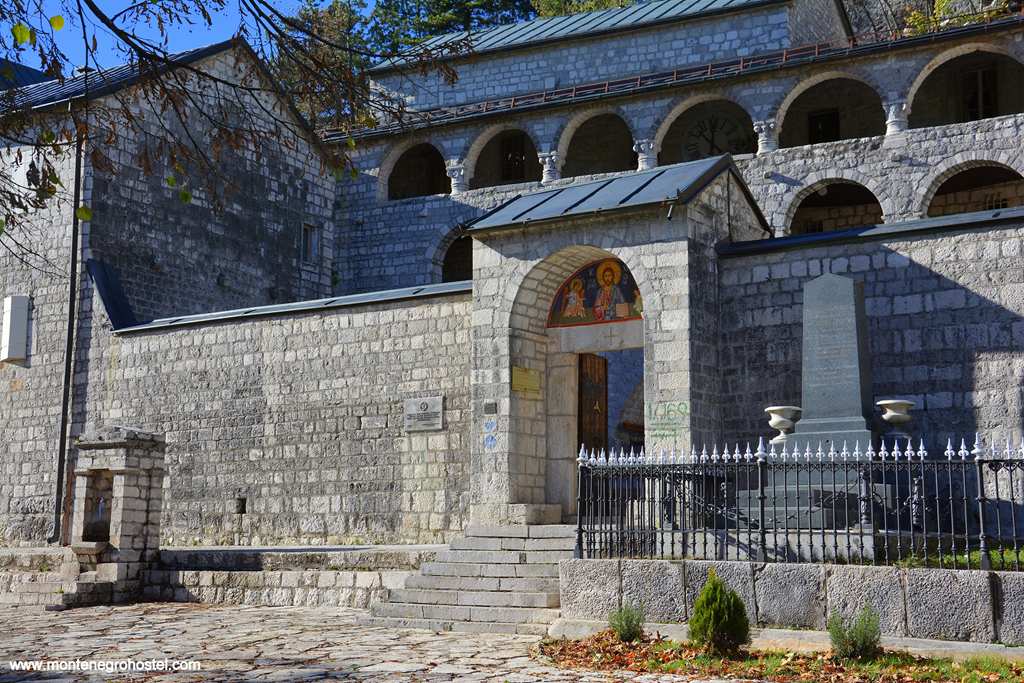
Above the entrance to the church, there is an inscription of the donor, Ivan Crnojević, transferred from the old temple, and at the apse, a table with the coat-of-arms of Crnojević’s family, and along the south outer wall, several decorative consoles. The old stone sculptural elements were given a prominent place in the center of the loggia on the second floor of the lodgings. The monastery complex was adapted and extended on several occasions and was substantially restored in 1927 when the new metropolitan residence was built. In the center of the complex, there is a church dedicated to the Virgin Mary’s Nativity. Prince Danilo and Duke Mirko, father to King Nikola, are buried there.
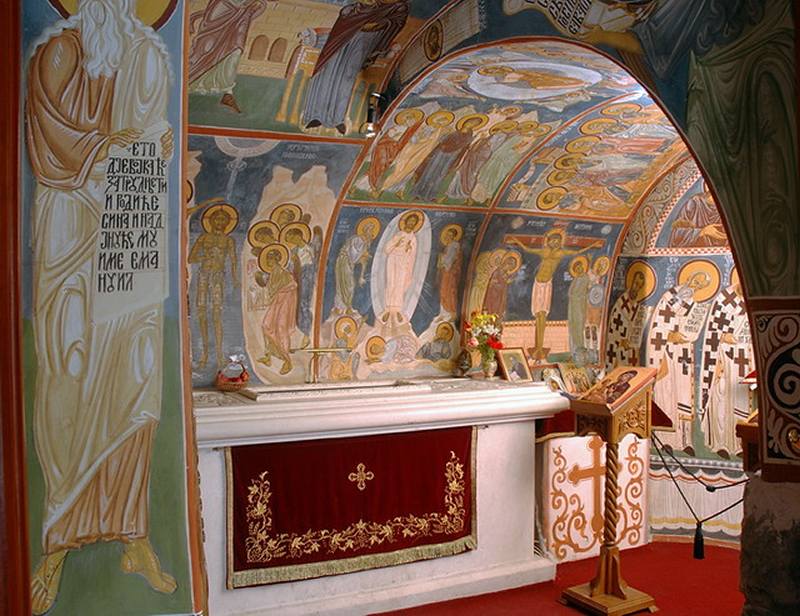
Within the southern part of the monastery, there is the reliquary of St. Peter of Cetinje (Sveti Petar Cetinjski), because of which the Cetinje Monastery is often referred to by his name. On the northern side of the church, there is a cell of St. Peter’s. There are two-story lodging quarters with arcade cornices. Adjacent, in the so-called Njegoš’s lodgings, once the metropolitan residence, the monastery treasury is housed. Among the richness and particular features of the preserved items, it is one of the most significant and richest in Montenegro. An outstanding collection of manuscripts and old printed books from the 13th to 18th centuries is of particular importance. Some of them were even parchment manuscripts decorated with miniatures. Some of Crnojević’s incunabula are on display, some post-incunabula from the printing house of Božidar and Vićenco Vuković (first half of the 16th century), as well as numerous copies of illuminated and silver-plated Russian editions.
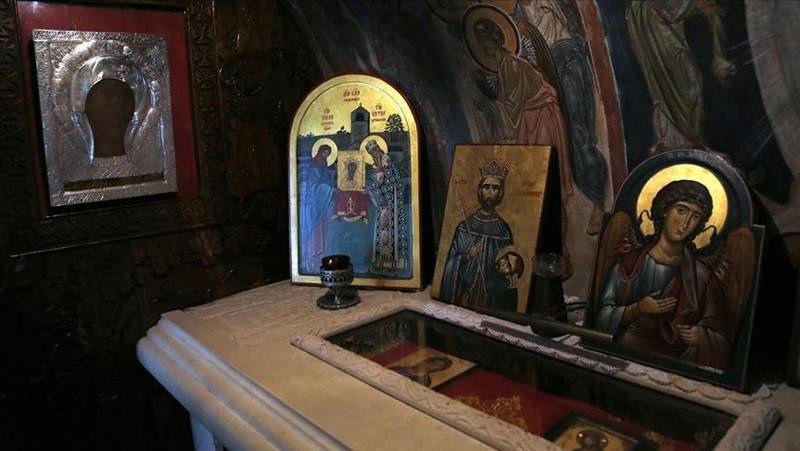
Since Cetinje Monastery was the residence of Montenegrin rulers, numerous valuable items related to the spiritual rites were also preserved: panagias, robes, miters, scepters, etc. The panagias (necklaces with the image of the Virgin Mary worn by bishop-princes) stand out for their luxurious craftsmanship. Also, the religious items made of precious metals, such as chalices, patens (discos), crosses, then the icons of domestic, Russian, Greek, and Italo-Cretan origin draw attention. The treasury of the Cetinje Monastery holds some collections of votive gifts, reliquaries, stamps, decorations, and paintings. Following the 1979 earthquake, the monastery was restored, and its treasury was given a museum-like design. By its historic mission played over several centuries, the Cetinje Monastery was the center of spirituality, free-thinking, humane, and enlightenment ideas, thus rightfully occupying a prominent place in overall Montenegrin history.
Montenegro Hostel Team
KOTOR & PERAST
MUSEUMS IN KOTOR AND PERAST
MARITIME MUSEUM
The first maritime collection of the fraternity of Bokeška mornarica (Bokelian Navy) was opened in 1880 in Kotor. Its documents from 1900 say that some items were placed on public view, which, apart from the costumes and weapons of the fraternity, also contained other items of great cultural and historic value. It pushed the fraternity management to establish “a historic museum where to place old weapons, documents, and all other items available to celebrate the memory of the survival of the Bokelian Navy.
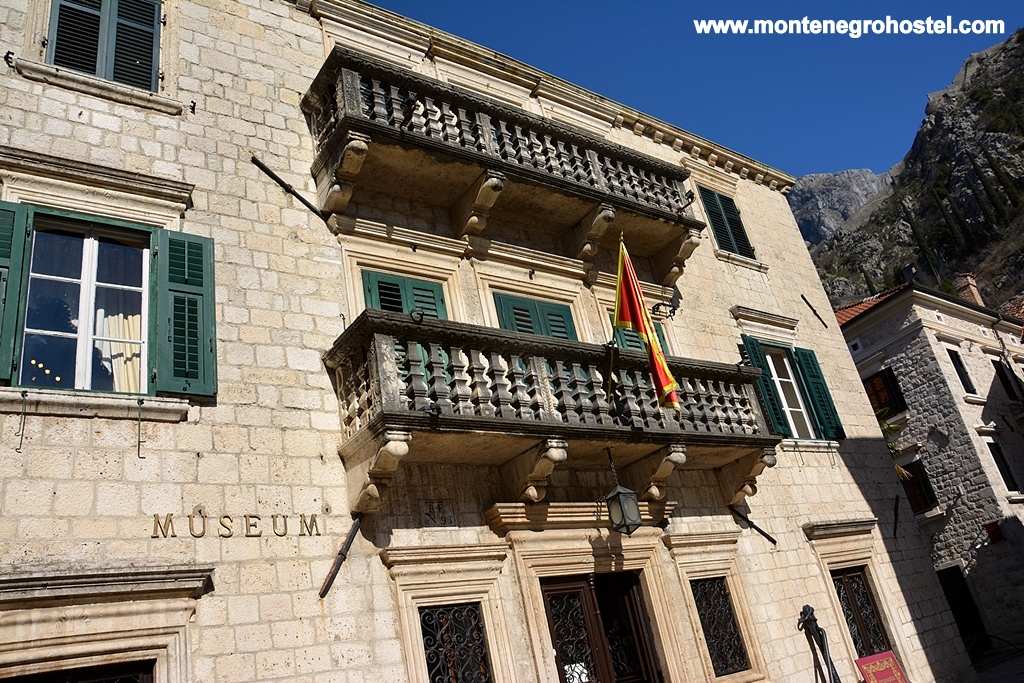
The Maritime Museum was opened in 1938 at the premises of the Grgurina Palace. This baroque building from the early 17th century was completely restored and adapted for the needs of the Museum from 1949 to 1952. At the entrance hall to the Museum, there are six relief tables on display depicting the most significant events from the glorious past of Boka Kotorska and models of ships from the 15th to 18th centuries. At the staircase, connecting the hall with the first floor, old geographic maps and coastal town plans, made between the 16th and 19th centuries, are displayed.
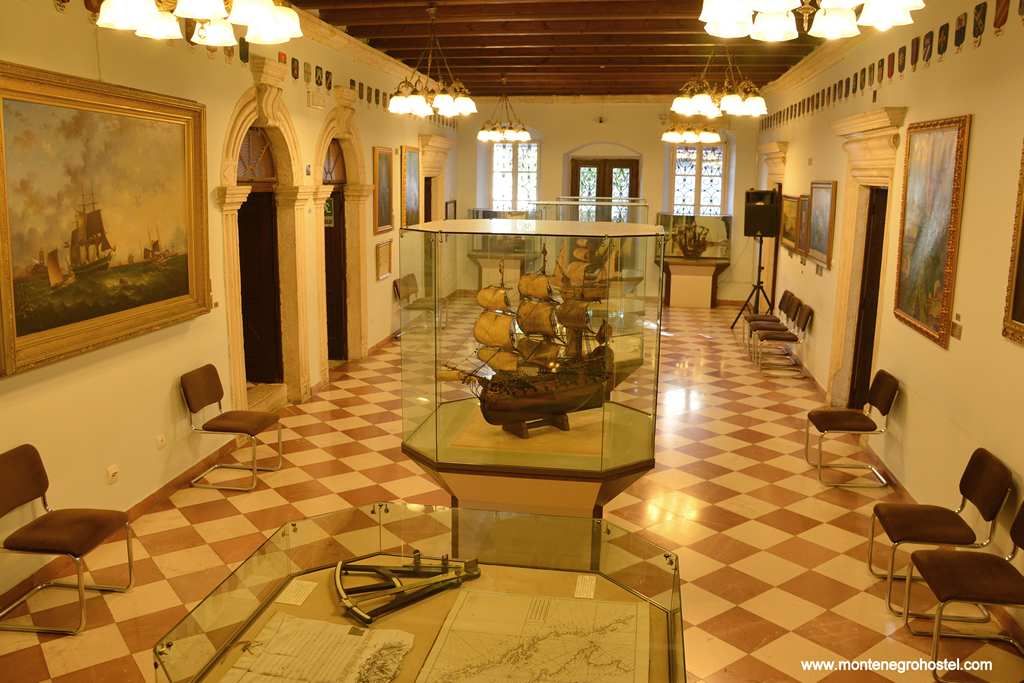
The central display is dedicated to the period between the 16th and 18th centuries, when domestic shipping and trade developed, and the seafarers of Boka participated in the construction of war and merchant ships abroad. This display also includes the portraits of famous people from Boka, documents, ship models, and parlors of families Ivelić from Risan and Florio from Prčanj. Among the ethnographic items, there are national costumes typical of the Montenegrin coast, jewelry, and decorative items. The weapons hall features a part of one of the richest museum displays of this kind within the former Yugoslavia. The models of weapons, done at the armorers' shops of Boka Kotorska, are of exceptional value. At the staircase, linking the first and the second floor, there are pictures of sailing boats owned by the captains originating from the Montenegrin coast from the 19th century.
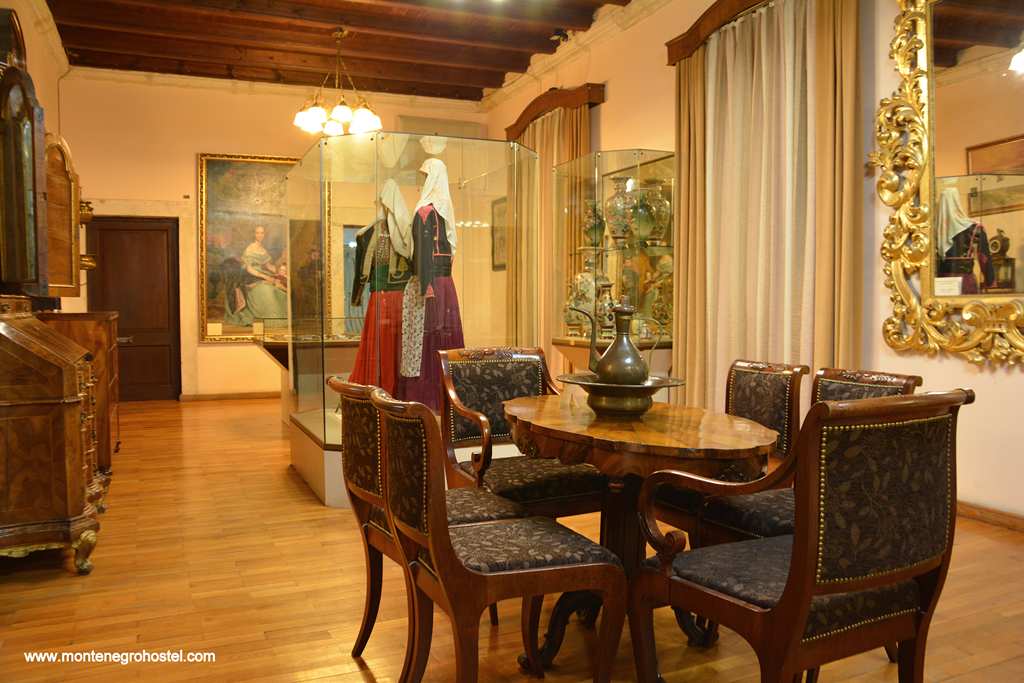
The central room on the second floor displays, among the array of portraits of prominent seafarers and ship owners of Boka, a portrait of Ivo Visin from Prčanj, who was the first South Slav to circumnavigate the world in his brigantine Splendido, from 1852 to 1859. In a separate room, there are items and photographs related to World Wars One and Two. The documents related to the mutiny of sailors onboard Austro-Hungarian battleships in 1918 in Boka incite particular interest. A piece of the bow of the destroyer “Zagreb”, which sank at Tivat bay by two navy officers, Milan Spasić and Sergej Mašera, in 1941, is also kept here. One exhibition hall is dedicated to the Bokelian Navy, an old maritime fraternity, which, as legend has it, was established in the 9th century.
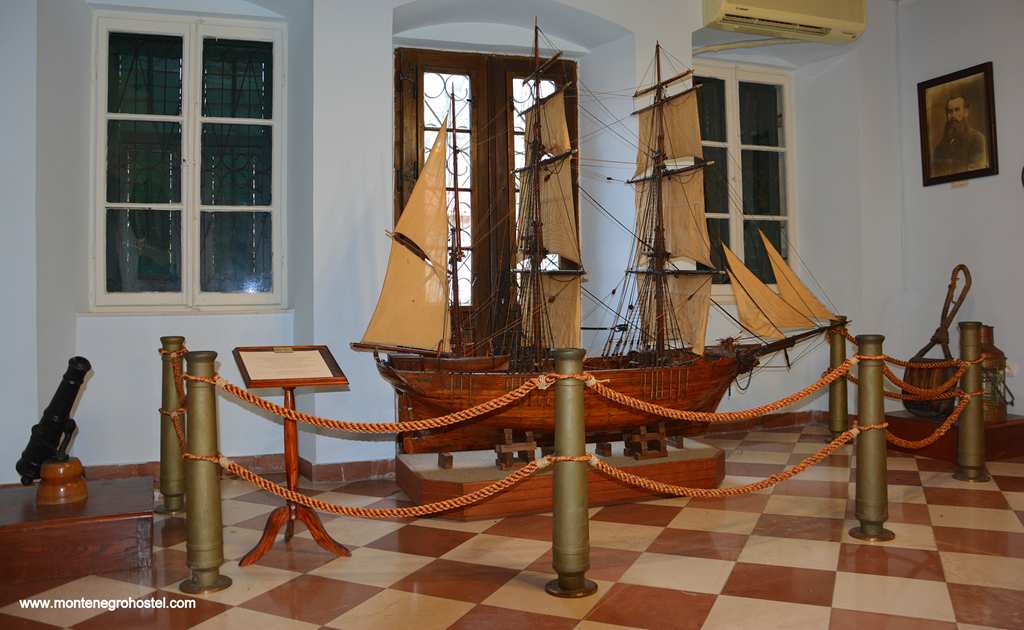
There are also costumes and uniforms of the Bokelian Navy, the flag of the St Tryphon from the first half of the 19th century, the keys to the town of Kotor, and the photocopies of the St Nikola’s fraternity statute from 1463 are also displayed. In addition, the museum display features the development of maritime education and steam shipping in Montenegro, in the 19th and 20th centuries, focusing on the merchant marine shipping company Jugooceanija (Yugo-Oceania), established in Yugoslavia in 1955.
MARITIME MUSEUM OF THE TOWN OF PERAST
The Museum of the Town of Perast was established in 1937 by the decision of the town authorities. The museum holdings were largely established by donations from the local population, the heirs of renewed families in the second half of the 19th century and in the early 20th century. Apart from the portraits of famous seafarers from Perast, weapons, and other items illustrative of the town's history, there are also archive materials of the town of Perast from the mid-15th century.
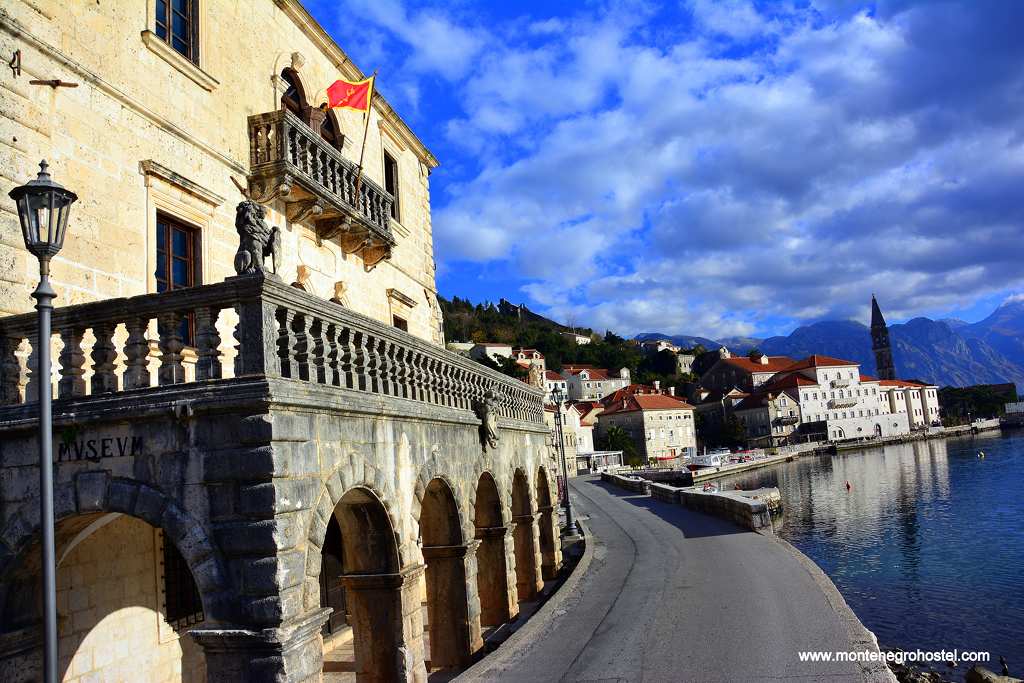
The Museum was originally housed within the building of the Perast Council, and in 1948, it was extended. By the decision of the Ministry of Education of the People’s Republic of Montenegro, the Homeland Museum was established in Perast in 1950. The most representative building in Perast was Captain Visko Bujović’s palace from 1694, which was adapted for these purposes. As of 1970, the Memorial of the Visković Family is part of the Museum. It became one of the organizational units within the municipal institution called “Museums of Kotor” in 1992.
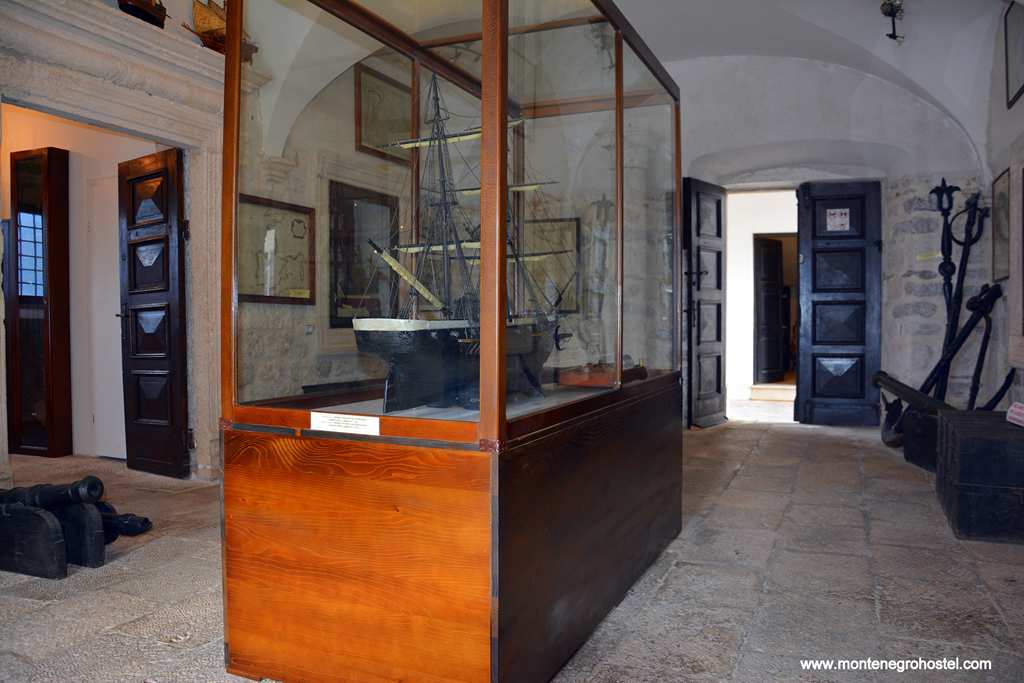
This Museum also includes the Historic Museum with Lapidarium, as well as the Gallery of Solidarity. The palace housing the Museum of the Town of Perast is one of the best-known edifices of 17th-century secular architecture on the Eastern Adriatic. It was built by brothers Ivan and Visko Bujović in 1694. It was built in the Renaissance style with baroque details, shallow balconies, and a spacious terrace with a balustrade, bearing the family coat-of-arms. With its layout, the palace deviates from the common solutions for houses of the nobility and captains of the time. It is one of the symbols of the “Golden Age” of Perast, which followed after the liberation of this part of Boka Kotorska Bay (from Risan to Herceg Novi) from Turkish dominance in the late 17th century. It was the time of flourishing marine trade, and the economic and cultural prosperity of the town, as the most significant center of Boka at the time.
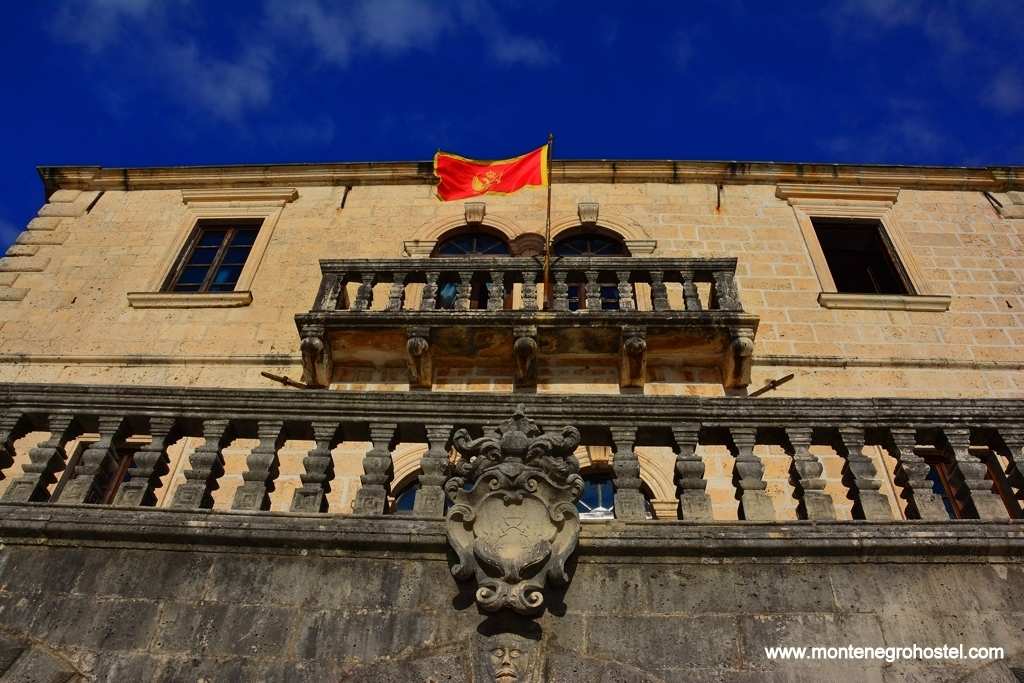
Through the rich holdings of the Museum of the Town of Perast, classified into several collections, one may follow the historic, maritime, economic, and cultural development of the town from the times of Venetian dominance (1420-1797) to the French and Austrian reign in the 19th century, when the town experienced stagnation and downfall. The historic and artistic collections contain several sub-collections: portraits, maritime pictures, icons, diplomas, coats-of-arms of Perast and the local families, old atlases, maps and charts, photographs, images of sailing vessels, and maritime battles. The ethnographic collection holds national costumes, weapons, movable property, and items in daily use from the 16th to 19th centuries. The maritime collection contains the models of sailing vessels from Perast, charts, navigation aids, octants, compasses, and other shipboard items. The Museum also holds rich and diverse archive holdings of the Perast municipality from 1441 to 1945. The display was enriched by the Visković Family legacy.
ST TRYPHON'S CATHEDRAL
St Tryphons Cathedral is the single most renowned piece of the architectural heritage of Medieval Kotor. It was built in the place of a pre-Romanesque church from 809, dedicated to the same saint. The new cathedral was built over several decades and was eventually completed in 1166. This three-nave basilica has a central nave that is twice as wide as the side ones, from which it is separated by robust pillars with Corinthian capitals.
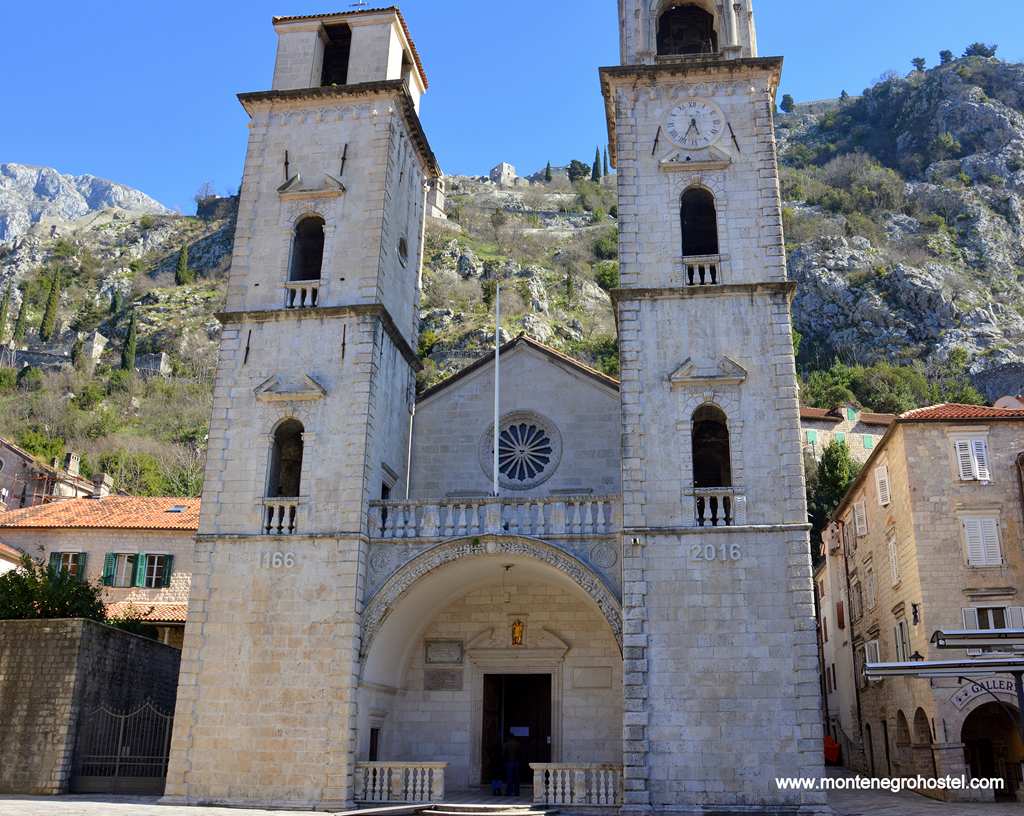
The naves end in semi-circular apses. Two belfries are attached to the western wall. They were given their present appearance after the 1667 earthquake, when the cathedral suffered great damage. Among the decorative elements, the most prominent ones are the baroque belfry opening and a row of stylized heads, a large rosette on the façade, a frieze of blind arcades along the roof cornice, the reconstructed southern portal and the triphora (a triple arch that closes the access to the central part) of the main apse with harmoniously fit Romanesque and gothic motifs. The Cathedral holds exceptionally valuable movable property and works of art, housed within the church and the treasury (reliquary).
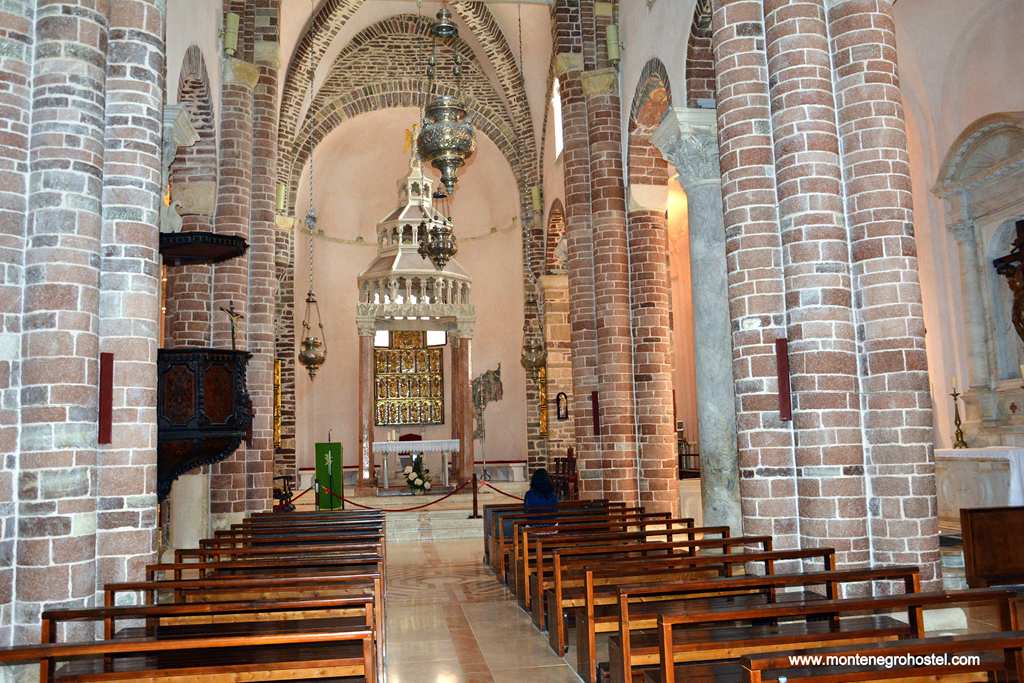
Special value is attached to one side of the ciborium with pre-Romanesque wickerwork patterns and lions, originating from the earlier church. It is presumed that the new ciborium was made in the 14th century by a disciple of Fra. Vito Kotoranin. The side of the house features the house's gothic sculptures, while the four marble altars were made in Venice in the 18th century. The relief depicting the image of Our Lady with the Christ-child was made by Deziderio Kotoranin in the Baroque style. There is also a masterpiece of medieval Kotor goldsmith craft – a gold-plated silver altar plate. As for fresco decorations from the first half of the 15th century, there are some smaller fragments of the composition Crucifixion and Removal from the Cross, and some dozen or so figures at the peaks of arches between the naves.
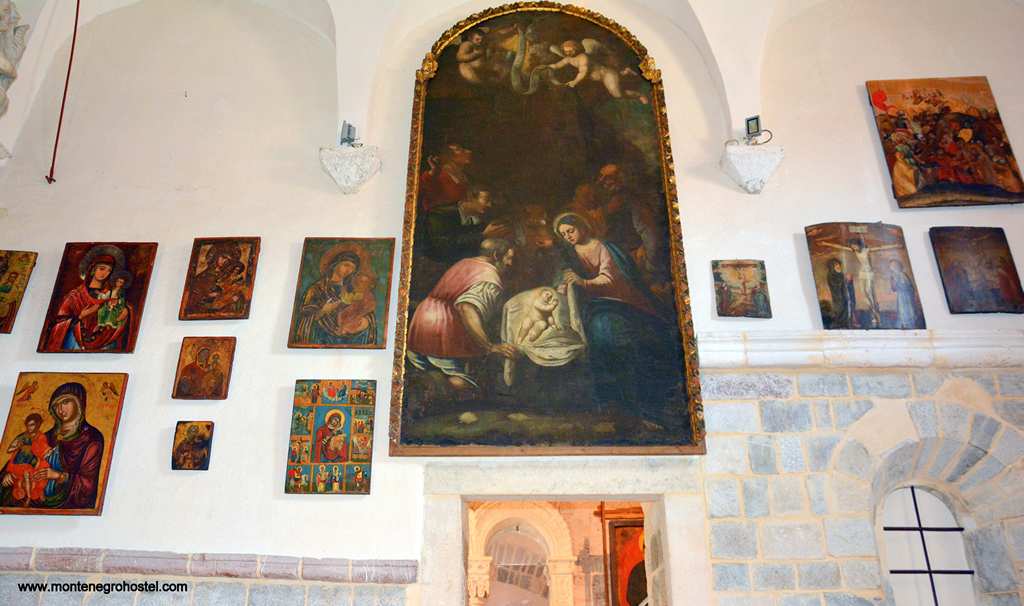
As for easel paintings, the most prominent ones are Crucifixion, by Bassano Senior, the icon Our Lady with the Christ-child, attributed to Lovro Dobričević, St. Bartholomew, St. George, and St. Anthony by Gerolamo da Santa Croce, Homage of Kings by Michael Neidlinger, and a couple of works by famous authors. The cathedral reliquary is housed in a semi-circular chapel with marble reliefs and free-standing sculptures made in the early 18th century by the Venetian sculptor Francesco Cabianca. Apart from the “silver power-wielder” and the “holy head” of St.Tryphon, numerous relics and votive items of various forms, the works of goldsmiths from Kotor from the 15th to 19th century, are also kept here.
OUR LADY OF THE ROCK IN PERAST
Near Perast, there is a tiny island of Our Lady of the Rock, with the church of the same name on it. It is an artificial island made by throwing stones and submerging old ships around a sea rock. There is a tradition of throwing rocks around the island (fašinada) kept alive even now and held every 22nd of July.
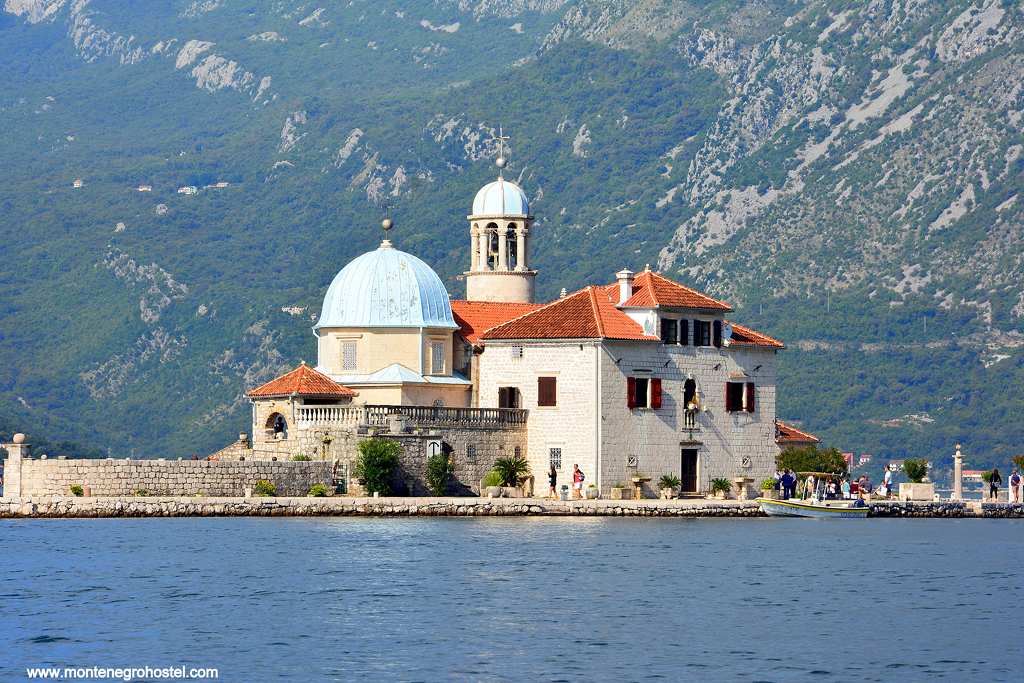
The legend has it that fishermen from Perast found there a miraculous icon of Our Lady with Christ, now adorning the main altar of the church. The original church, built in the mid-15th century, was rather small in size. As the area of the island kept increasing, in 1630, the current church was built, which, in time, has undergone numerous changes.
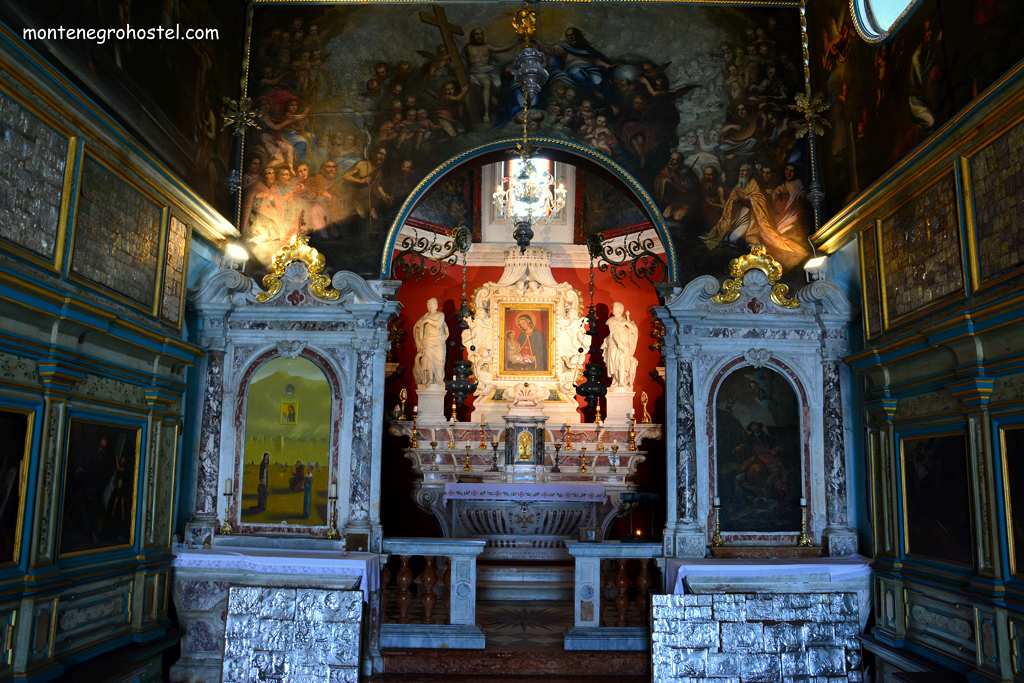
There were intensive works conducted on the church complex between 1720-1725 when the eight-sided presbytery with a dome and around the belfry with a horizontal cornice and loopholes was built, which had a sacral, a lookout, and a defensive function. The famous icon Our Lady of the Rock, made in the mid-15th century by Lovro Dobričević, is placed at the main stone altar. The church interior is decorated with 68 compositions, made by Tripo Kokolja as commissioned by Andrija Zmajević. It is the most comprehensive by Kokolja, and it took the famous master ten years to complete. The large compositions of particular importance are the Virgin Mary’s Coronation, the Virgin Mary’s Death, and the Virgin Mary’s Ascension.
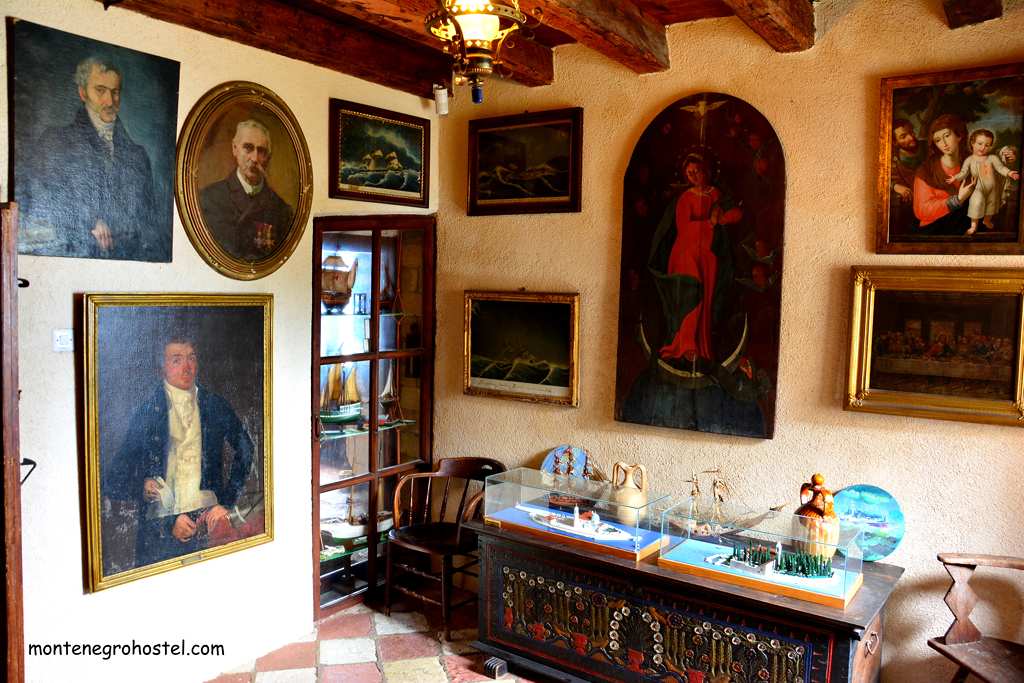
About forty pictures of various sizes, framed by golden-plated rope, the symbol of seafarers, surround this composition. Apart from the works by Kokolja, at the display, there are also votive plaques with relief images of ships from Boka, which are, by tradition, protected, guided, and assisted by Our Lady of the Rock in the adversities of the seas. The church also holds a collection of the most diverse items, from archeological exhibits and images of ships from various periods to artistic craft items for daily use.
ST NIKOLAS' CHURCH IN PERAST
St. Nikola’s Church is located in the square in the center of Perast. Its construction was completed in 1616, although the speculations are that there used to be an older building. It is a single nave with paintings. The building was made of finely dressed stone from Korčula Island, with two lavishly profiled portals adorned with late Renaissance ornaments. The main altar is of baroque style from the 17th century, originating from Venice.
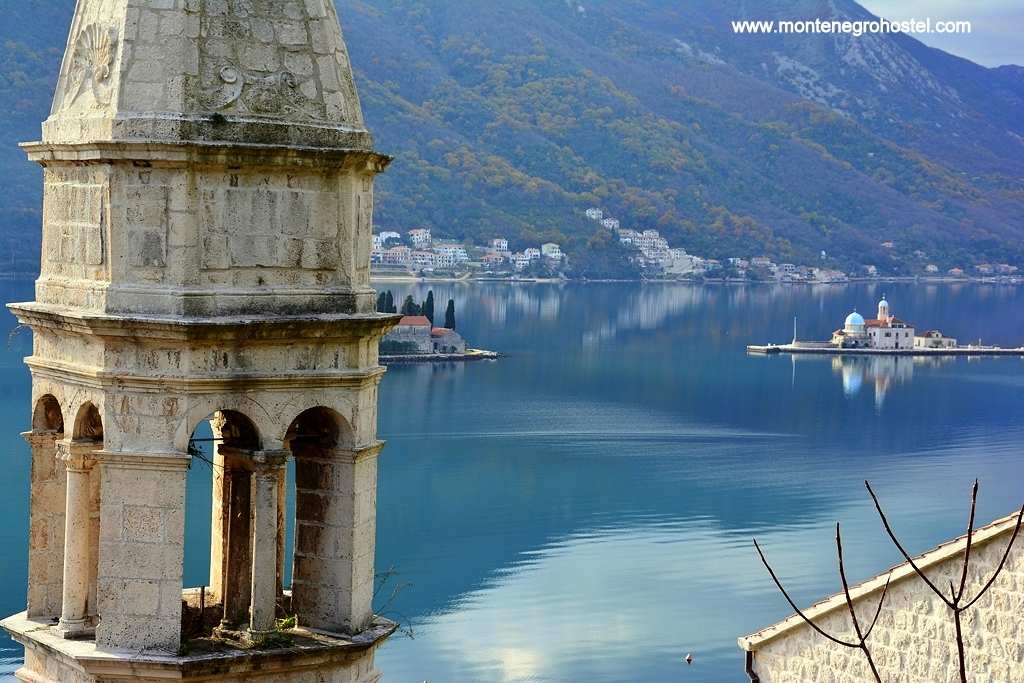
Two stone baptismal fonts, gifts from Andrija Zmajević, were made by masters from Korčula in 1660. The church holds a painting by the famous baroque master from Perast, Tripo Kokolja, the Miracles of St. Anthony of Padua, and 16 medallions depicting scenes of prayers of Our Lady’s Rosary. Adjacent to the church, there is a 55-meter-high belfry built in 1691 by Ivan Baptizer Skarpa from Hvar, and it is considered to be one of the most beautiful baroque belfries on the Eastern Adriatic. From the church, one enters the treasury holding numerous paintings, icons, artistic and filigree items, and liturgical robes.
Montenegro Hostel Team
PODGORICA
MUSEUMS IN PODGORICA
THE MUSEUM OF NATURAL HISTORY
The Museum of Natural History was established in 1995 within the premises of the Nature Protection Institute. The initial holdings came from the once Nature Collection of the Nature Protection Institute. The collection included several hundred stuffed birds and fish, mostly from Skadar Lake, as well as a certain number of animal species.
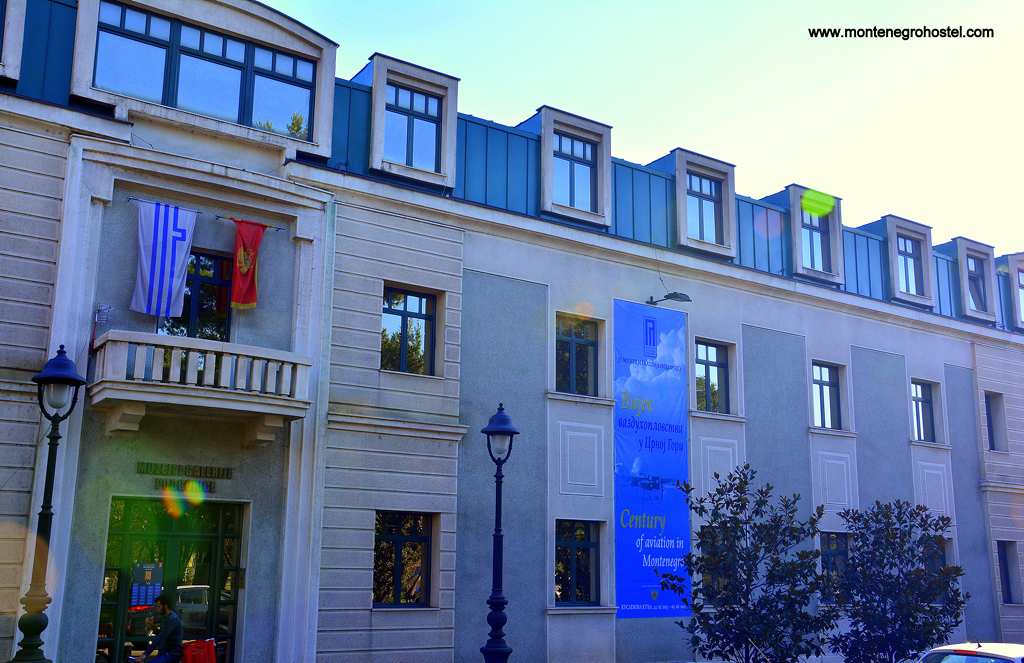
Today, the museum holds 12 collections: algae, moss, fungi, ferns and flowering plants, invertebrates, insects, amphibians, reptiles, birds, mammals, and the paleo-zoological collection.
THE CENTRE FOR MODERN ARTS
It was established in 1995 by integrating two institutions of culture: the National Cultural Centre and the Gallery of the Non-Aligned Countries “Josip Broz Tito”. It is housed in Kruševac, an edifice built in the late 19th century. The central building of the complex is the once residence of Duke Mirko Petrović Njegoš, known as the Palace of the Petrović. The permanent display of the gallery includes around 1,000 items originating from about 60 countries of the world, from Europe, Asia, Africa, and Latin America, as well as a collection of Yugoslav and Montenegrin artists.
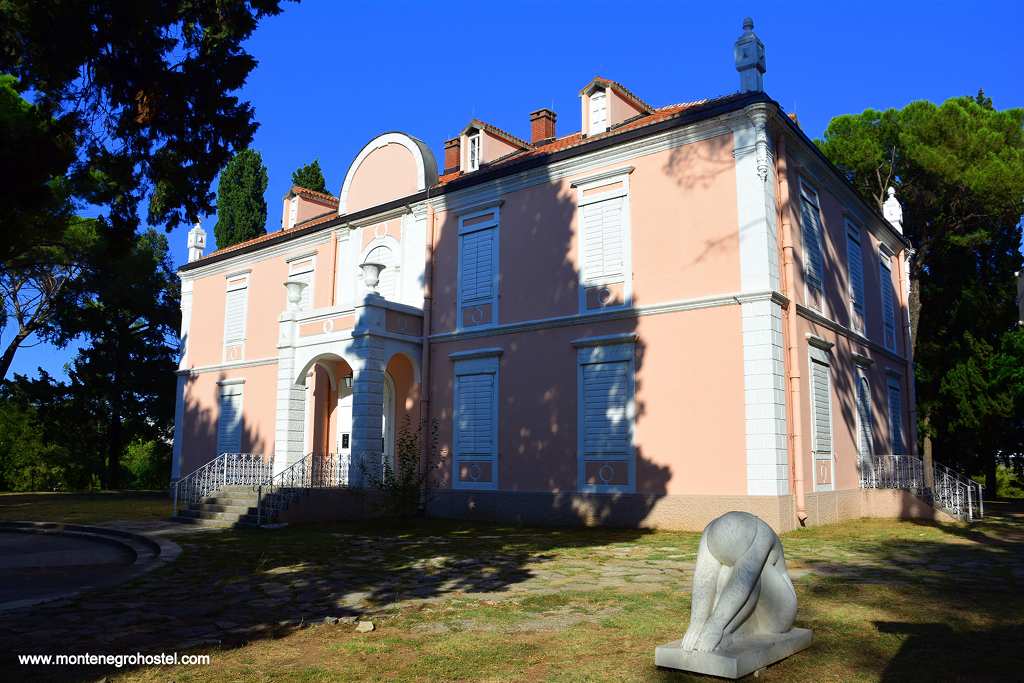
The oldest items date from the 7th century BC, and the newest from the last decades of the 20th century. Apart from works of fine arts, there are also works of applied arts and ethnography, adding variety to the display. Alongside the Palace, there is also the gallery Perjanički dom (House of King’s Guard), where thematic exhibitions, book promotions, literary nights, symposiums, and classical music concerts are occasionally organized.
THE MUSEUMS AND GALLERIES OF PODGORICA
The Museums and Galleries of Podgorica were established in 1950, at first as a collection center, and in 1961, it started operating as a Homeland Museum. By merging with the Gallery of Modern Arts and the Risto Stijović Gallery, as of 1974, this institution has come to be known as Museums and Galleries of Titograd, today Podgorica. It has very rich holdings, convincingly speaking of important historical processes, cultural achievements, and the traditional value of this area.
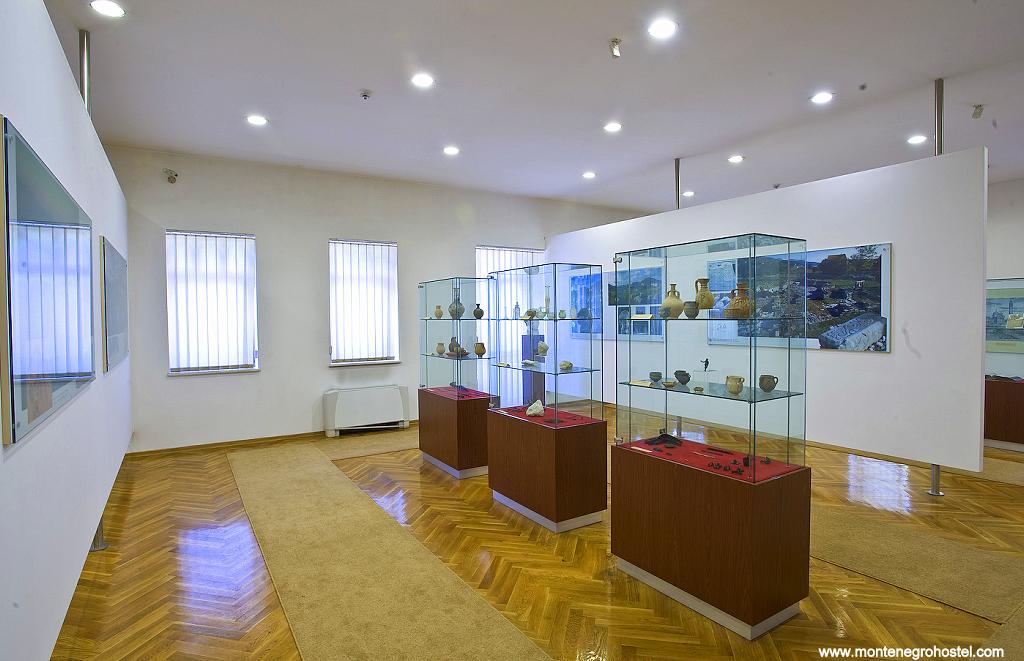
The diversity of museum items enabled the classification of the display into four thematic units, providing a meaningful and complex museum impression of the multi-millennium existence of Podgorica. Through the museum items, archive materials, photographs, and other items from the oldest times until the present day, the display highlights the most important periods, events, and personalities in the history of Podgorica.
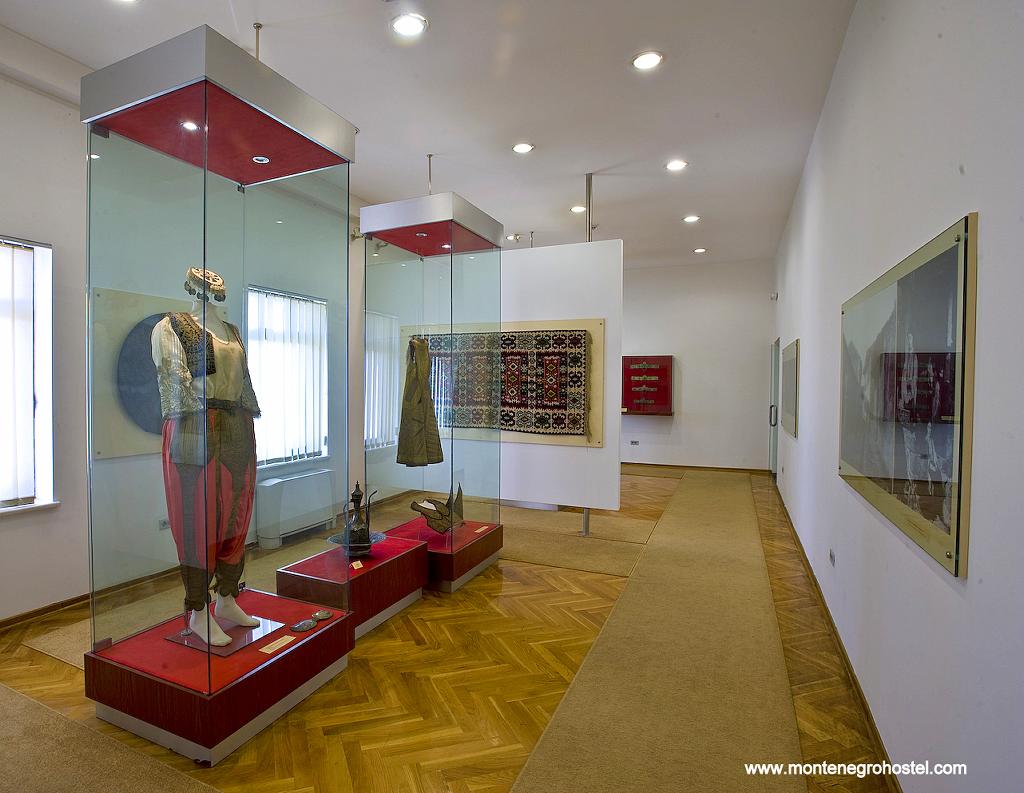
Following the displayed archeological material, in particular, the items depicting the period between the 3rd and 6th centuries, the historic continuity and cultural prosperity of this area may be seen, which is crowned by the Roman Municipium Doclea. The museum items from the site of Doclea undoubtedly show that at the turn of the eras, a culture worthy of the most developed civilizations of the time flourished here. The cultural and historic processes from the early 16th to the 20th century are presented with icons and printed books of Orthodox and Islamic provenance, ornaments, and items for daily use. The ethnographic material of three confessions, Orthodox, Catholic, and Muslim, from the early 18th to early 20th century, is exhibited. Those items illustrate the culture of housing, folk costumes, ornaments, weapons, and other items in daily use with prominent artistic traits, but by unknown authors.
MUSEUM OF MARKO MILJANOV AT MEDUN
About a dozen kilometers away from Podgorica, there is the ancient town of Medun (Mateon), the seat of the Illyrian tribe Labiatae, established in the 4th century BC. At the foot of the Medun’s acropolis, there is a house where Marko Miljanov Popović, a distinguished Montenegrin hero and author, lived. In 1971, it was turned into a Memorial Museum dedicated to this important historical figure.
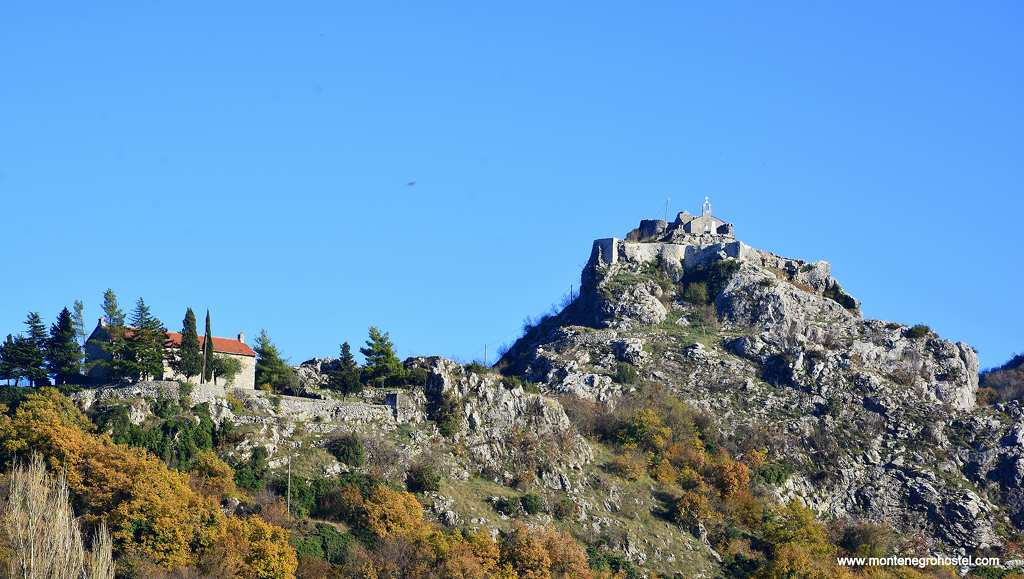
The building was adapted in 1979. The authentic exterior of the building was preserved, while the interior was adapted for the museum display. The Memorial Museum of Marko Miljanov contains three segments: the historic, the ethnographic, and the literary.
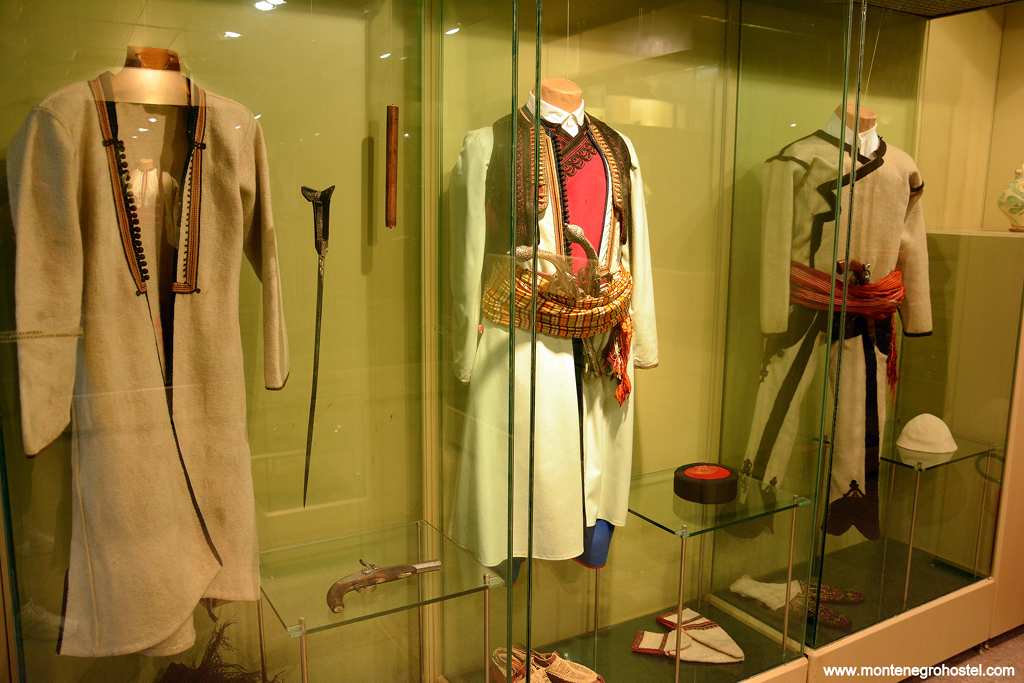
The historic section depicts the most significant events from the heroic life of Marko Miljanov, an eminent warrior and tribal leader, illustrated by personal belongings: costumes, weapons, photographs, documents, etc. The ethnographic part of the display contains some household items, costumes, ornaments, and items in daily use, highlighting the features of ordinary people’s lives. The literary section of the Museum highlights the literary activity of Marko Miljanov. The collection holds manuscripts, the oldest editions of his works, and his rich correspondence with his contemporaries. As a part of the collection, there are also some personal items of this renowned Montenegrin. The Museum also holds a library of over 6,000 titles.
Montenegro Hostel Team
HERCEG NOVI
MUSEUMS IN HERCEG NOVI
HOMELAND MUSEUM AND GALLERY "JOSIP BEPO BENKOVIĆ"
The museum activity in Herceg Novi is organized through the public institutions “Homeland Museum” and the Gallery of Arts “Josip Bepo Benković”. The museum was established by the decision of the Municipality of Herceg Novi in 1950.
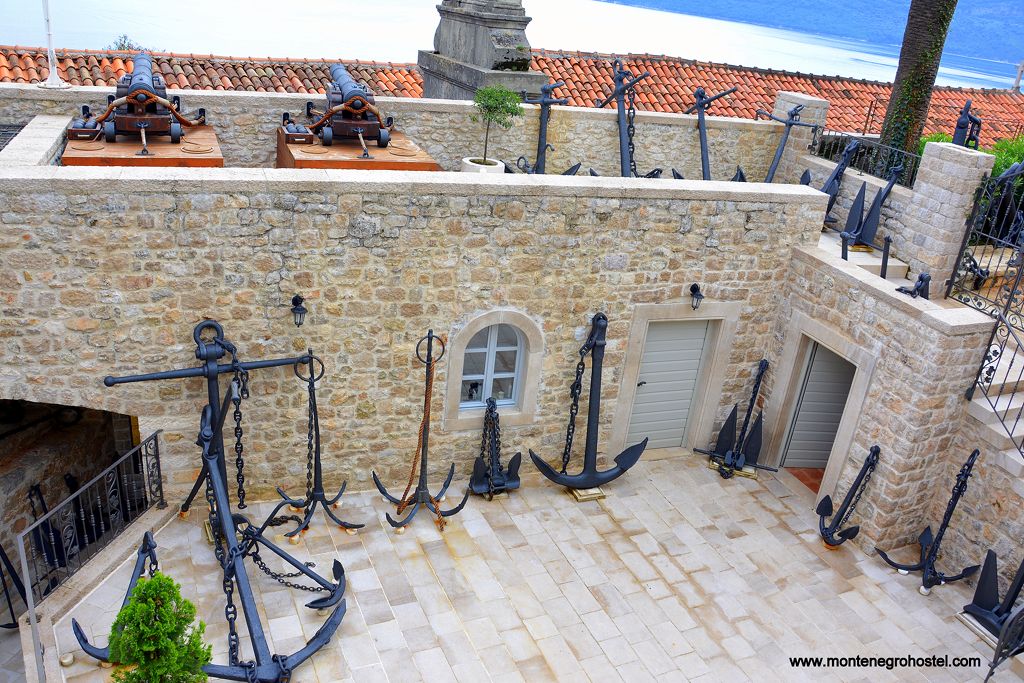
In the beginning, it was designed as a museum for the whole area of Boka Kotorska. It consisted of the ethnographic, historic, and the division for the People’s Liberation Struggle, and the iconographic and maritime collections with over 350 items. With the division of the Boka Kotorska region into municipalities, the Museum was put under the competence of the municipality of Herceg Novi. It holds museum items illustrative of the whole Boka Kotorska area. In 1956, the Archives and the Library were separated from the museum.
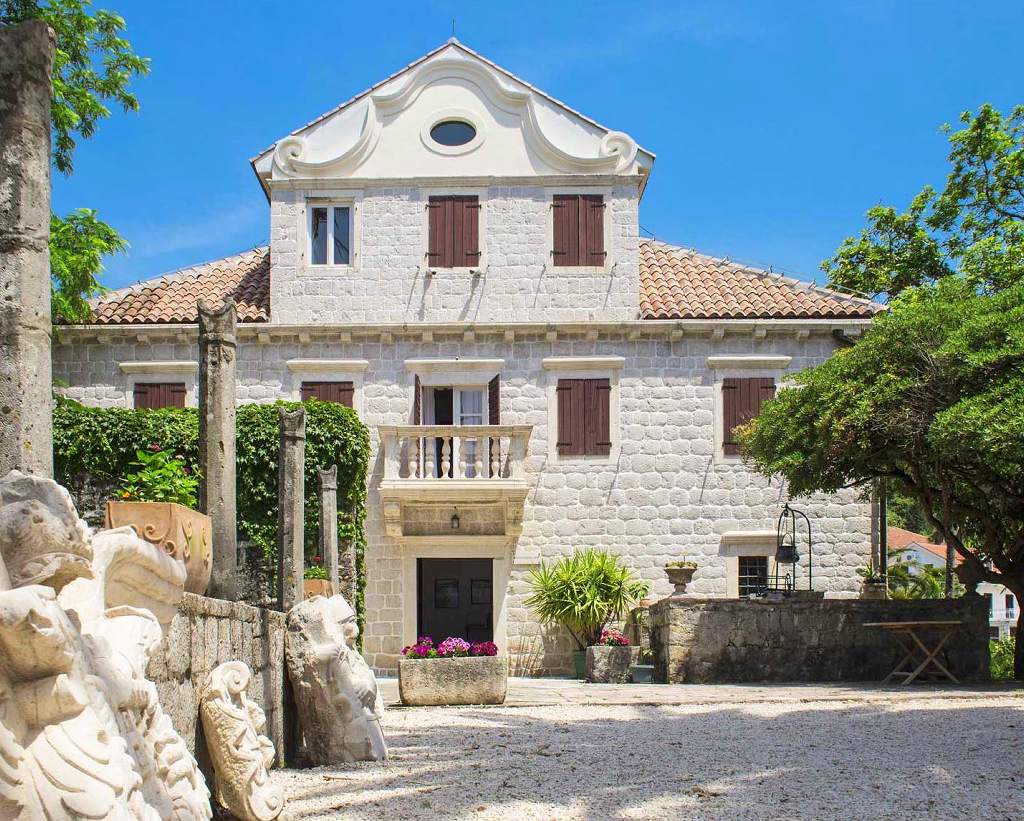
This museum holds several collections. The ethnographic collection has 632 items. Apart from the permanent display, several highly successful ethnographic exhibitions were also organized: Ornaments from Kosovo, Folk Arts and Crafts of Montenegro, Savina Monastery Treasury, etc. The archeological collection contains 110 items. Over 20 archeological sites were discovered within the area of Herceg Novi municipality, with just a few being investigated and published.
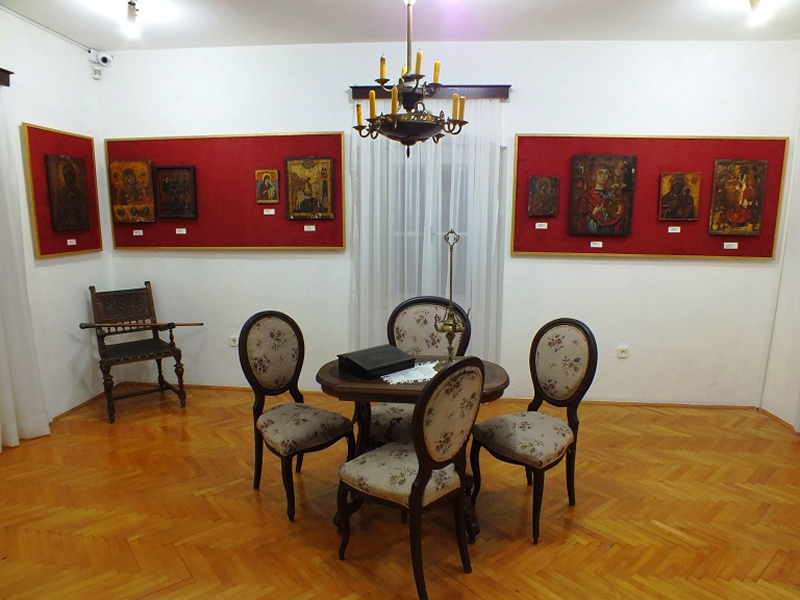
The St. Toma’s Church in Kuti, the sites in Rose and Lipci, and the prehistoric tumulus in Glogovnik surpass the borders of Montenegro by their importance. The historic collection has 117 items. The collection refers to the People’s Liberation Struggle with over 2,200 photographs, 237 documents, and 18 items. The iconographic collection has some thirty icons. The maritime collection consists of about twenty items and ten documents, and 67 items are displayed in the lapidary (lapidarium). There are several rare and unique items on display in the Homeland Museum of Herceg Novi, in particular the parapet plaque from the 11th century discovered in St. Toma’s Church in Kuti.
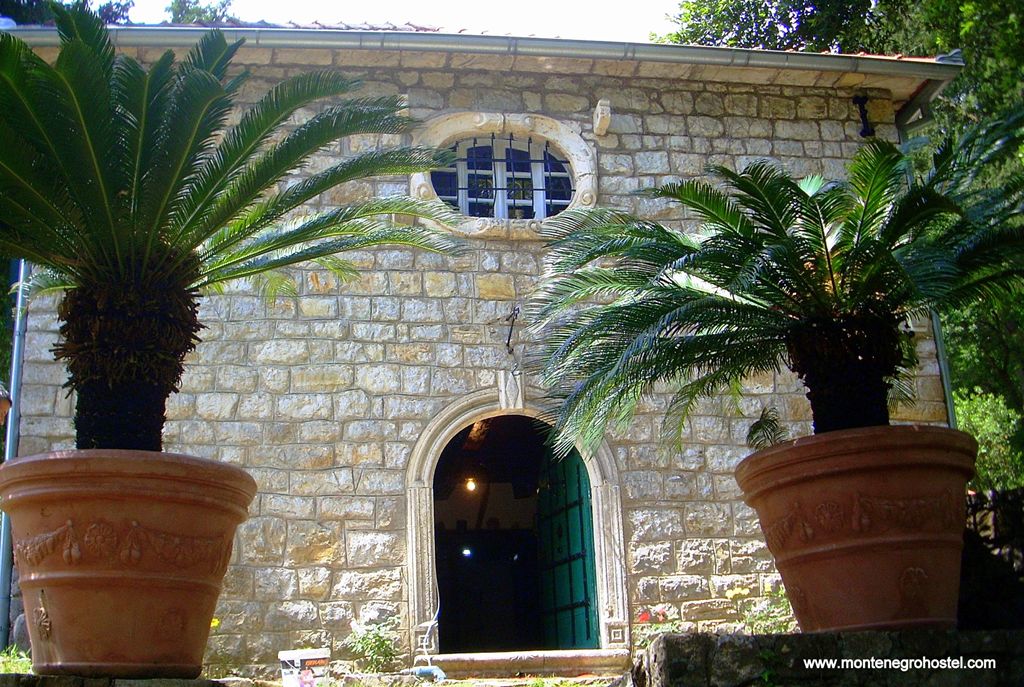
It consists of a base, a relief plate with angels across, and a beam with decorative columns. Remarkably valuable is also the Burnt Grave in an Earthen Urn, 5th century BC, which, according to the available data, belonged to the Illyrians. The museum also holds a rich collection of Illyrian ornaments, a collection of icons made of wood, of the famous icon-painting school Rafailović-Dimitrijević from Risan, national costumes, and ethnographic items for daily use from the area of Boka Kotorska. In 1966, the “Josip Bepo Benković” Gallery joined the museum as a memorial institution established by the Association of Soldiers from the People’s Liberation Struggle. The Gallery holds a large number of interesting items: paintings, sculptures, and engravings. It also has two memorial rooms dedicated to Benković and Lučev, artists and prominent revolutionaries native to this area. There is also a Botanical Garden as part of the Homeland Museum of Herceg Novi.
SAVINA MONASTERY
One of the most significant monuments in the Bay of Kotor (Boka Kotorska) is located in the immediate vicinity of Herceg Novi. The monastery complex is made up of two churches, dedicated to Our Lady’s Assumption, monastery lodgings with a treasury, and a separate church dedicated to St. Sava. The oldest among them is the little church of Our Lady’s Assumption, built, as legend has it, in 1030.
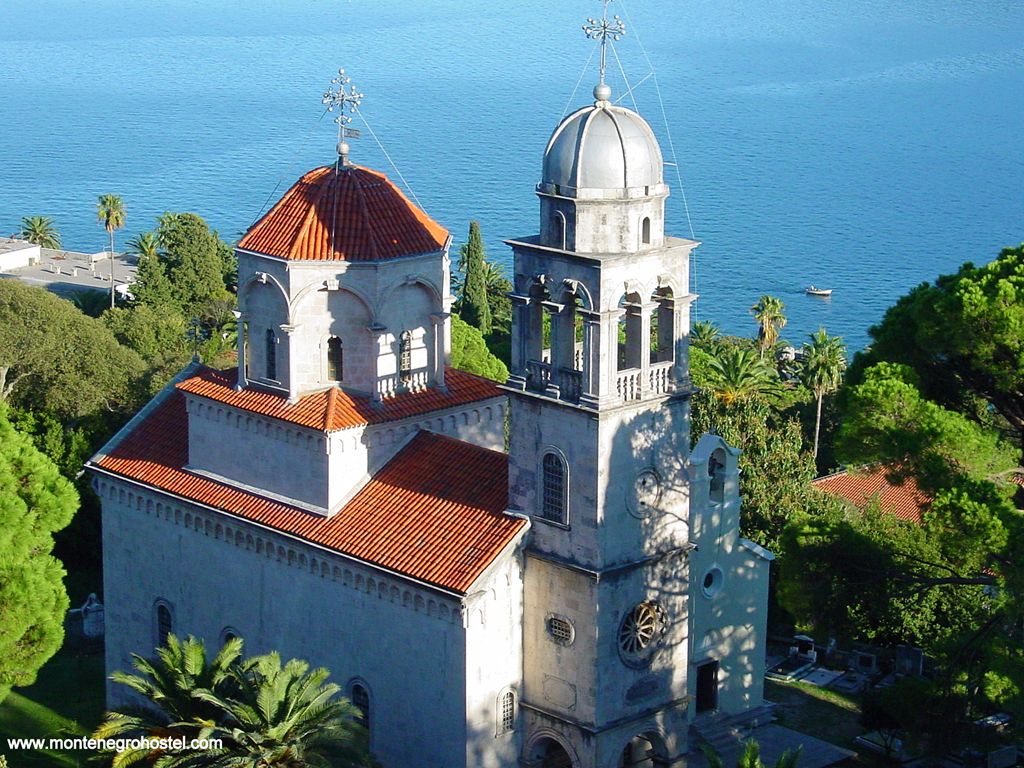
Judging by its style, it is presumed that it was built in the mid-15th century, during the rule of Herceg Stefan, who most likely was also its benefactor. It is a single-nave church with a semi-circular apse and a little belfry above the western façade. Several layers of fresco paintings were discovered in the church interior. The oldest is the one found in the apse with the images of great holidays and Christ’s suffering. These frescoes were made in the mid-15th century by Lovro Dobričević, a painter from Kotor.
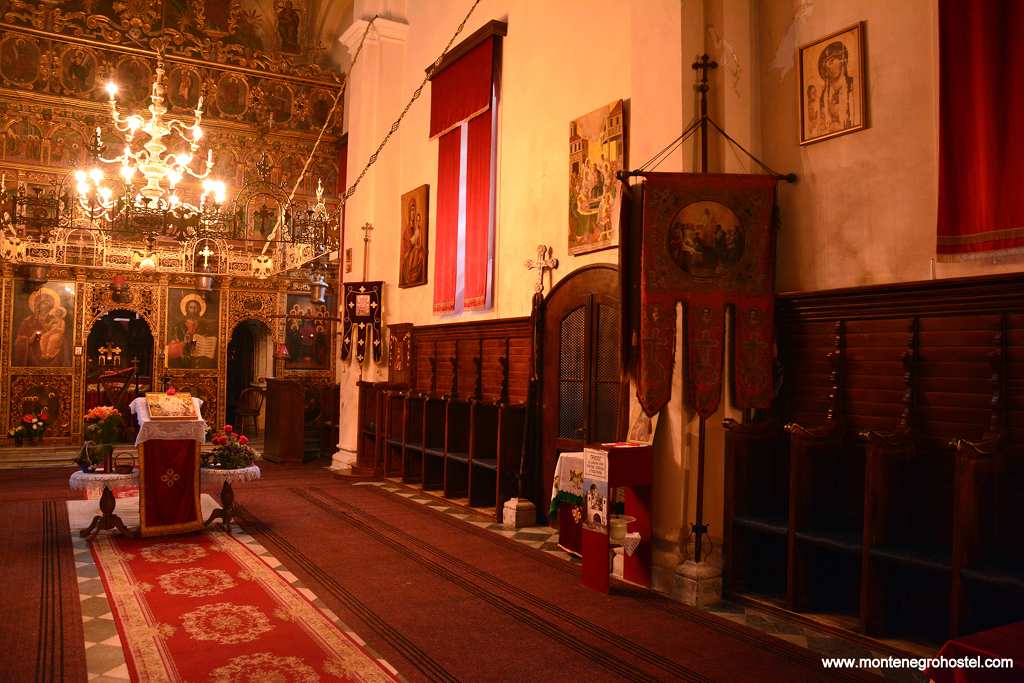
The second layer of frescoes was made at a much later stage. The St. Sava’s Church, similar to the little church of Savina, has a similar layout, and thus it is presumed that it was also built in the 15th century. The large monastery church was built from 1777 to 1799 by the master from Korčula, Nikola Foretić. It is a spacious single-nave church divided into three bays. The Belfry, attached to the western façade, is particularly sumptuous. Architecturally speaking, the church is a combination of various styles, from Byzantine, Romanesque-Gothic to Baroque.
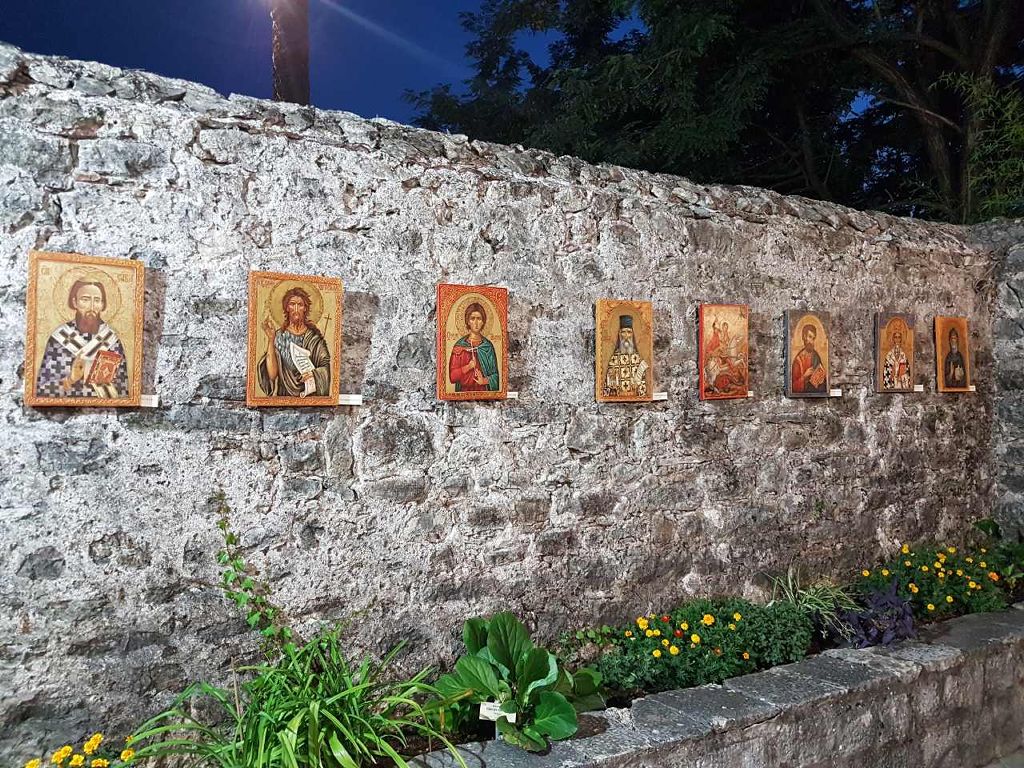
The iconostasis was made by a priest, Simeon Lazović, and his son, Aleksije, from Bijelo Polje. The monastery treasury has a special historic and artistic value. Within its rich holdings, a special place is reserved for manuscripts and collections of old charters, the oldest being the Golden Bull of Emperor Uroš from the 14th century, then the Šestodnevnik of Nikon of Jerusalem, made in 1440, Krmčija, a collection of laws from the 16th century, etc. The treasury holds a collection of icons, ritual items, and craftworks in silver plated with gold. The items from Tvrdoš Monastery brought in the late 15th century by fleeing monks are also kept here. Within the monastery lodging quarters, there is a church museum displaying a significant part of the monastery treasury.
Montenegro Hostel Team
BUDVA & BAR
MUSEUMS IN BUDVA AND BAR
MUSEUMS, GALLERIES, AND LIBRARY OF BUDVA
The museum activity started in Budva in 1962 with the foundation of an archaeological collection. The collection was displayed on improper premises, not meeting the basic museum standards. Following some extremely valuable discoveries after the 1979 earthquake, the conditions were met to set up a museum. Today, within the public institution "Museums, Gallery and Library" Budva, there are the Archaeological and the Ethnographic Museum, sharing the same premises, and the Gallery of Contemporary Arts in a separate building.
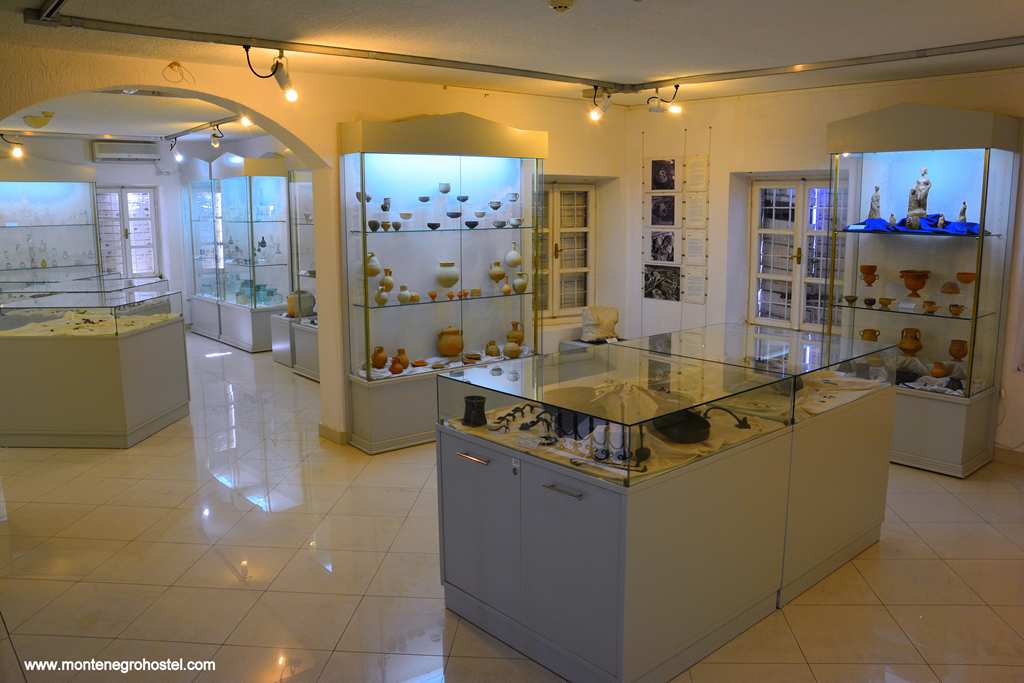
The displayed museum items show the cultural and historic past of the area and remnants of diverse cultures: Illyrian, Greek, Roman, Byzantine, Slavic, etc. The part of the Museum where the archaeological and ethnographic items are displayed was opened in 2003. The first three floors of a four-story building with a total area of 400 square meters belong to the archaeological collection, while the items of the more recent history of the Budva area are displayed on the fourth floor. The archaeological collection contains 1234 items, and the ethnological collection 440 items.
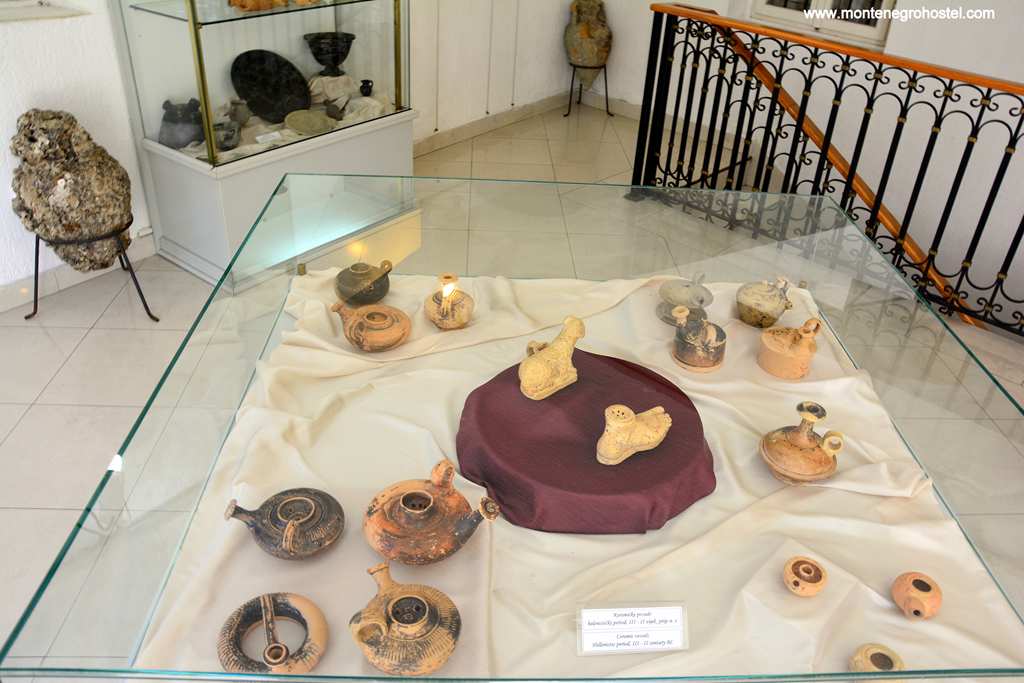
On the ground floor of the Museum building, there is a collection of stone monuments with various types of stone urns from the Roman Era. An important exhibit is a herma, a tombstone representing a female image covered in a scarf, characteristic of the female Illyrian national costume. On the first floor, there is a display of pottery, bronze items, and gold jewelry from Ancient Greek times. A pair of massive gold earrings and a brooch with the image of an eagle holding a boy in its claws are the two most important pieces within this collection.
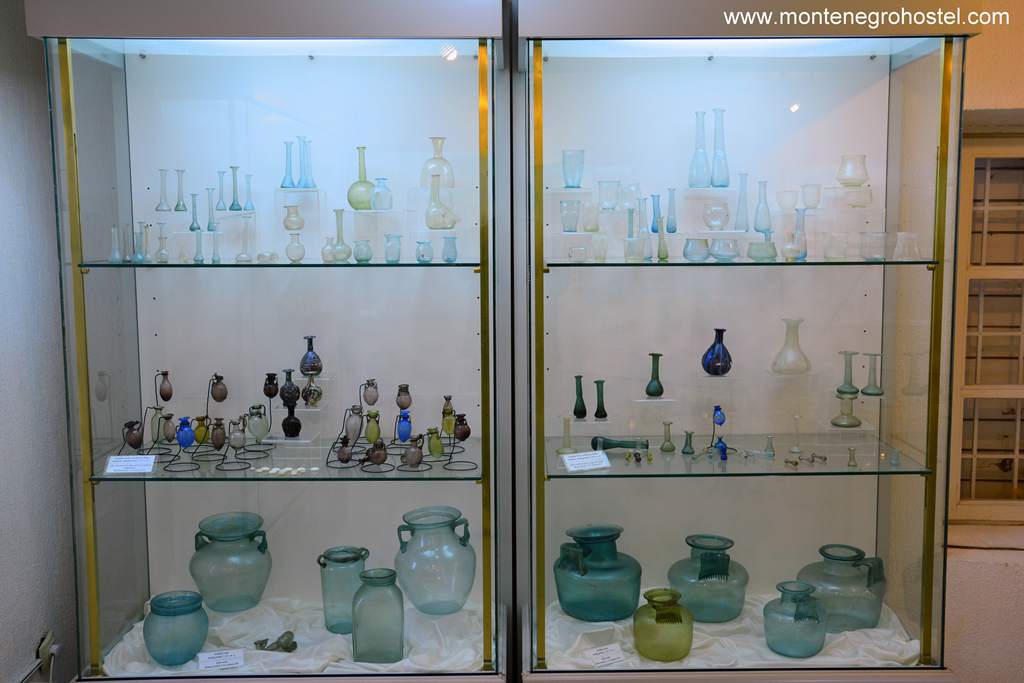
At the time of the Early Roman Empire, when the resistance of the domicile population was subdued, many Greek settlements became municipal by Roman citizens. Among other towns in the Eastern Adriatic, the Budva municipality became a part of the Roman Province of Dalmatia. As for the exhibits relating to the period of Roman dominance, the following are most prominent: a sundial, numerous urns, items made of glass, bone, amber, etc. The collection of Roman coins made of diverse materials, bronze, silver, and gold, is particularly valuable.
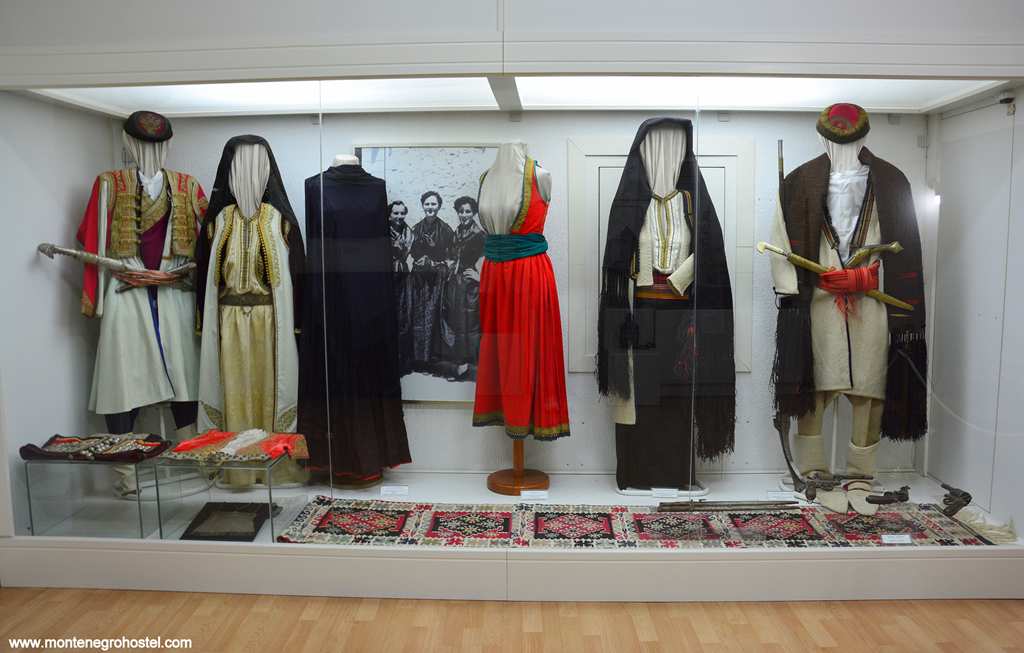
In the 3rd and 4th centuries, Budva suffered an economic crisis, its downfall being further worse by the arrival of barbarian tribes. There are a few remnants of the late ancient era, mostly bronze items and pottery. The archaeological items found in the Old Town shed some light on life during the Middle Ages. The items found indicate imports from the South. The last floor is reserved for the items of the traditional culture of life within the area of Budva municipality, covering four urban settlements (Budva, Bečići, Sveti Stefan, and Petrovac) and villages in Paštrovići, Maine, Pobori, Brajići, etc. The characteristic way of life, beliefs, and customs, the interior and exterior of houses, and the naming of parts of the national costumes reveal the specific features of the coastal culture.
CULTURAL CENTRE BAR
The Homeland Museum of Bar was established in 1959. It is located on the seafront, in the part of town called Topolica. It is housed in King Nikola's Residence, built in 1885 following the design of Dr. Josip Slade of Trogir. It was used as a summer residence for the ruler's family of the Petrovic Njegoš dynasty. It was designed in an eclectic manner, with some elements of historic styles.
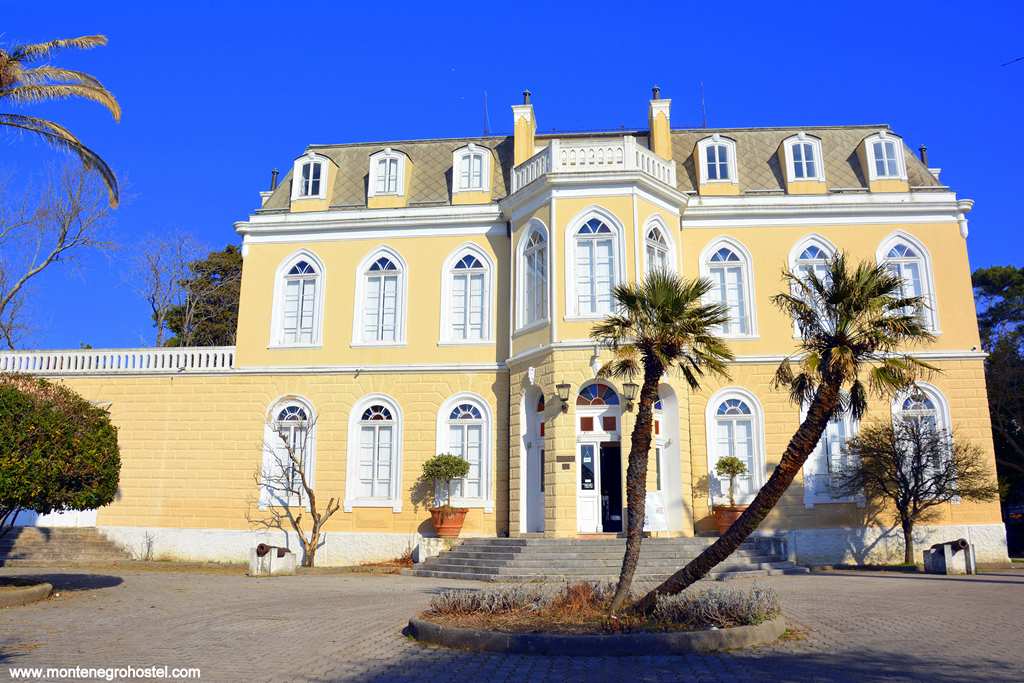
This building is part of a court complex also including the little residence, the court chapel, the winter garden, sentry towers, and a park with diverse and rare tree species. By its architecture, the little residence resembles villas built around the lakes in Northern Italy. The winter garden has a glassed metal construction with decorations in the secession style, while the court chapel was built of waved metal plates with columns. The whole complex is an important historic and architectural unit, blending well with the surroundings.
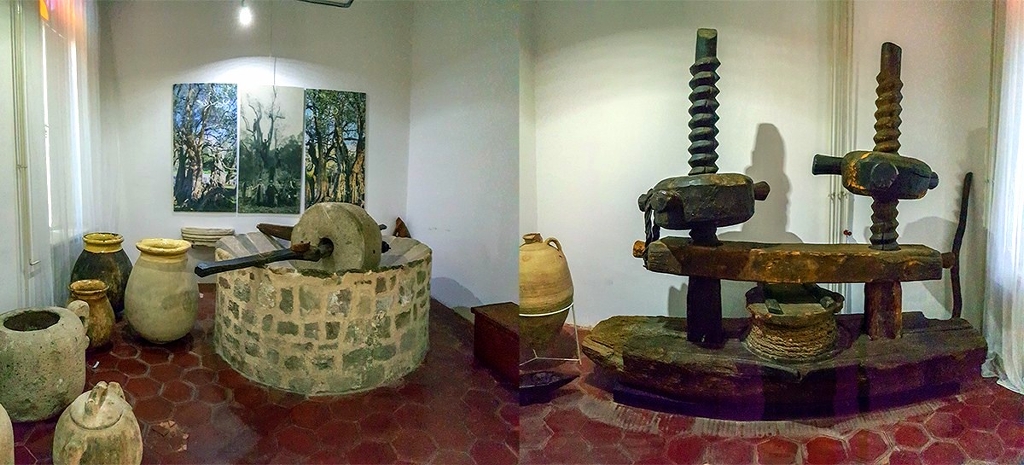
Since 1976, the Museum has been operating within the Cultural Centre of Bar. It was established as an institution of complex type with departments for archaeology, history of art, ethnology, and natural history. Other units within the Museum are also a conservation laboratory, a professional library, and a hall for occasional thematic exhibitions. The holdings of the Bar Museum include several collections. The oldest items are kept within the Archaeology Department, with collections of items from prehistory, ancient eras, the Middle Ages, and a small but highly valuable numismatic collection. Visitors are particularly interested in the items from the graves of the Mijele site, in the vicinity of Virpazar, a capital from the Triconch of Bar, the fragments of a mosaic from St.Teodor's church, and underwater findings. The Historic Department holds items related to the political, cultural, and military history of the town.
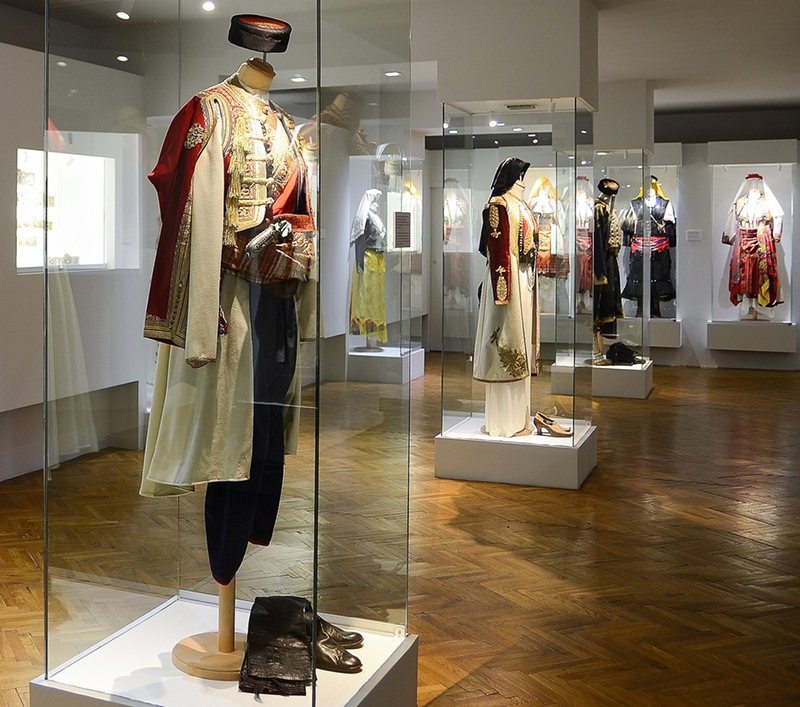
The displayed items include valuable pieces of craft weapons, decorations, archive items, old photographs, and a considerable collection from the People's Liberation Struggle. The ethnographic material is classified according to the specific features into national costumes, economy, household items, ornaments, and items linked to the culture and customs. The History of Arts Department holds collections of paintings, drawings, and graphics (mostly by local authors), then a smaller collection of icons and applied arts items, mostly authentic items from King Nikola's Residence. The Natural History Department holds a palaeontological and mineral-petrographic collection. The current display of the Museum was opened in 1999, designed in such a manner as to present the continuing development and specific features of the tangible and intangible heritage of Bar. The displayed museum items cover diverse periods: pre-history, ancient era, the Middle Ages, the period of Turkish dominance, and the reign of King Nikola.
Montenegro Hostel Team
OTHER CITIES IN MONTENEGRO
MUSEUMS IN OTHER CITIES IN MONTENEGRO
CENTRE FOR CULTURE TIVAT
Due to various circumstances, the museum activity did not follow the development of other segments of culture within the municipality of Tivat. It was only at the beginning of the 21st century that a huge step was made in that direction by opening an ethnographic collection, and the ensuing establishment of the archeological and maritime collections enabled the establishment of the Homeland Museum of the town of Tivat.
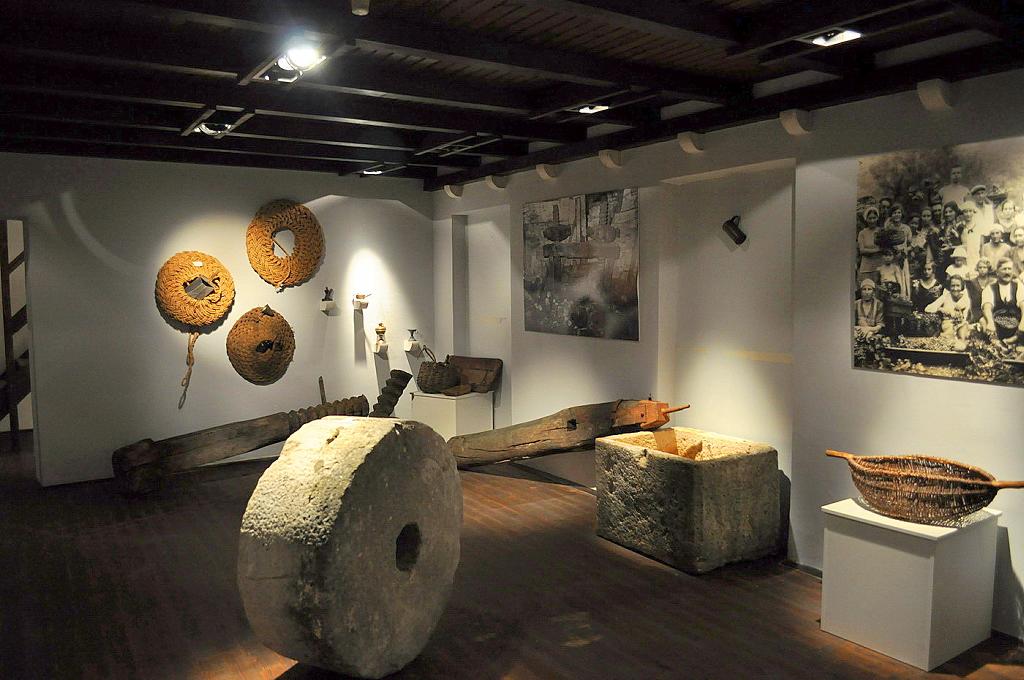
This is an area where diverse civilizations met and left remnants of their presence in the tangible and intangible heritage of the Tivat area. Numerous archeological finds, written sources, and, in particular, the monuments of culture bear witness to that. The most outstanding monument among the remnants of medieval architecture is the complex of fortified villa Buća-Luković, where the exhibition Ethnographic Heritage of Tivat is put on display.
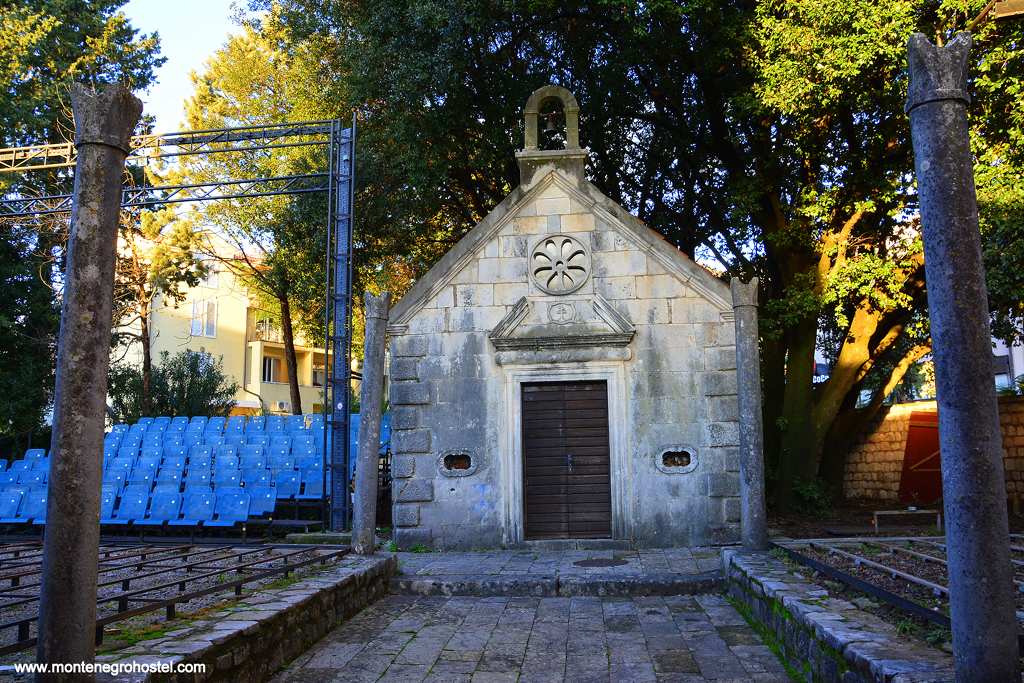
The Buća-Luković complex consists of a tower with pronounced fortification features, living quarters, and a small chapel dedicated to St.Michael, the saint patron of the Buća Family. The Ethnographic Heritage of Tivat exhibition depicts the life and culture of this area in the second half of the 19th and early 20th centuries. The displayed items were made by the deft hands of craftsmen from these areas and were intended for daily use and celebrations.
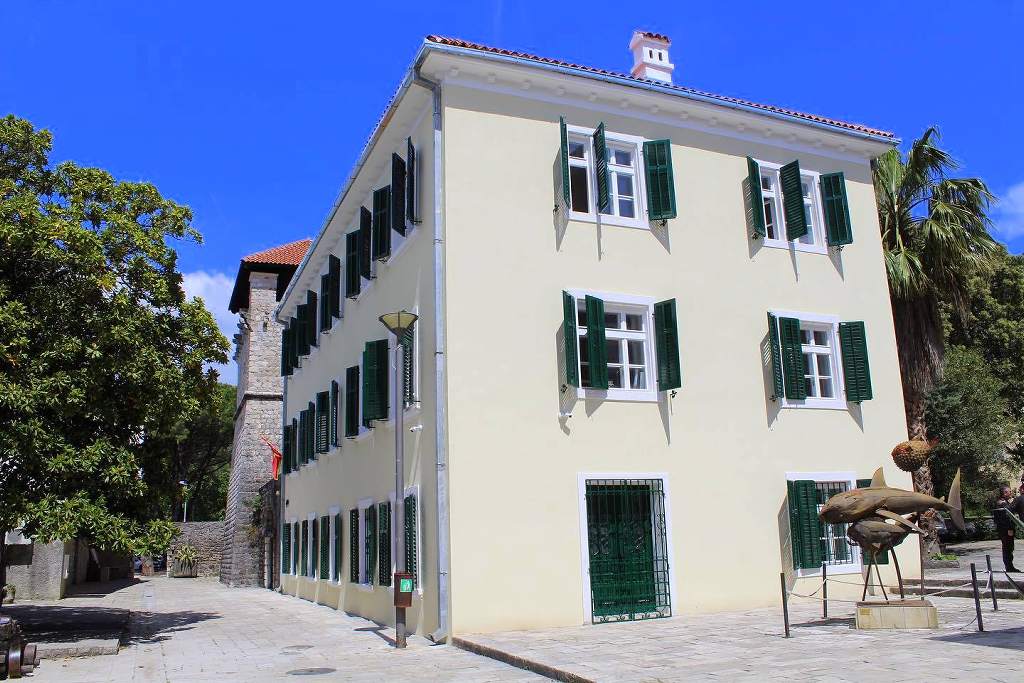
The most important economic activities of the area are presented: fishing, olive-growing, wine-growing, fruit-growing, farming, and cattle-raising. There are some of the most common folk costumes of the Boka Kotorska area on display, like a female costume from Lastva, a male costume from Boka Kotorska, and a Montenegrin male and female national costume. The complex of Buća Luković Villa houses is also an art gallery, which has promoted fine arts and has become the gathering place for local artists, but also those from other parts of Montenegro. There is an art school operating within the gallery. It has three exhibition areas, and one part is used by painters from Tivat as an atelier.
THE HOMELAND MUSEUM IN NIKŠIĆ
It was established in 1951 and was housed in King Nikola’s Palace, dating from 1890. It is a two-story building made of finely dressed stone with protruding side wings and an entry staircase. There is a balcony above the entrance. The arcade windows with highlighted frames stand out from the façade. The Homeland Museum in Nikšić holds several collections: the archeological, the ethnographic, the historic, the cultural-historic, and the collection of the labor movement and the People’s Liberation Struggle.
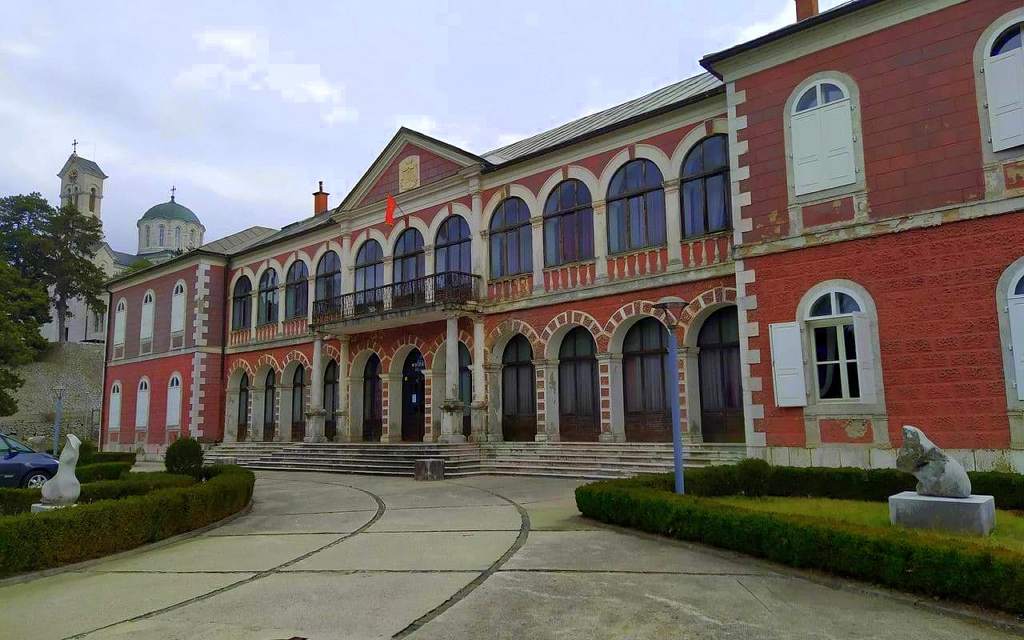
The archeological collection holds the items from Crvena stijena (Red Rock), a prehistoric site near the border between Montenegro and Herzegovina. The Middle Paleolithic, pre-Mousterian, is presented by stone tools of various shapes and purposes. It was only in layers belonging to the Mesolithic and the Neolithic that bone tools and pottery were found. In addition to a large number of stone tools, the display also holds the bones of the existing animal species from the Crvena stijena, the richest such find for the Quaternary Period in Southeast Europe.
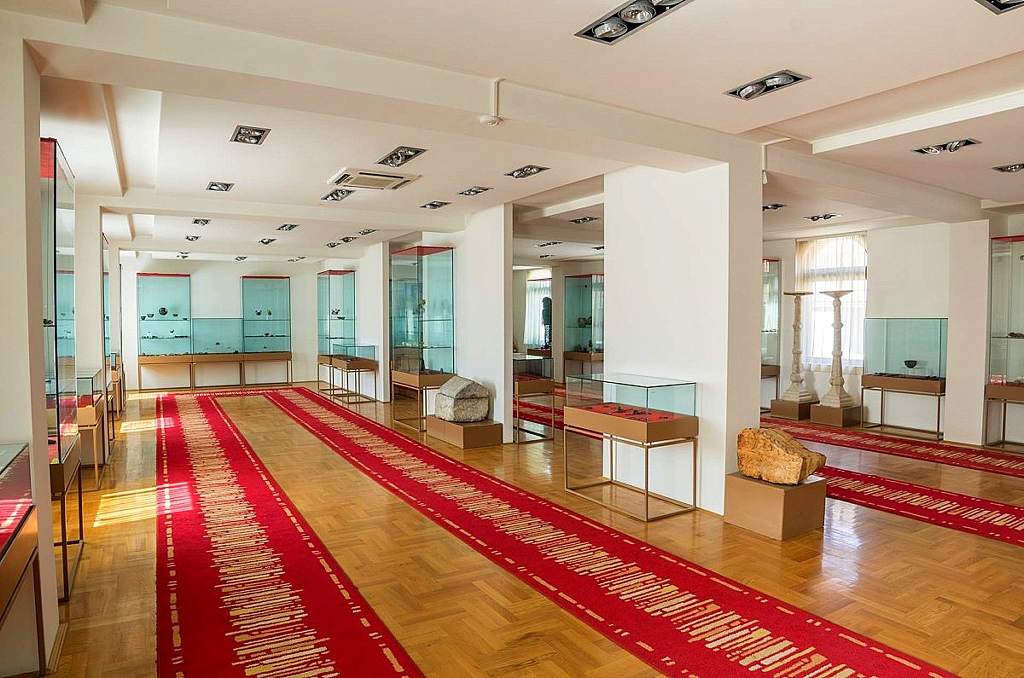
The stone tools show certain specific features, following the development of the Paleolithic cultures in this area through highly pronounced local influences caused by particular geographic, geomorphological, and environmental conditions. As for the remaining archeological material, the Illyrian warrior equipment is worth mentioning, consisting of a large number of spears of various sizes, one helmet, several legs, and arm pads made of a thin bronze plate.
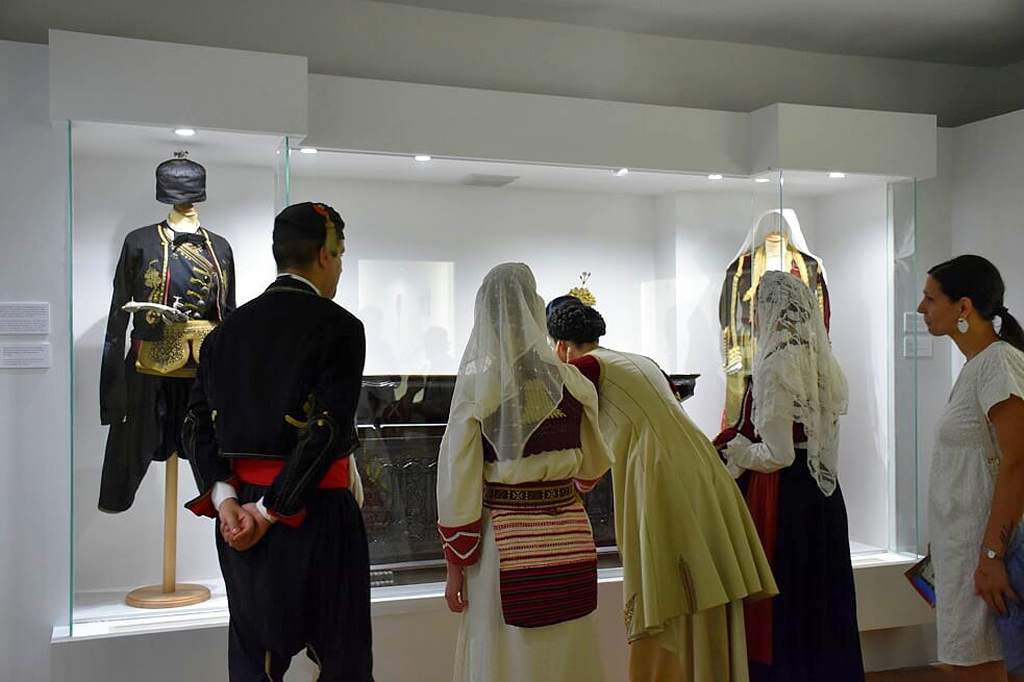
The numismatic collection, which is part of the cultural-historic collection, abounds in Roman gold and silver coins, found in the area of the municipality of Nikšić. Particularly valuable are Valerian’s and Nero’s coins. The weapons collection holds items linked to distinguished Montenegrins. In front of the Homeland Museum, there are several standing tombstones from the once very rich Nikšić necropolis, which, according to some sources, had as many as 396 such tombstones. These sepulchral stones are characteristic of various forms and richness of decorative motifs dating from the 14th to 17th centuries.
CENTRE FOR CULTURE DANILOVGRAD-HOMELAND MUSEUM
The cultural activity of Danilovgrad is conducted within the Center for Culture, including the Homeland Museum. The Museum is placed within the Summer Residence of Prince Nikola I Petrović, built between 1873 and 1893. The Homeland Museum of Danilovgrad was established in 1960. Until 1965, when it was open to the public, it served exclusively as a depot for keeping museum items.
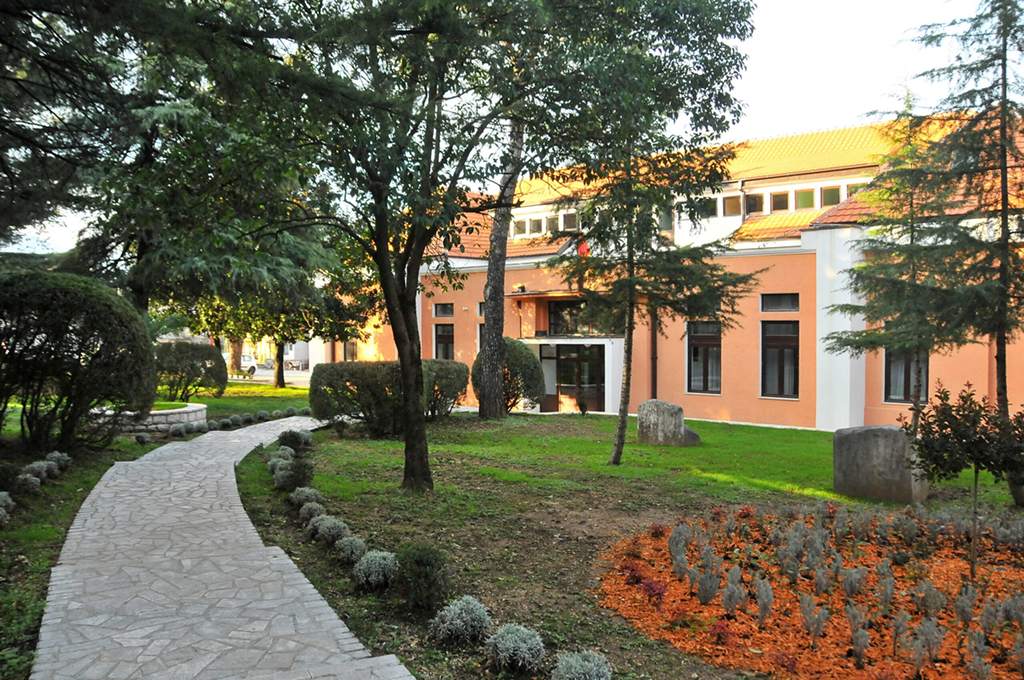
It contains highly valuable exhibits: national costumes, various types of weapons, decorations, coats-of-arms, photographs, and documents linked to the history of the Danilovgrad area. Although a part of the ethnographic materials was purchased, most of the holdings were offered as gifts. The cultural and historic picture of the Danilovgrad area is presented by the permanent display. Museum items are systematized into collections: the archeological, the numismatic, the ethnographic, the collection of weapons and accessories, decorations, coats-of-arms, photographs, and documents.
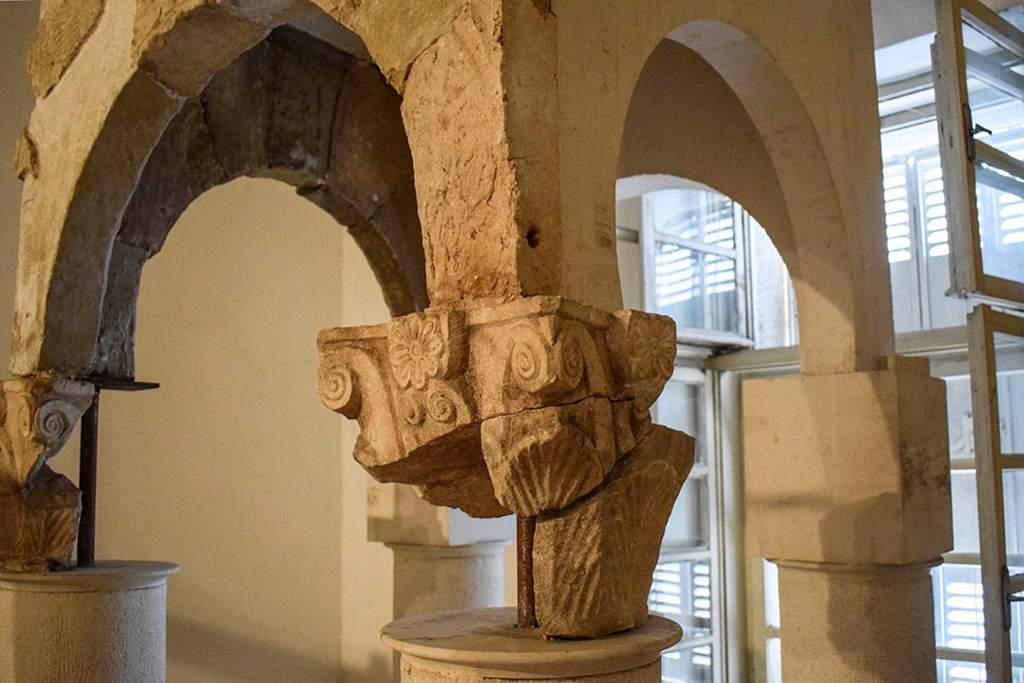
The archeological collection is of particular value. It was established mostly from the items found in the sites within this area. Here, there are two finds from the Roman era. As for this collection, the most interesting items were found in Martinića gradina, near Danilovgrad, from the early Middle Ages. The display contains the reconstruction of an early Christian basilica from this site, capitals, a Roman tombstone, a skyphos, Illyrian weapons, medieval swords belonging to the Bosnian King Tvrtko I Kotromanić, and a column from Šipkova glavica.
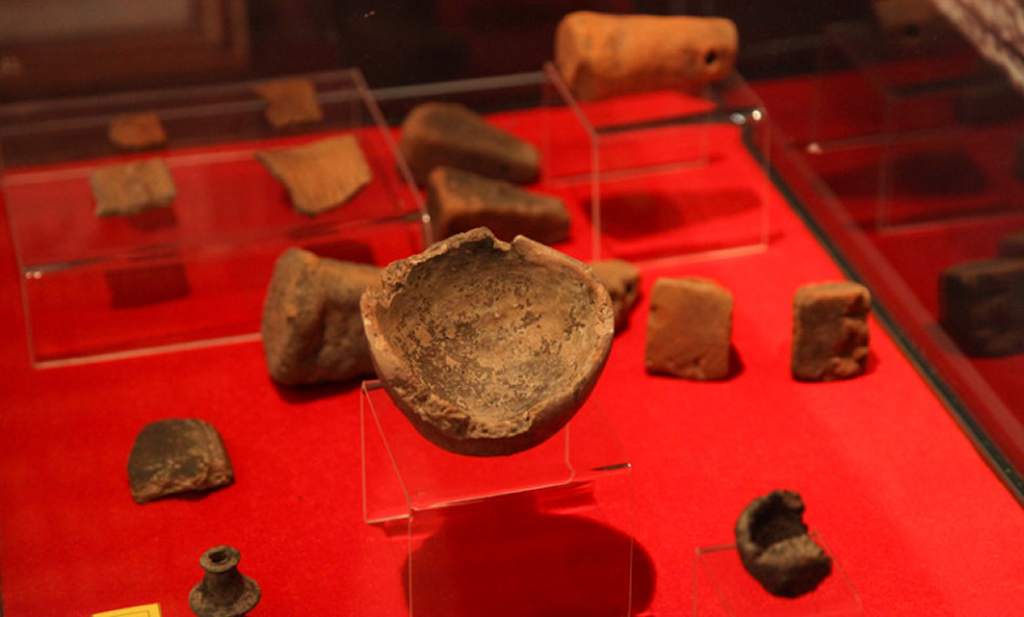
In addition to a set of sumptuous Montenegrin costumes, the ethnographic collection holds a unique stone chain that won the first prize at the Crafts Exhibition held in Podgorica in 1934. Among other exhibitions, there is a troop flag from the battle at Vučji do in 1876, as well as numerous decorations. As a special curiosity, there are on display the ritual book and the cross of the Priest Đorđe Kalezić, who took part in the People’s Liberation Struggle.
CENTRE FOR CULTURE ULCINJ
The Centre for Culture Ulcinj was established in 1994 by integrating all the institutions active in the field of culture within this municipality. Thus, it includes the Museum, whose holdings are classified into several collections: Archaeology, Ethnology, and Arts. It consists of three buildings: a church-mosque housing the archaeological collection, the premises where ethnological items are displayed, and Balšića Tower, now adapted to serve as a gallery.
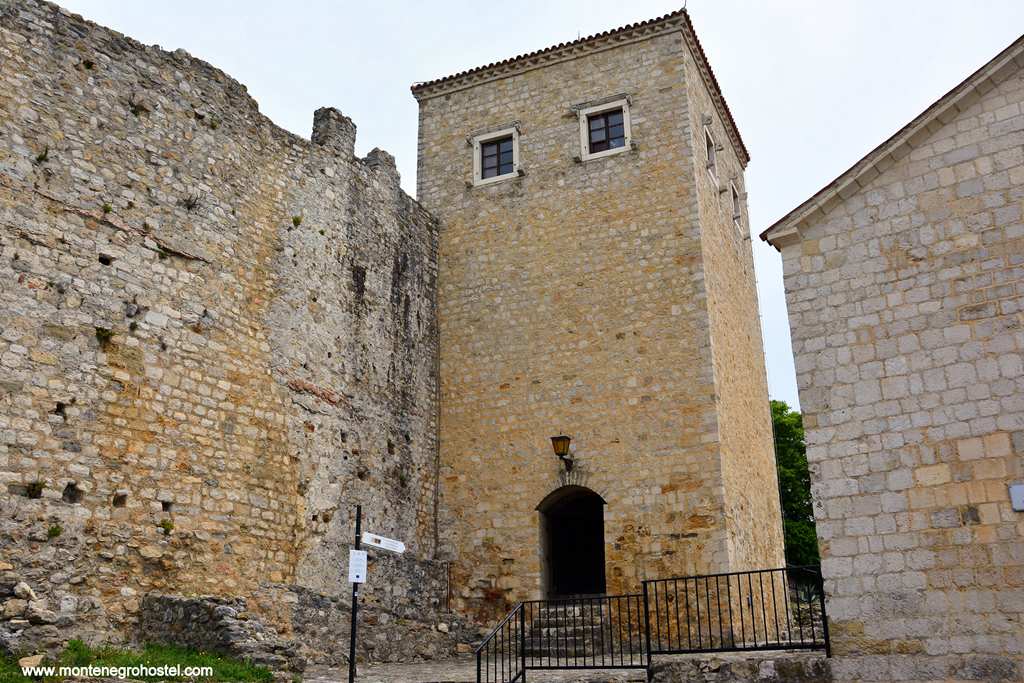
The once Square of Slaves, where the church mosque is located, is used as a peculiar exhibition space. The archaeological collection is on display in the Renaissance church from 1510, which was turned into a mosque in 1693. With its synthetic appearance, the building itself is a unique monument of the merging of the East and the West. The items dating back to the prehistoric, Hellenic, Hellenistic, Roman, medieval, and Turkish times were found within the town itself.
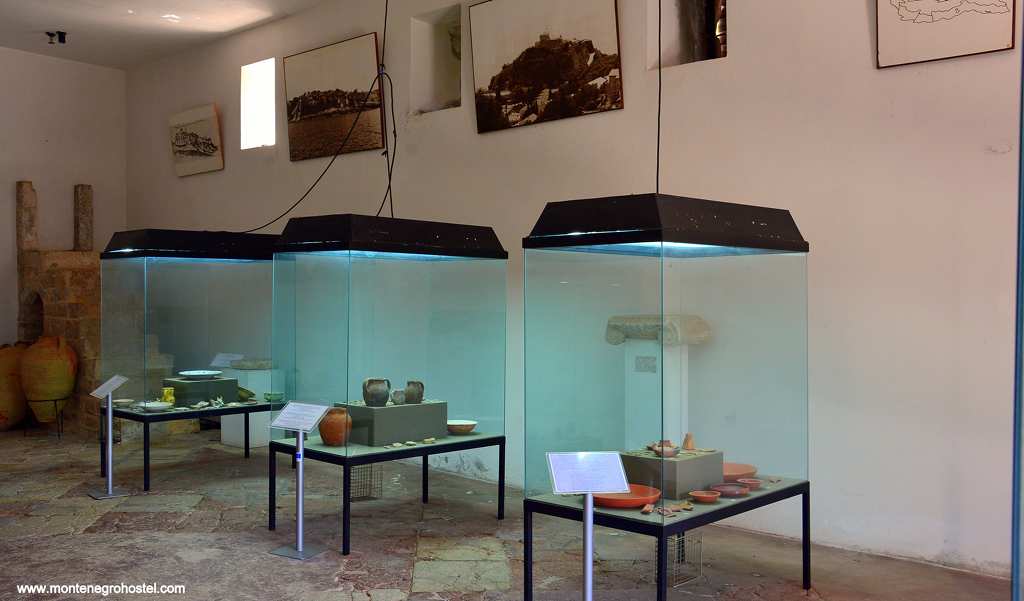
The displayed pottery includes Illyrian earthenware, Greek pottery: red-figure vases and lekythos, hydria, krater, amphorae, Roman pottery, medieval bowls, pots, Venetian jugs and plates, Turkish ewers and pitchers, and other various table and kitchenware. The following items stand out by their value: an ancient base with a Greek inscription dedicated to the Goddess Artemis and an ancient cameo.
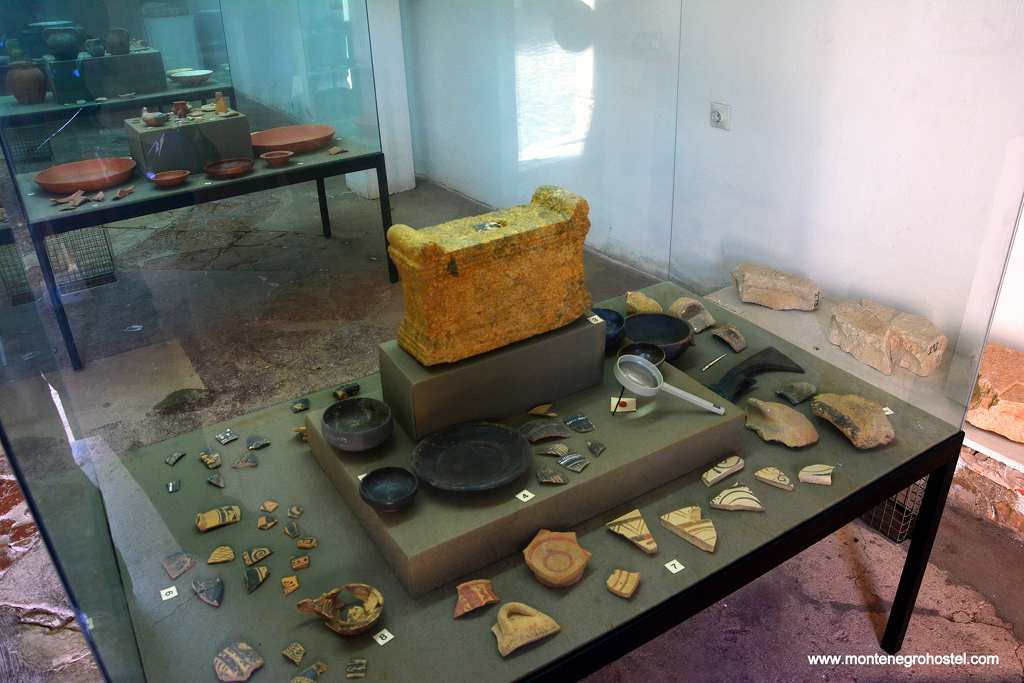
There are also displayed fragments of doorframes from late Ancient times, Ionian capitals, parts of the ciborium of a little church from the early 9th century, capitals and pillars of a cathedral, and other churches from the 13th and 16th centuries, as well as monuments with Latin and Arabic inspirations. There is also a separate collection of medieval coins with the examples of folar (bronze coins) from Ulcinj, having on the obverse an image of a fortress with three towers and the town doors and inscription Civitas Ducigni, and on the reverse an image of a lamb, the emblem of the town, Our Lady patroness of Ulcinj.
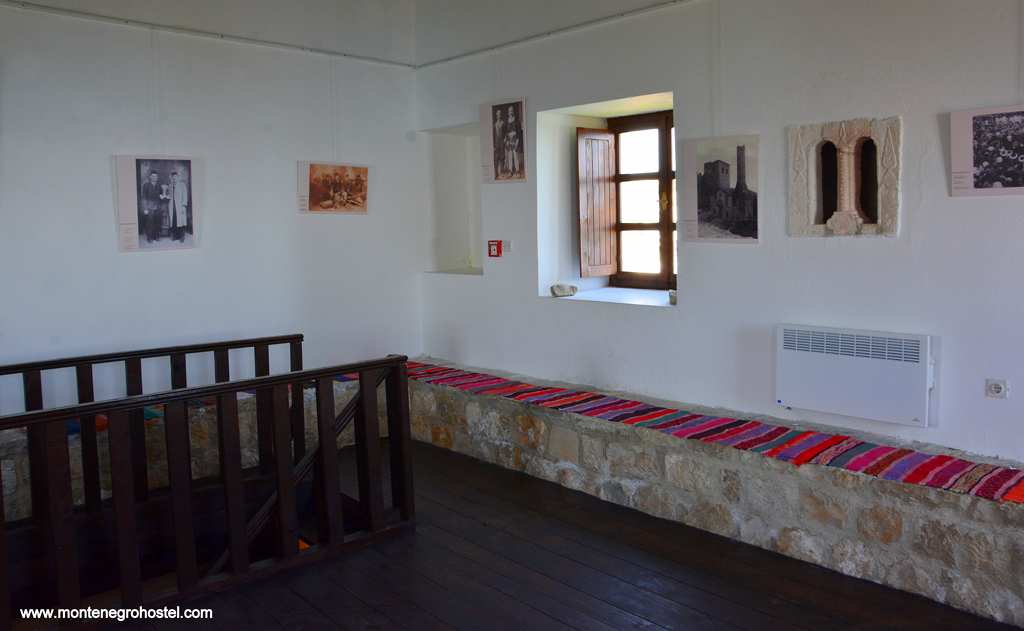
Balšić Tower is intended for exhibitions. On its last floor, there is a small exhibition dedicated to Shabbatai Cevi, a famous initiator of the Talmud reform. By its selection of characteristic items, the Ethnography Department depicts the development of the spiritual and material culture and the specific features of the ethnographic heritage of the Ulcinj area, harmoniously blending diverse influences.
PIVA MONASTERY
The Piva Monastery is located about 9 kilometers away from Plužine, on the road to Nikšić. The original location of the Monastery was at the source of the Piva River, but it was moved due to the construction of the accumulation lake for the hydropower plant.
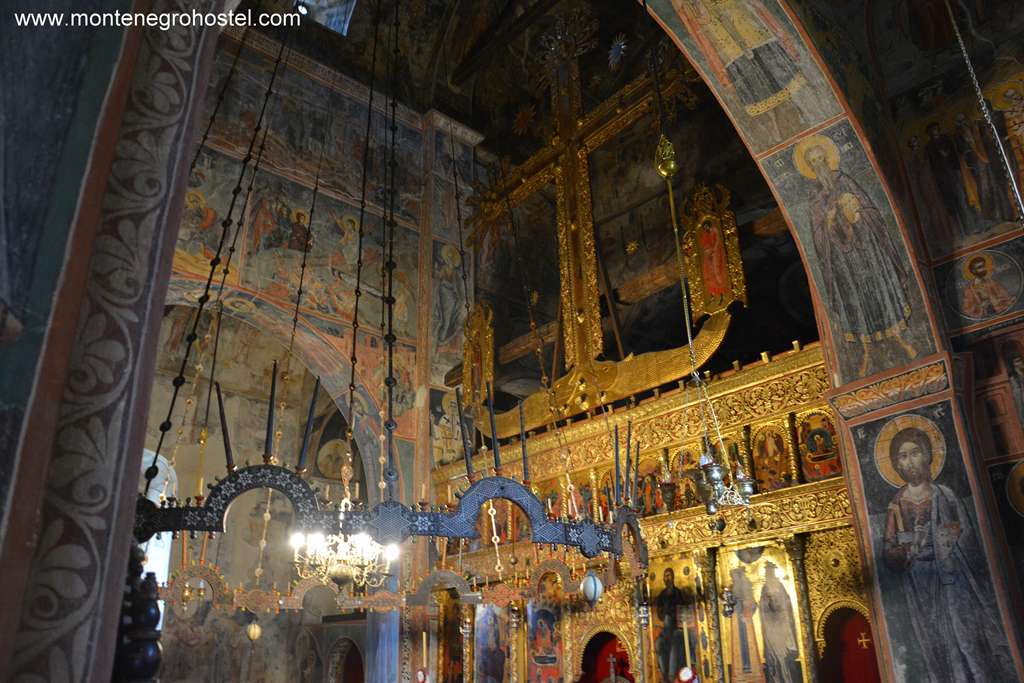
The works involving moving the monastery and returning about 1,200 square meters of frescoes on the walls lasted from 1970 to 1982. The monastery church dedicated to the Virgin's Ascension was built between 1573 and 1586, under the aegis of the Metropolitan Savatije of Herzegovina. It is a three-nave church with an elevated middle nave, without a dome, with a spacious apse and an altar space divided into the proskomedia and the deaconry.
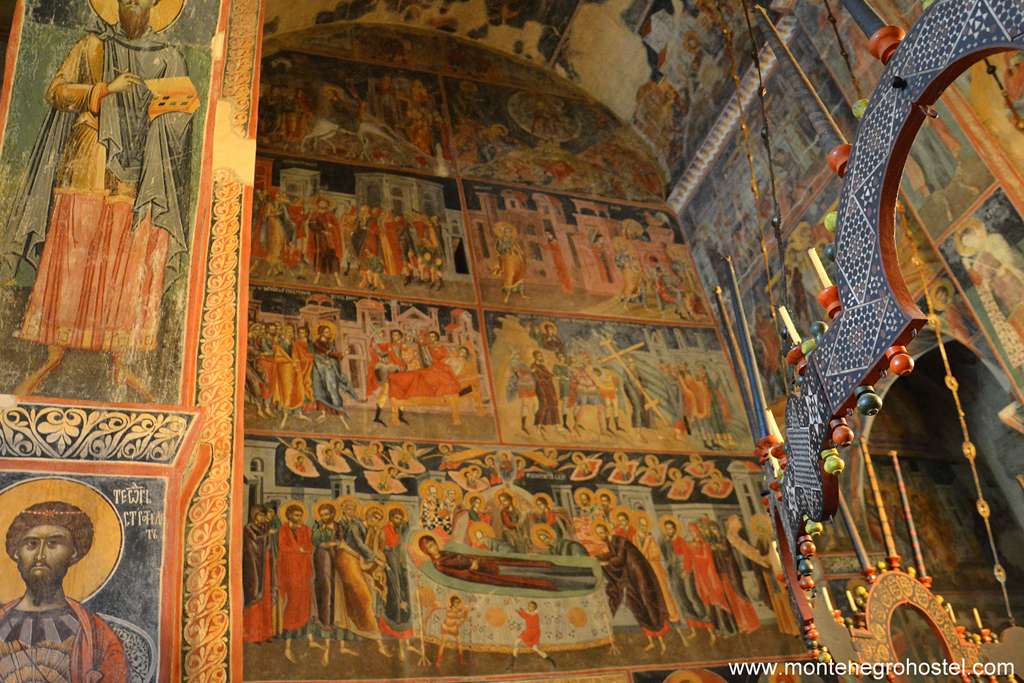
The church was painted in frescoes on two occasions. The main nave and a part of the narthex were painted in 1605 and 1606, while the decoration of the narthex was completed in 1926. The large nave shows the cycles of the Great Holidays, Christ's Suffering, and Christ's Miracles. In addition to these units, the events from the life of John the Predecessor and other saints are also depicted. The nave frescoes are the work of Greek and domestic masters. The fresco decoration of the narthex was made by the Priest Strahinja of Budimlje and Master Kir Kozma. The church interior is adorned with a wood-carved and gold-plated altarpiece, made by Longin and Kir Kozma, completed in 1638.
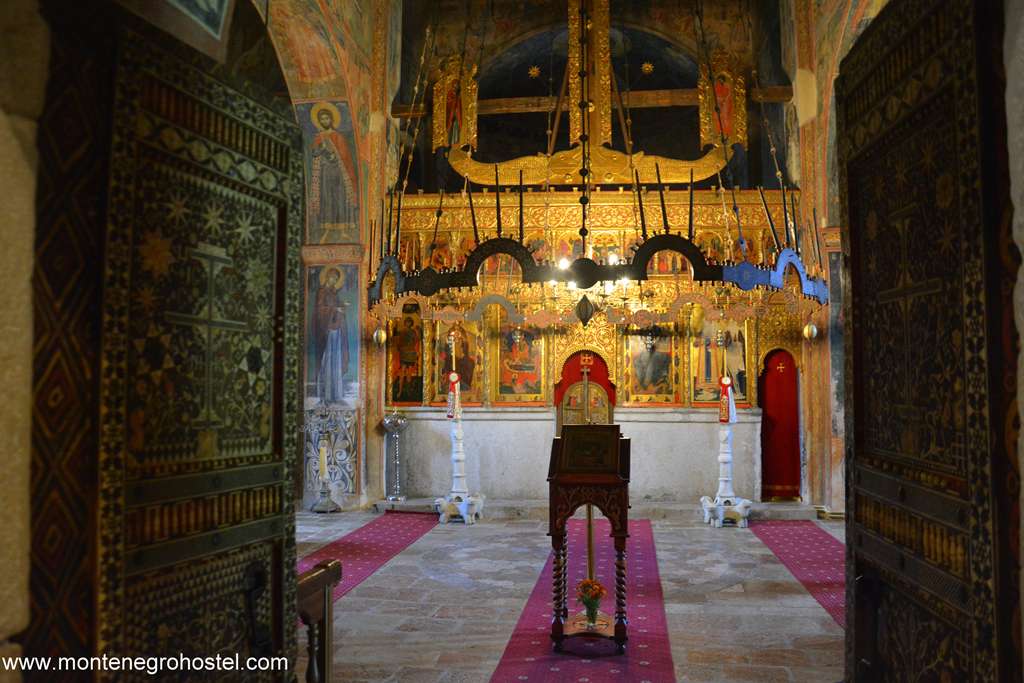
This is one of the most representative altarpieces from the late 16th and early 17th centuries in the whole post-Byzantine world. The monastery lodgings house one of the richest treasuries in Montenegro. It contains valuable collections of old manuscripts and printed books, icons, items of artistic crafts, church ritual items in silver and other metals, wooden crosses meticulously carved and covered with metal, church embroidery, numerous votive gifts, and items belonging to a renowned hero from Piva, Bajo Pivljanin. The inland wood doorway and the prior's table from 1601 show a high level of artistry.
CULTURAL CENTRE "VOJISLAV BULATOVIĆ STRUNJO"
The Homeland Museum in Bijelo Polje was founded in 1957. The museum building is a monument of culture in itself, built from 1889 to 1905 for the needs of ruždija (secular secondary school). After the liberation of Bijelo Polje from Turkish domination in 1912, this building housed the State-Real Gymnasium.
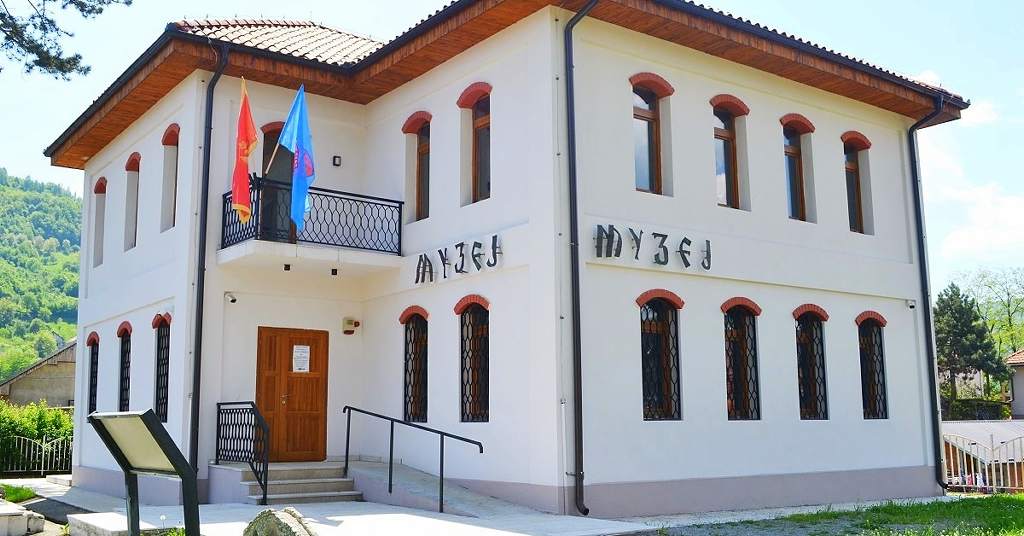
After World War Two, it was put to various purposes until eventually being given to the Homeland Museum in 1957. The Museum was designed as a mixed-type institution aimed at collecting and presenting movable monuments from the territory of the Bijelo Polje municipality. The holdings are categorized into collections: the archaeological, ethnographic, historic, artistic, numismatic, and the collection referring to the People's Liberation Struggle.
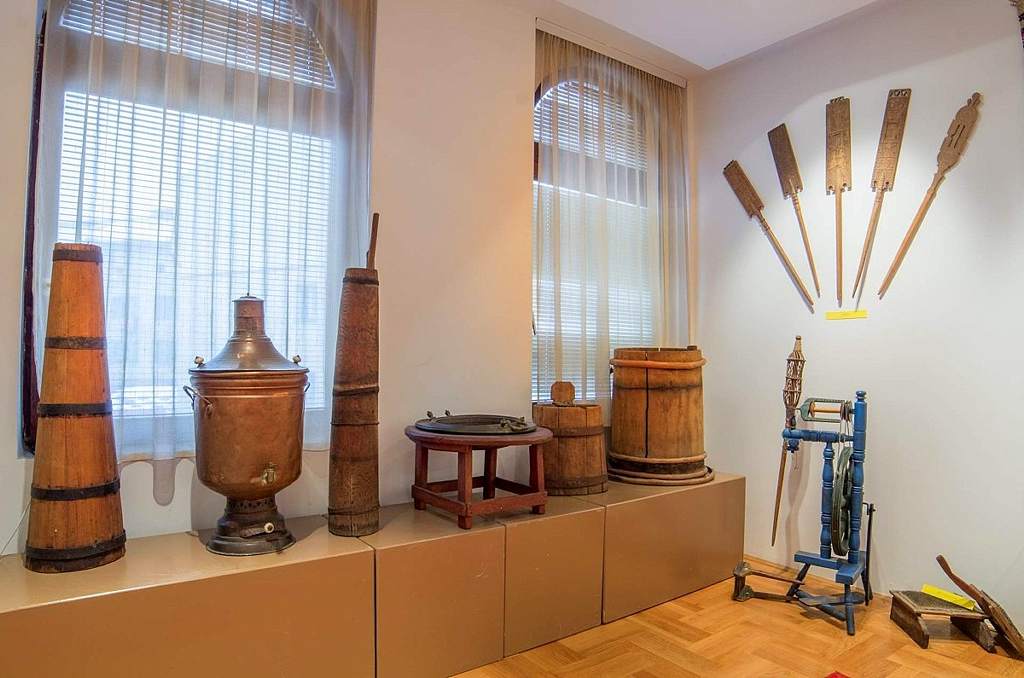
As for exhibitions, there is a permanent display providing an insight into the political, military, economic, and cultural history of the Bijelo Polje area, divided into several thematic units. The archaeological collection contains exhibits from the Neolithic, the Ancient Era, and the Middle Ages. It includes the finds from the Neolithic site of Bijelići, a pre-Romanesque pillar from Majstorovina, an ax of the Montenegrin-Albanian type, a Roman plow, and medieval weapons, as well as mining tools from the Brskovo mine.
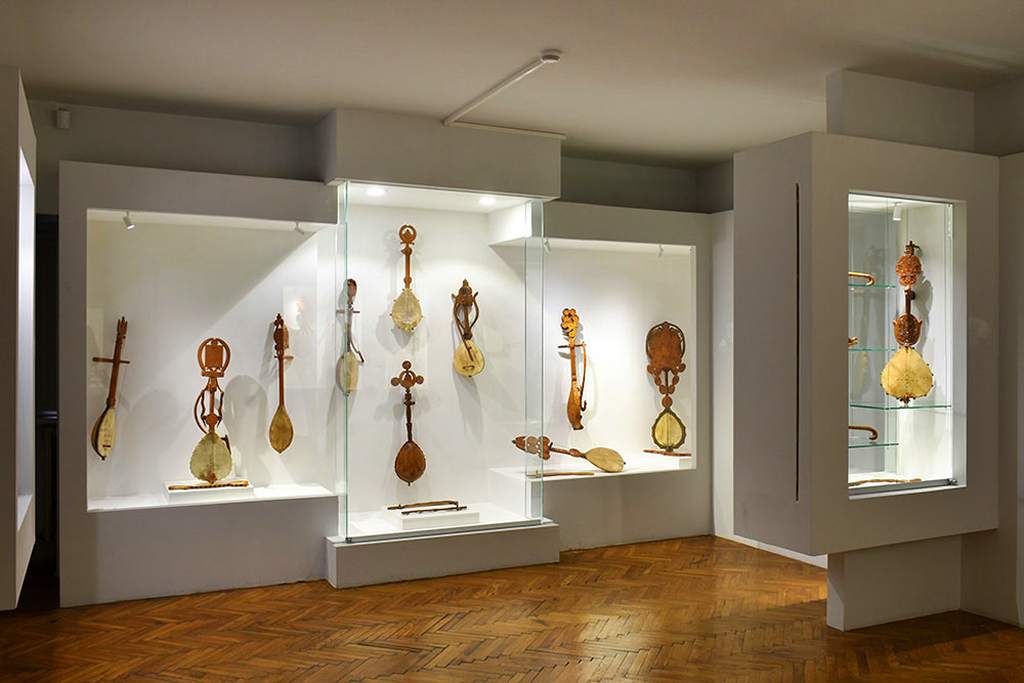
The ethnographic collection abounds in various belts, buckles, national costumes, numerous personal items, and ornaments. The interior of the urban house in Bijelo Polje has been reconstructed in one part of the Museum. The historic collection has on display: personal weapons, flags, and written documents from the period of liberation from Turkish domination, the Balkan Wars, and World Wars One and Two. The numismatic collection holds coins in circulation in these areas. The greatest value is attached to a medieval coin minted in Brskovo. The Museum display holds some selected works of painters from Bijelo Polje, as well as copies of works of the famous Lazović family of painters.
MUSEUM OF POLIMLJE IN BERANE
The Museum of Polimlje in Berane was established in 1953 as a regional museum of complex type for the territory of Gornje Polimlje (Upper Polimlje): Berane, Plav, Andrijevica, Rožaje, and Bijelo Polje. The building housing today's Museum was built in the early 20th century for the needs of the Teetotal Youth and Falconers' Society.
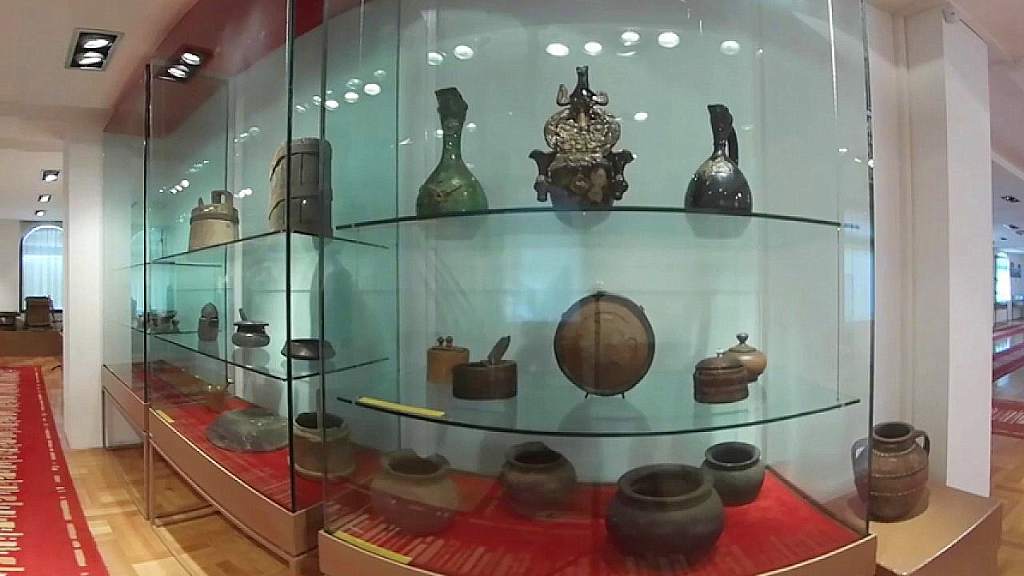
The Museum holds the following collections: archaeological, ethnographic, artistic, numismatic, heraldic, natural, and a collection of photographs. According to the current records, these collections hold more than 4,500 items. The Museum of Polimlje holds an expert library of about 3,000 books. The archaeological collection holds weapons, tools, ceramics, and ornaments from the Neolithic, Illyrian, and Roman times. The holding includes valuable material from the Neolithic site of Beran krš (Beran's rocks).
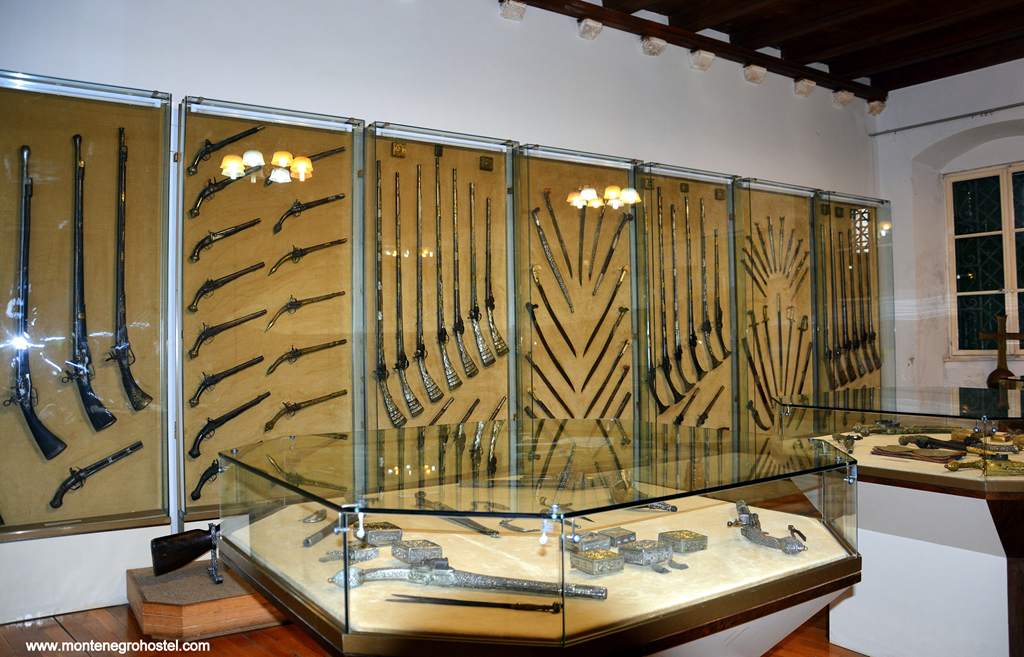
The figurines and ceramics of various shapes and decorations show that the culture from this site is similar to the Vinča culture. Some elements from the coast may also be noted, a distinctive feature of the Neolith in Polimlje. The Early Christian plaques from the church in Budimlje are also interesting. The Illyrian Era is presented with various items of weapons and tools. The particular value of the archaeological collection is presented by thirteen amber items depicting hunting scenes in Lisijevo polje.
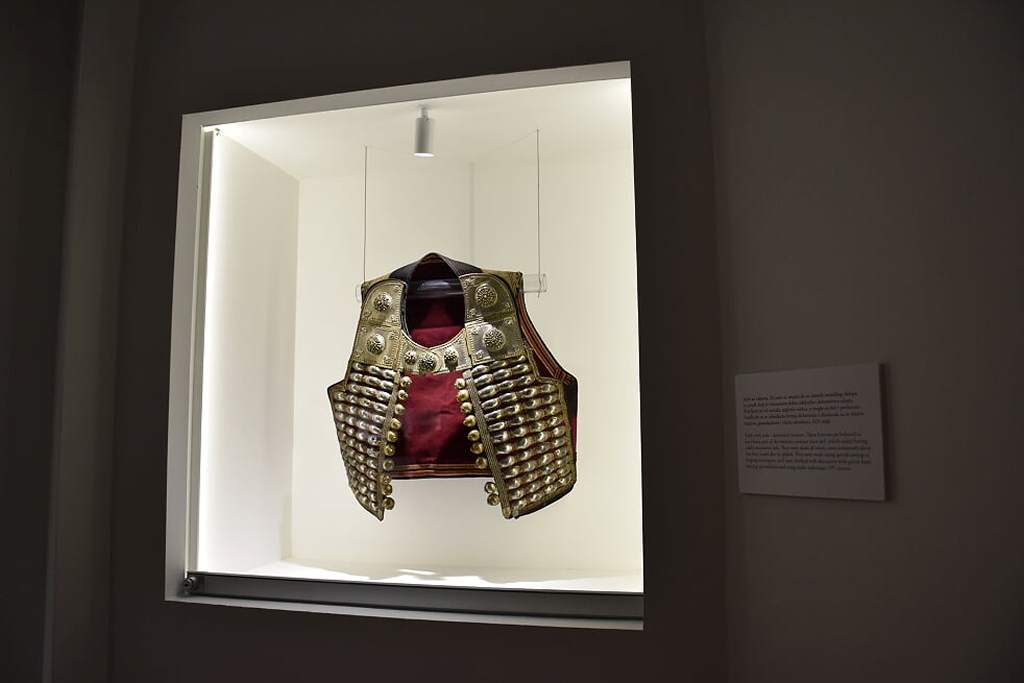
The Museum in Polimlje holds a chain-mail tunic found accidentally near Berane, at the place called Donja Ržanica. It weighs 18,5 kg, and it is presumed to date back to the Crusaders' time. The Museum displays several Roman tombstones with preserved inscriptions, remnants of medieval heating pipes, and frescoes from the monasteries of Ćelije and Študikova. The ethnographic collection also holds some valuable items: national costumes, ornaments, manufacturing tools, and items related to the daily life of the local population. The display holds the works of distinguished academic painters from Berane.
HOMELAND MUSEUM-GANIĆA KULA IN ROŽAJE
The Homeland Museum in Rožaje was established in 1991. The construction of the new building started in 2001 as a replica of the Ganić Tower from 1798, a monument of the traditional architecture of the Rožaje area. The characteristic architecture of the once Ganić Tower is the symbol of the town and features in the official coat-of-arms of the municipality of Rožaje.
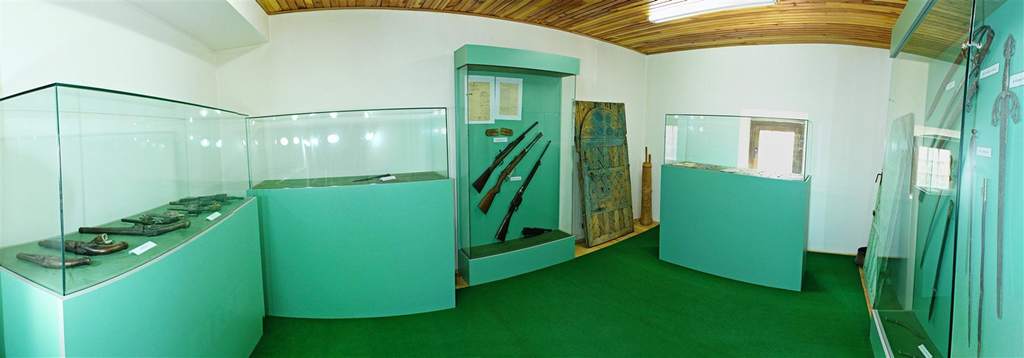
The holdings of the Homeland Museum and classified into three thematic units: textiles, household items, and tableware. The items are well preserved, of exquisite and lavish making, both in technique and material. They cover the period from the 18th to the 20th century and are illustrative of the life of ordinary people, housing culture, clothing, arts, and crafts of the Rožaje area in the spirit of Islamic tradition. They also speak of the Influences of other cultures and civilizations reaching these areas.
CENTRE FOR CULTURE KOLAŠIN
The Homeland Museum, as a part of the Centre for Culture Kolašin, was established in 1903, serving as a prison during World War Two. On the ground floor, there is a permanent museum display, and the first floor serves occasional thematic exhibitions of various content.
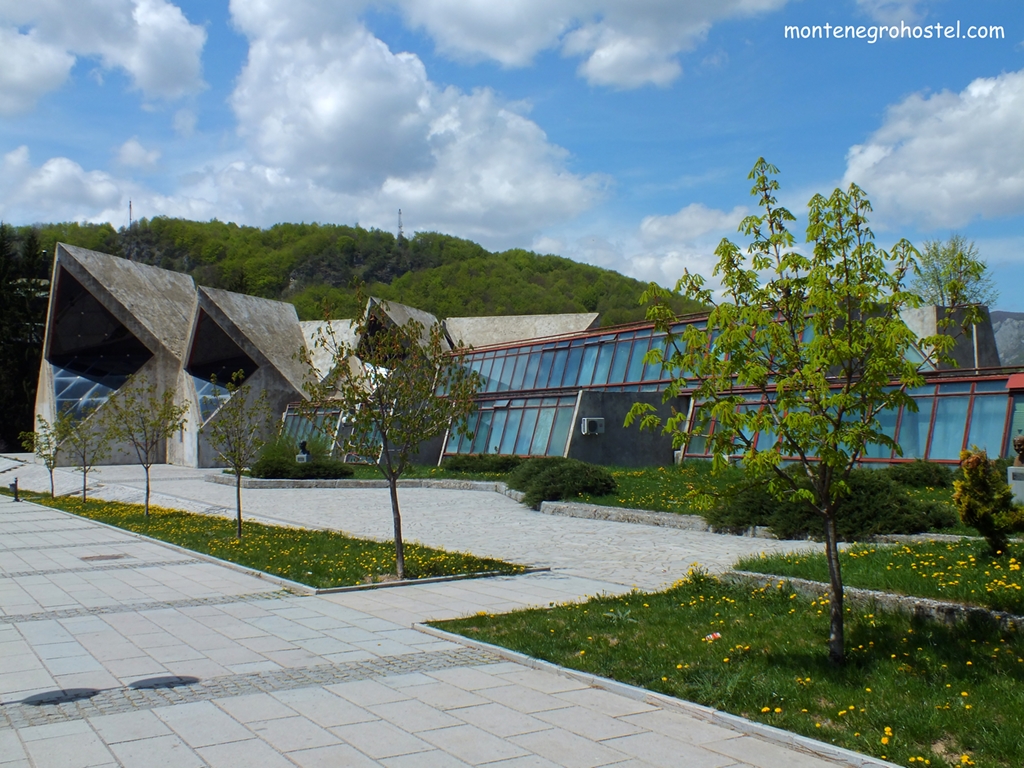
The permanent display is divided into three segments: the older history of Kolašin, the ethnographic collection, and Kolašin during WWII and the socialist revolution. The Museum also holds a provisional library. Within the municipality of Kolašin, there is also the Memorial Home with some museum items linked to the ZAVNO (County Anti-fascist Liberation Council) of Montenegro and Boka.
HOMELAND MUSEUM
The Homeland Museum in Pljevlja was opened in 1953. The museum premises consist of several rooms of the Centre for Culture in Pljevlja. The richness and diversity of holdings impose the need for finding the proper premises to meet the basic requirements of modern museums. The Homeland Museum holds, collects, processes, and presents museum items from the area of Pljevlja. The holdings have been classified into several collections: archaeological, ethnographic, historic, numismatic, and artistic.
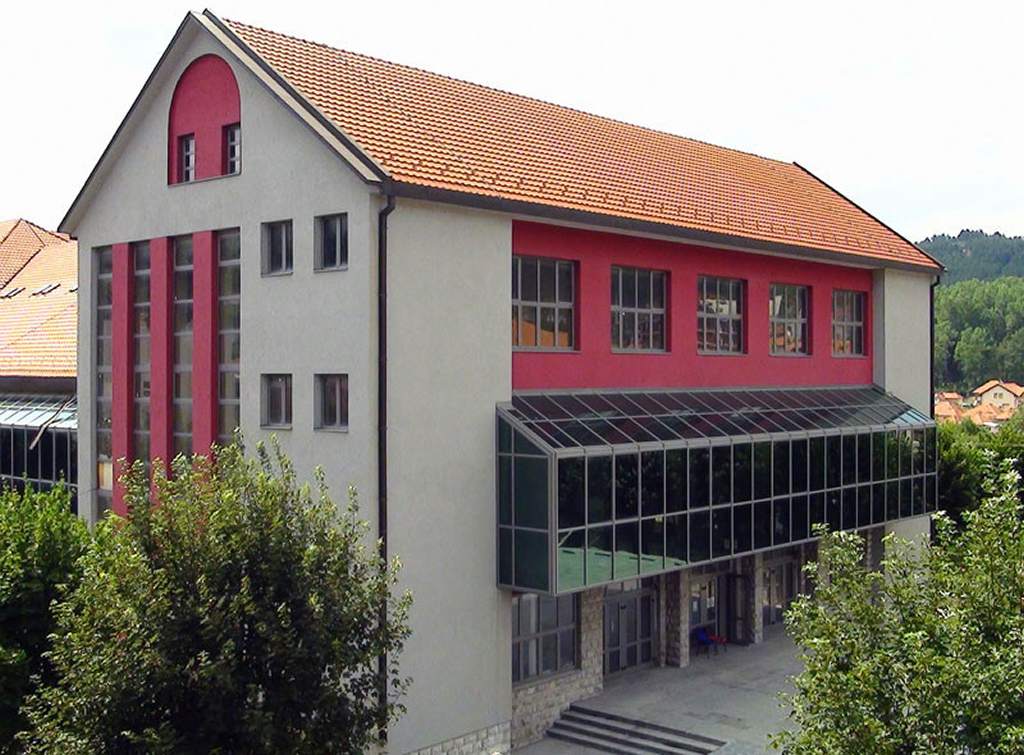
Valuable items from the archaeological collection illustrate the significance of archaeological sites in the area. The items found at the site of Medena stijena (rocks in the Ćehotina River Canyon) are of particular importance. The items found on this site belong to the cultures of the early Palaeolithic, Mesolithic, Copper, and Bronze Age. The stone tools from the oldest layers of Medena stijena show certain similarities with the excavations at Franchi Cave in Argolid Gulf in Greece.
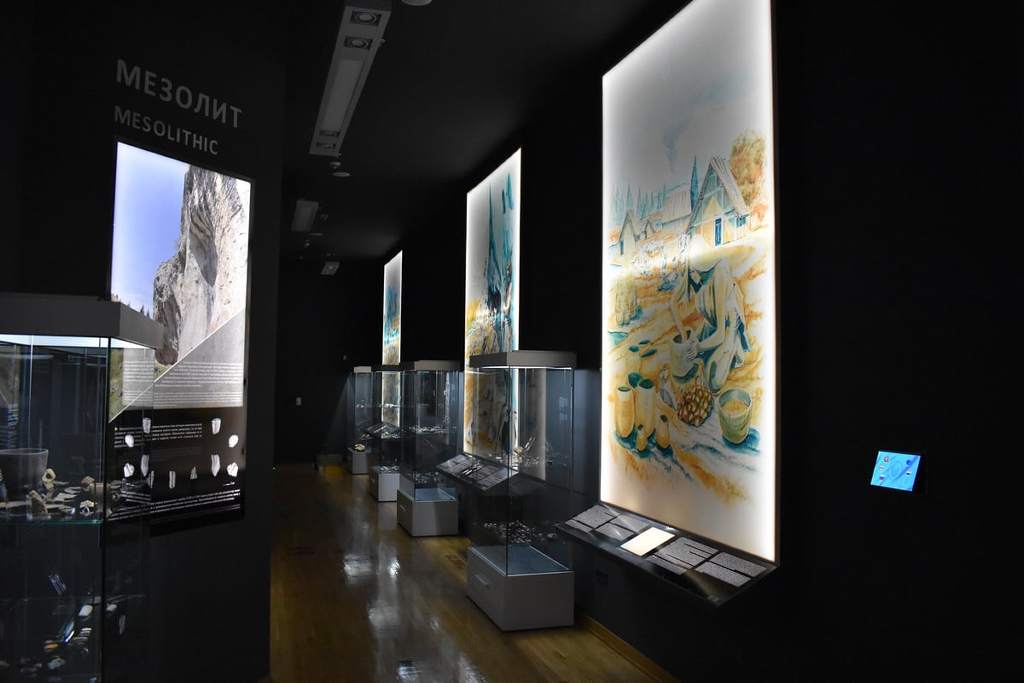
The items from Medena stijena and several more natural shelters in the Canyon of Ćehotina River prove that this area of Montenegro was intensively inhabited during the Late Pleistocene. There are also remnants of an ancient town known among scientists as the Municipium S...Based on the displayed epigraphic monuments, it may be presumed that this town existed in 150 BC.
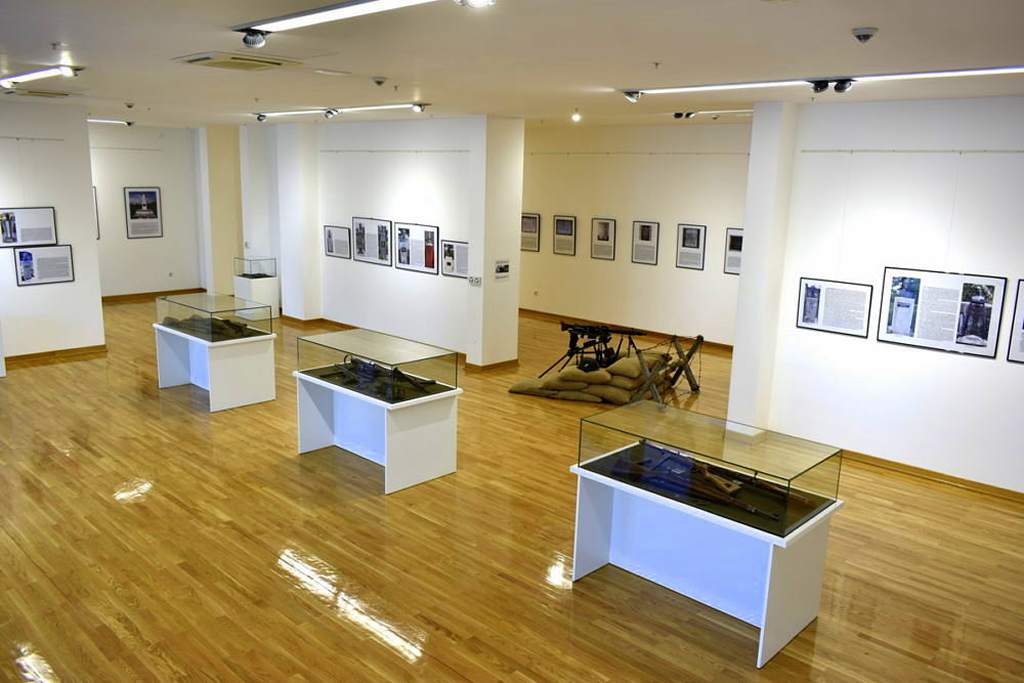
The monuments from this site are particularly interesting and are significant for comprehending the development of Roman art, here intermingled with the local, Illyrian-Celtic tradition. The Ethnographic Department holds over 1,000 items representative of the material and spiritual culture of the local population. Valuable old costumes, embroidery, jewelry, weapons, and items with pronounced artistic features reflect well-developed craftsmanship. The Historic Department houses the items related to the Balkan Wars and World Wars One and Two.
Montenegro Hostel Team






















































































